Non-human animals having humanized Fc-gamma receptors
Murphy , et al. Feb
U.S. patent number 10,555,507 [Application Number 15/277,092] was granted by the patent office on 2020-02-11 for non-human animals having humanized fc-gamma receptors. This patent grant is currently assigned to Regeneron Pharmaceuticals, Inc.. The grantee listed for this patent is Regeneron Pharmaceuticals, Inc.. Invention is credited to Cagan Gurer, Lynn Macdonald, Karolina A. Meagher, Andrew J. Murphy, Naxin Tu.
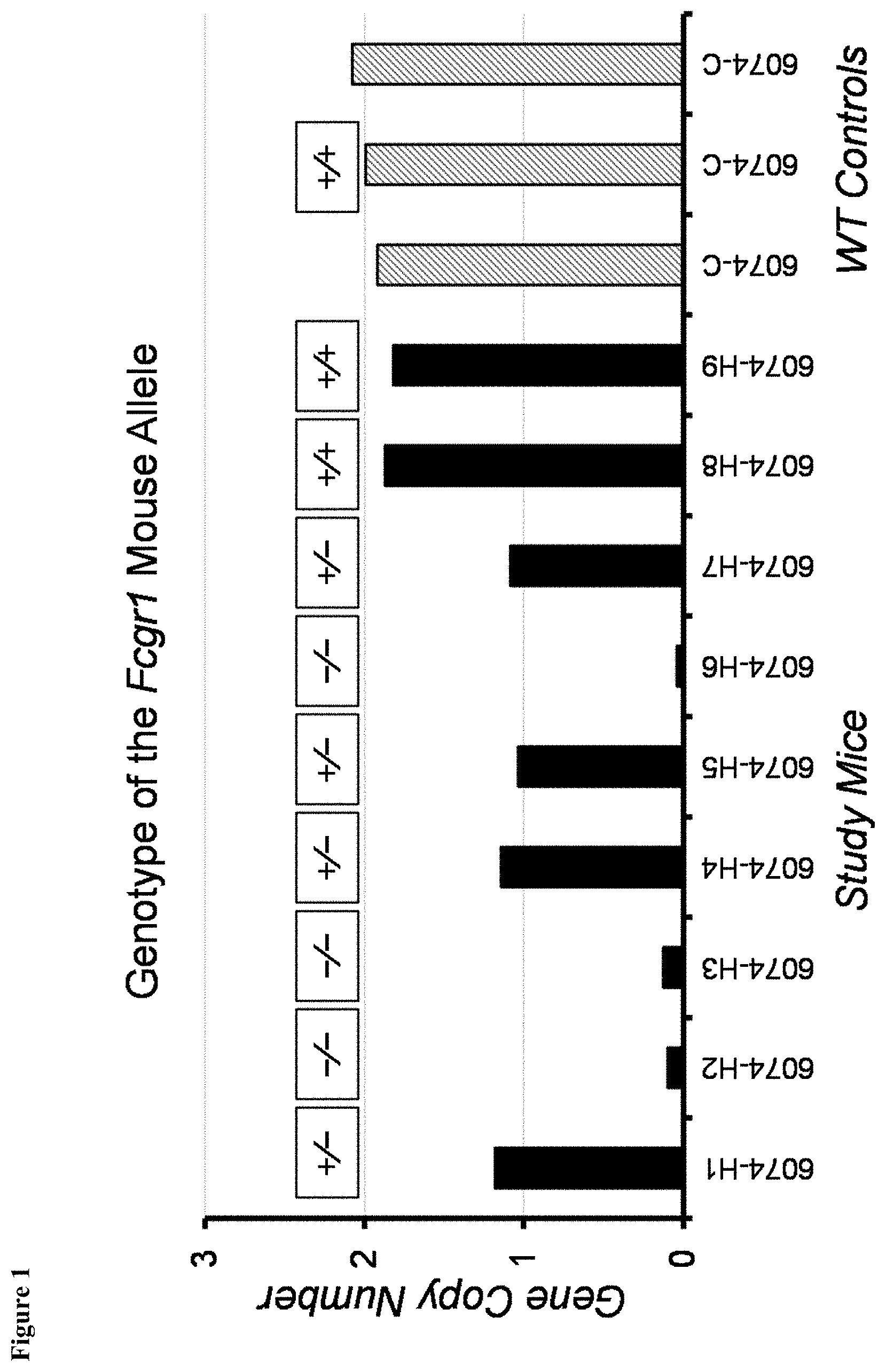
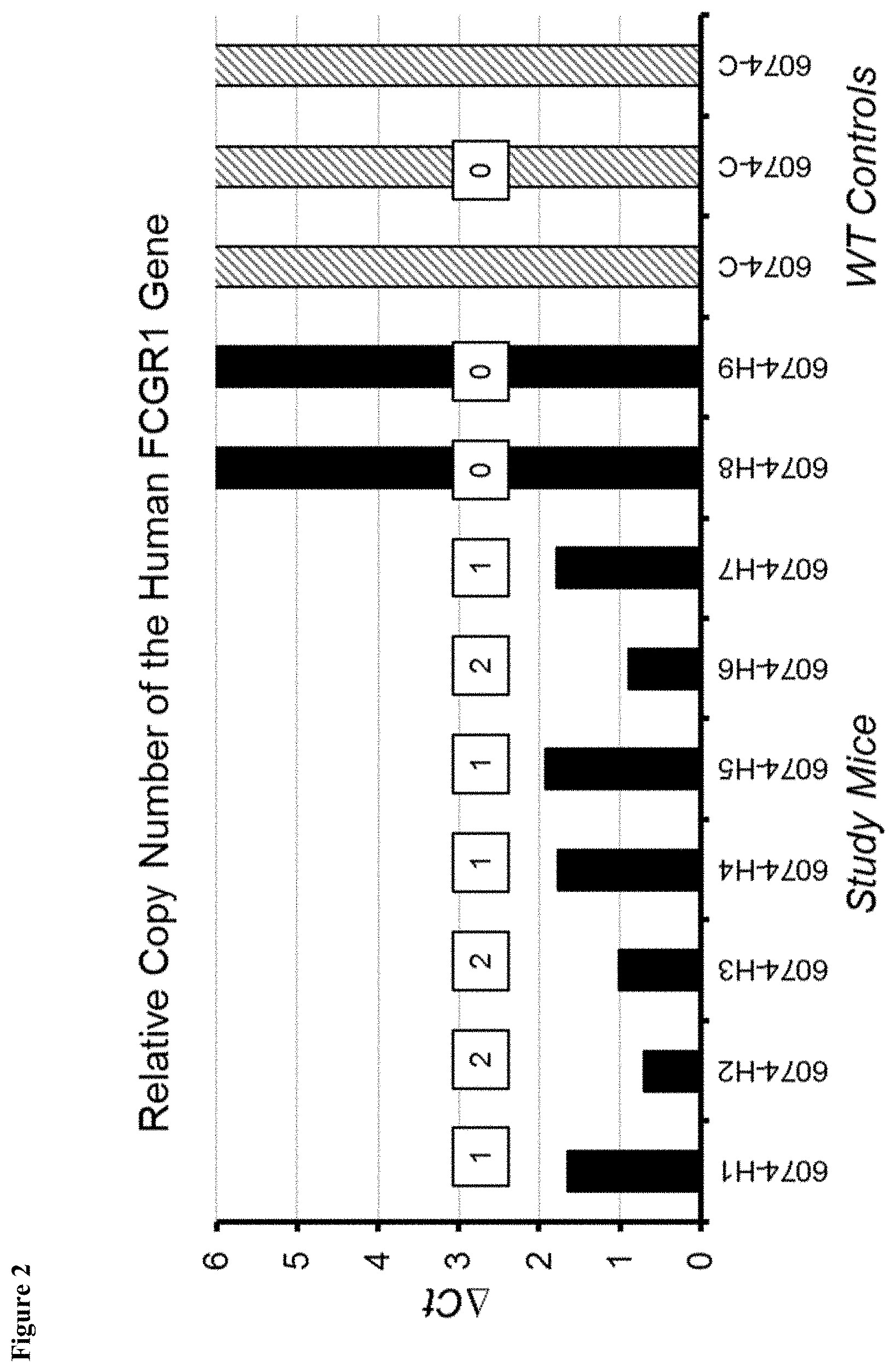
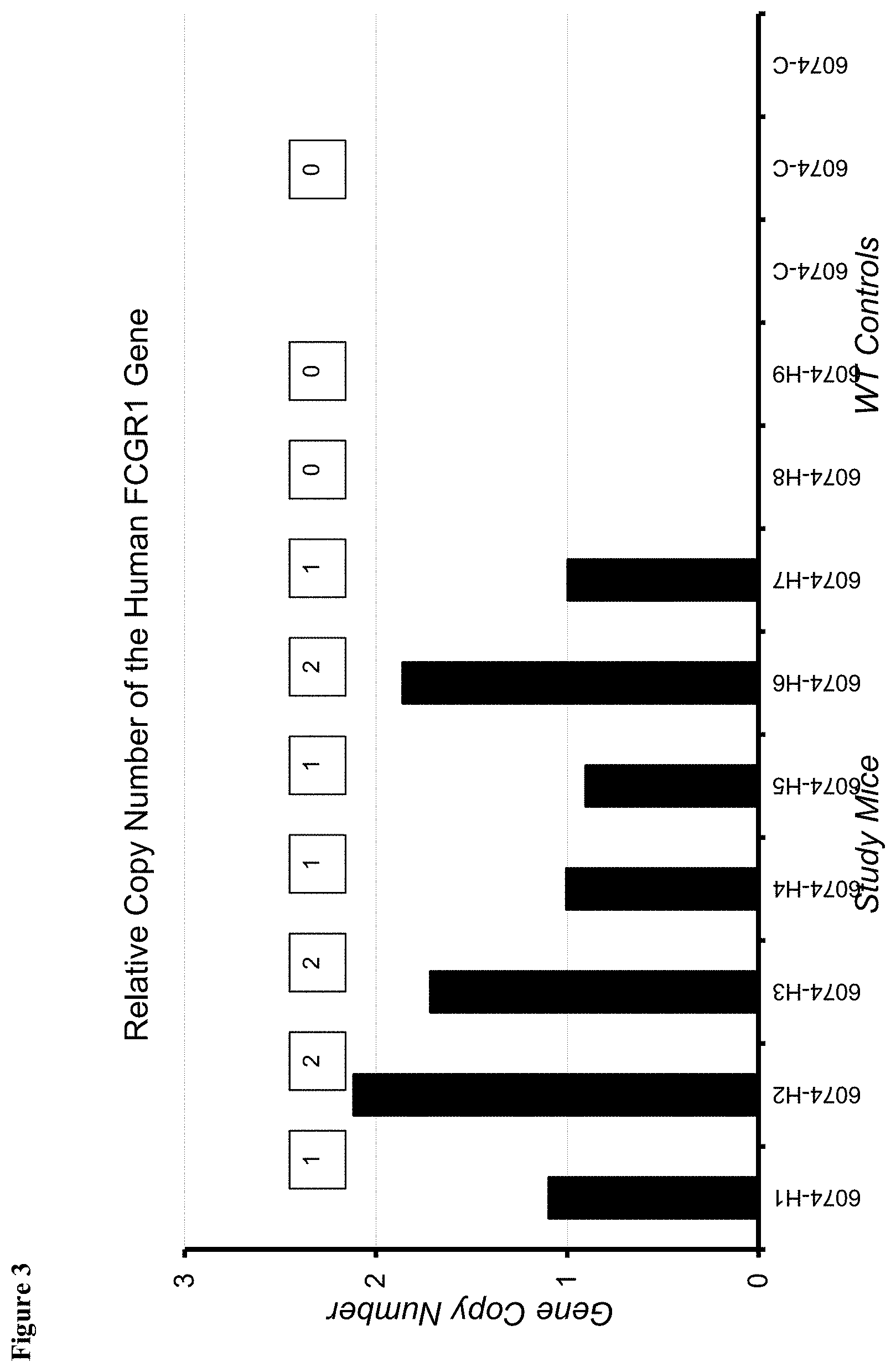
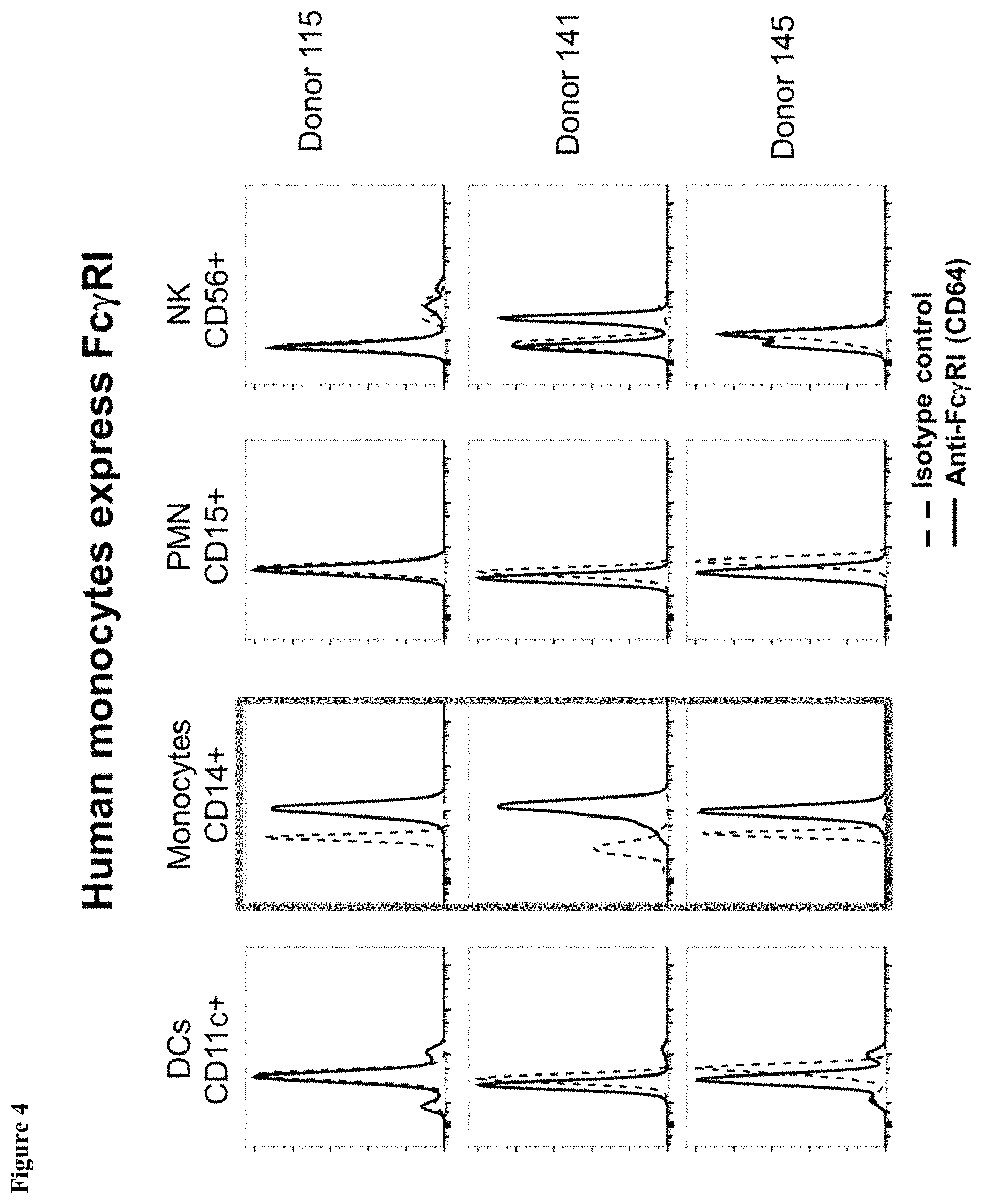
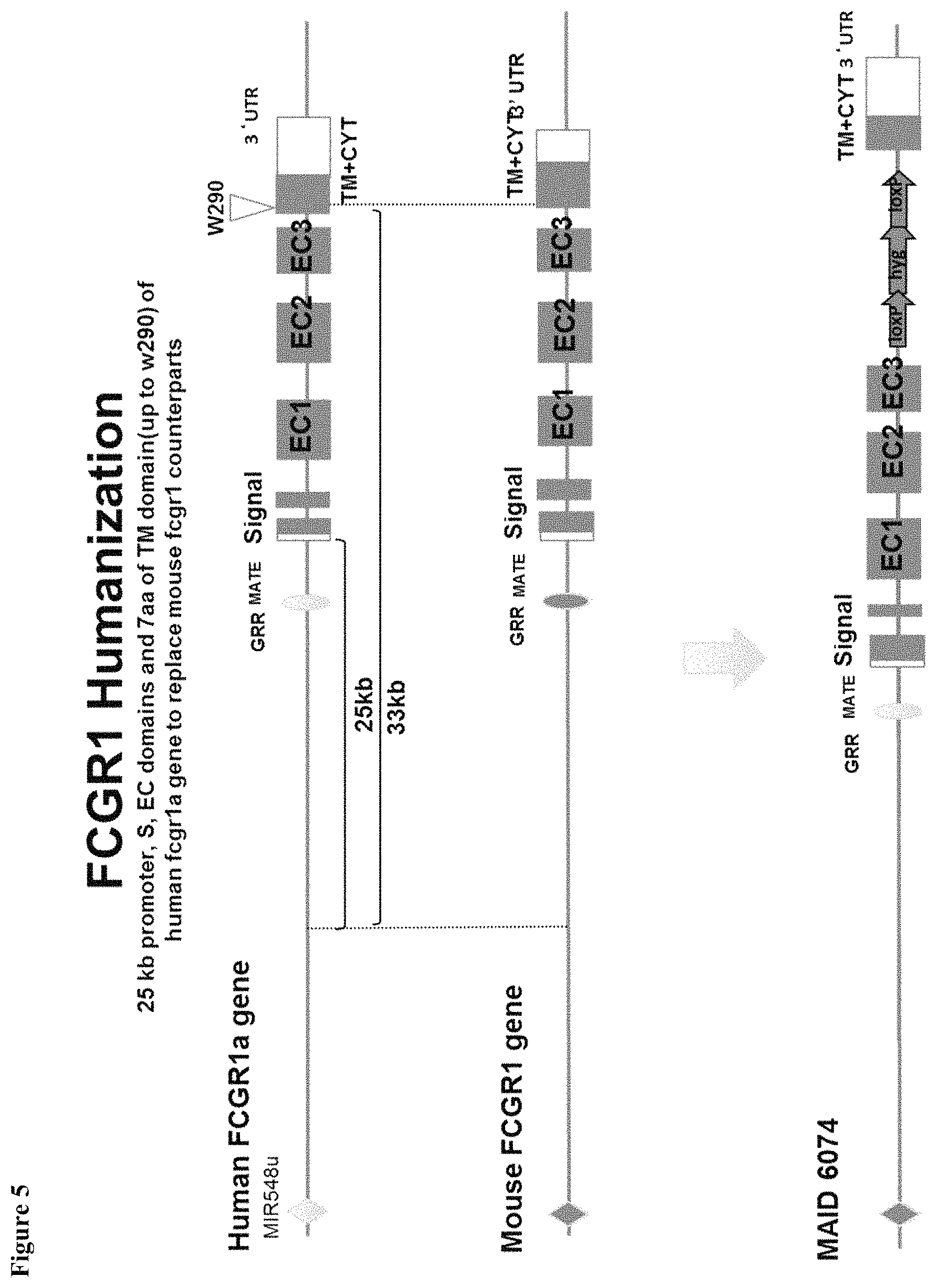

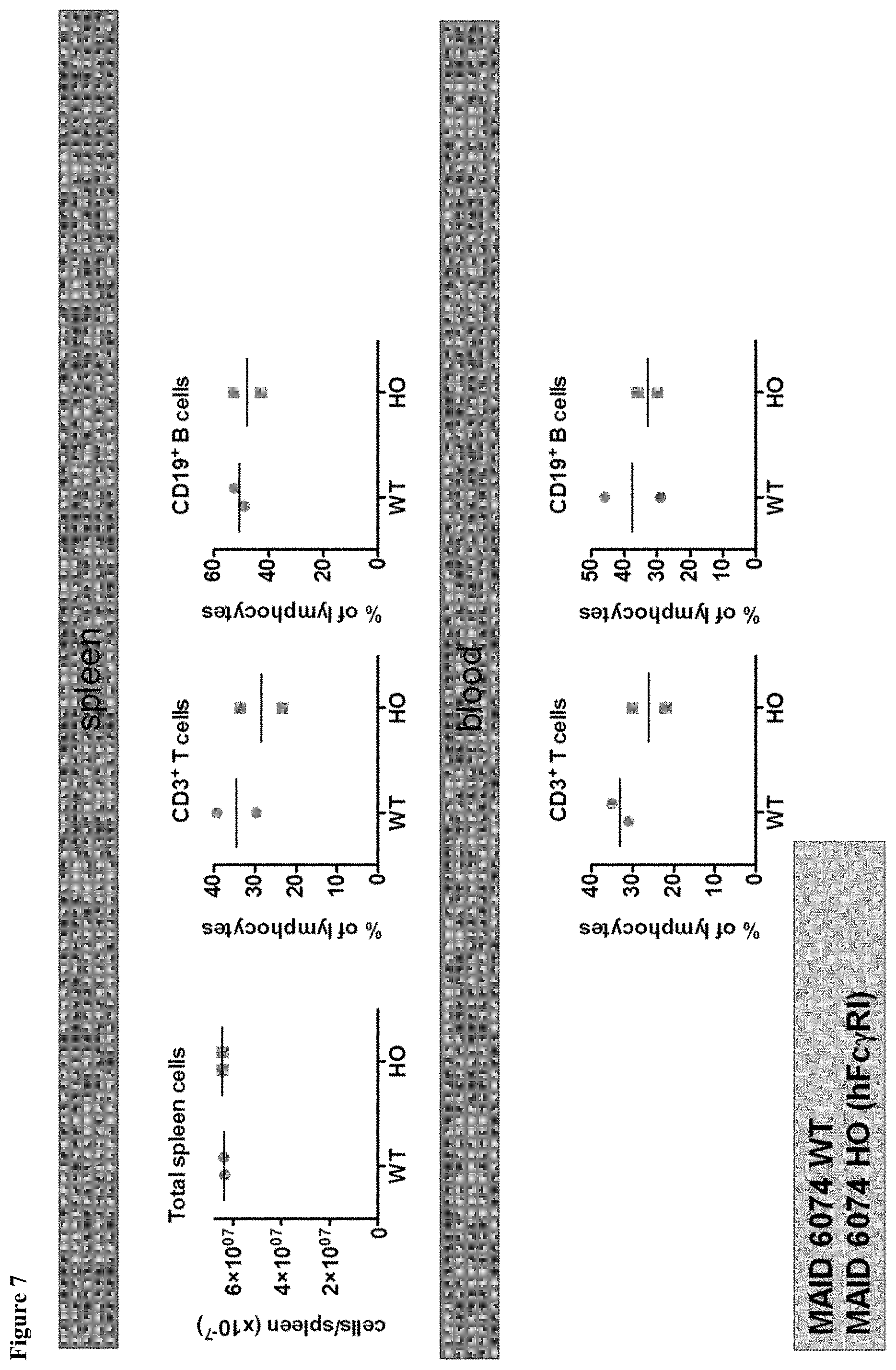
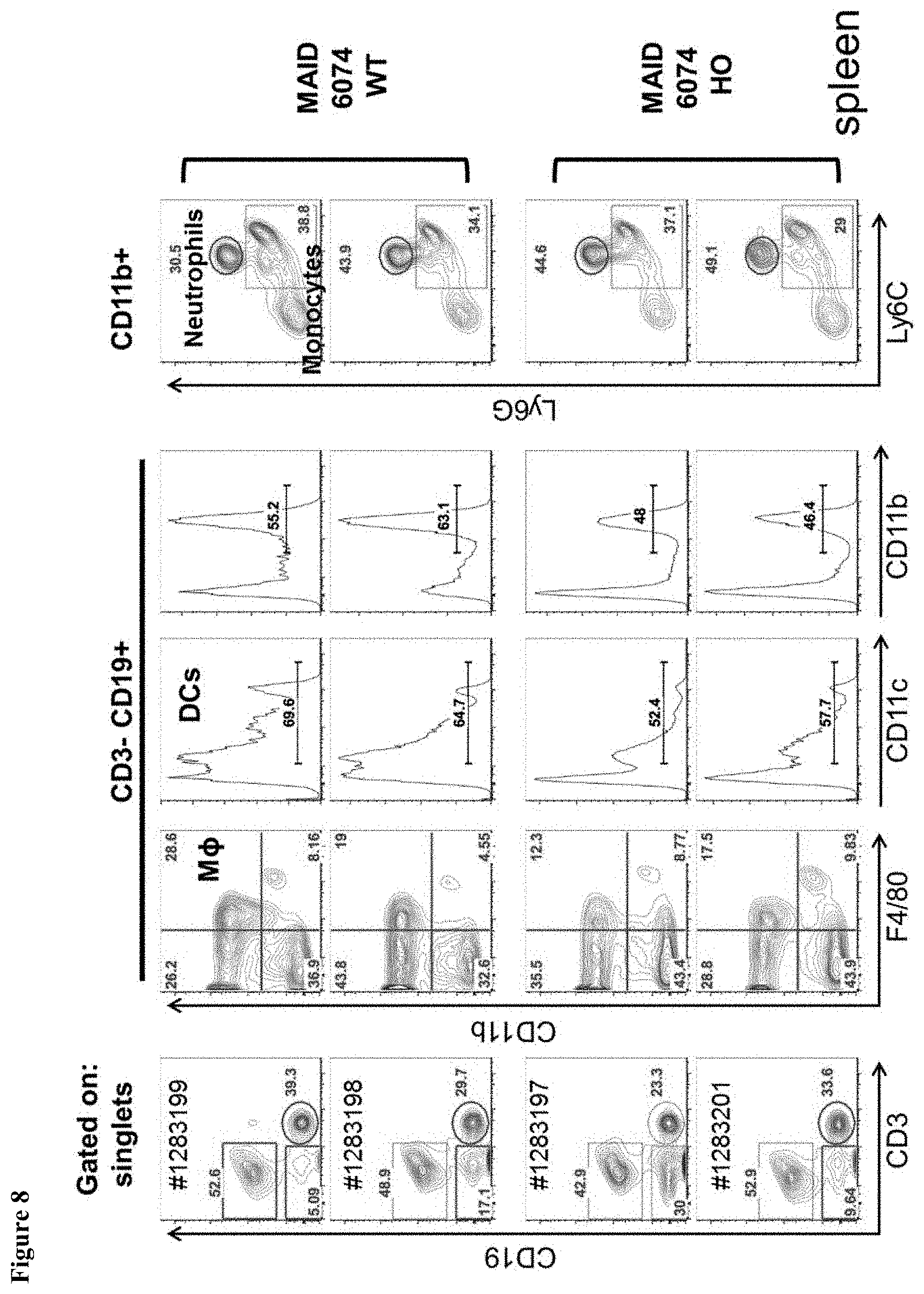
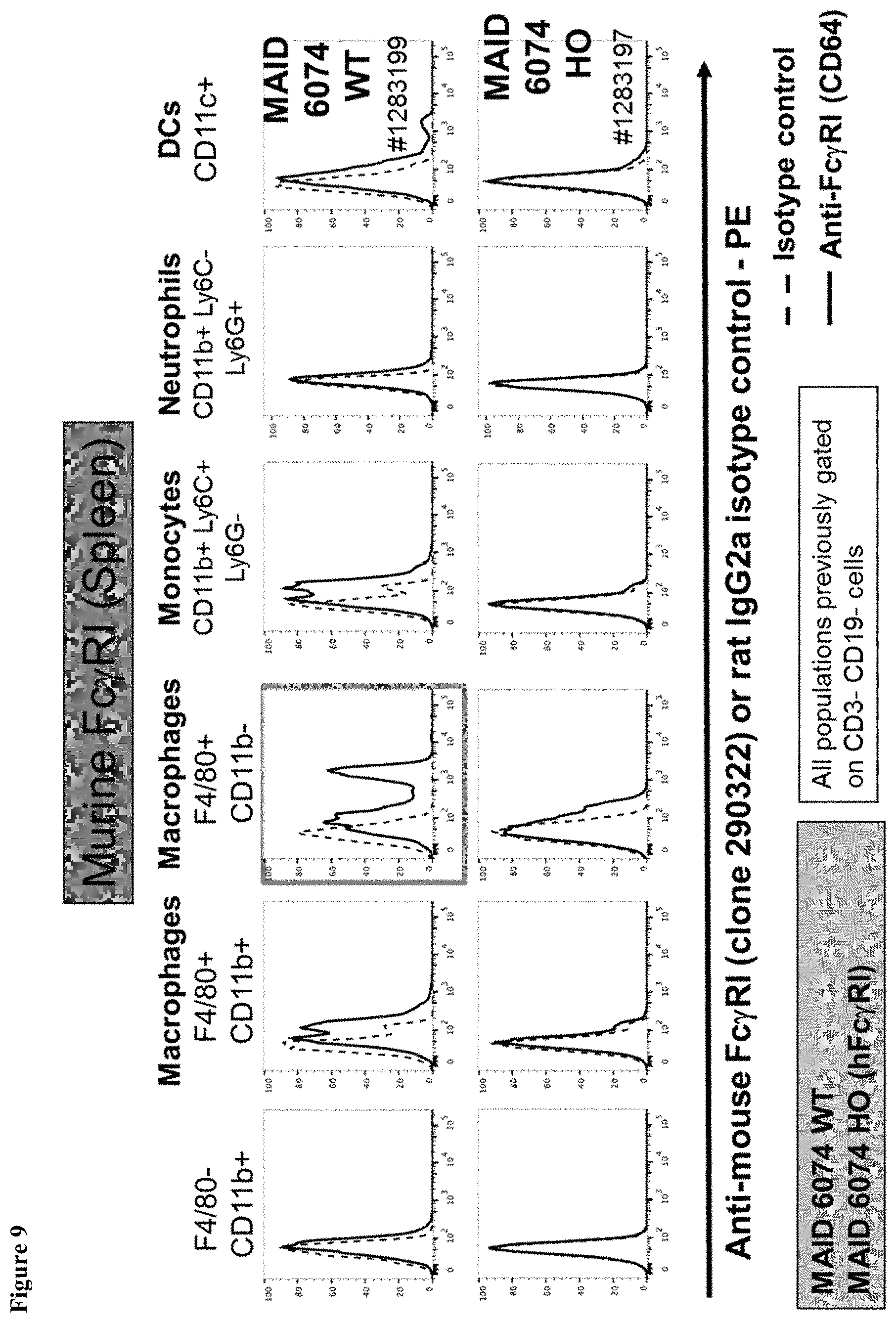
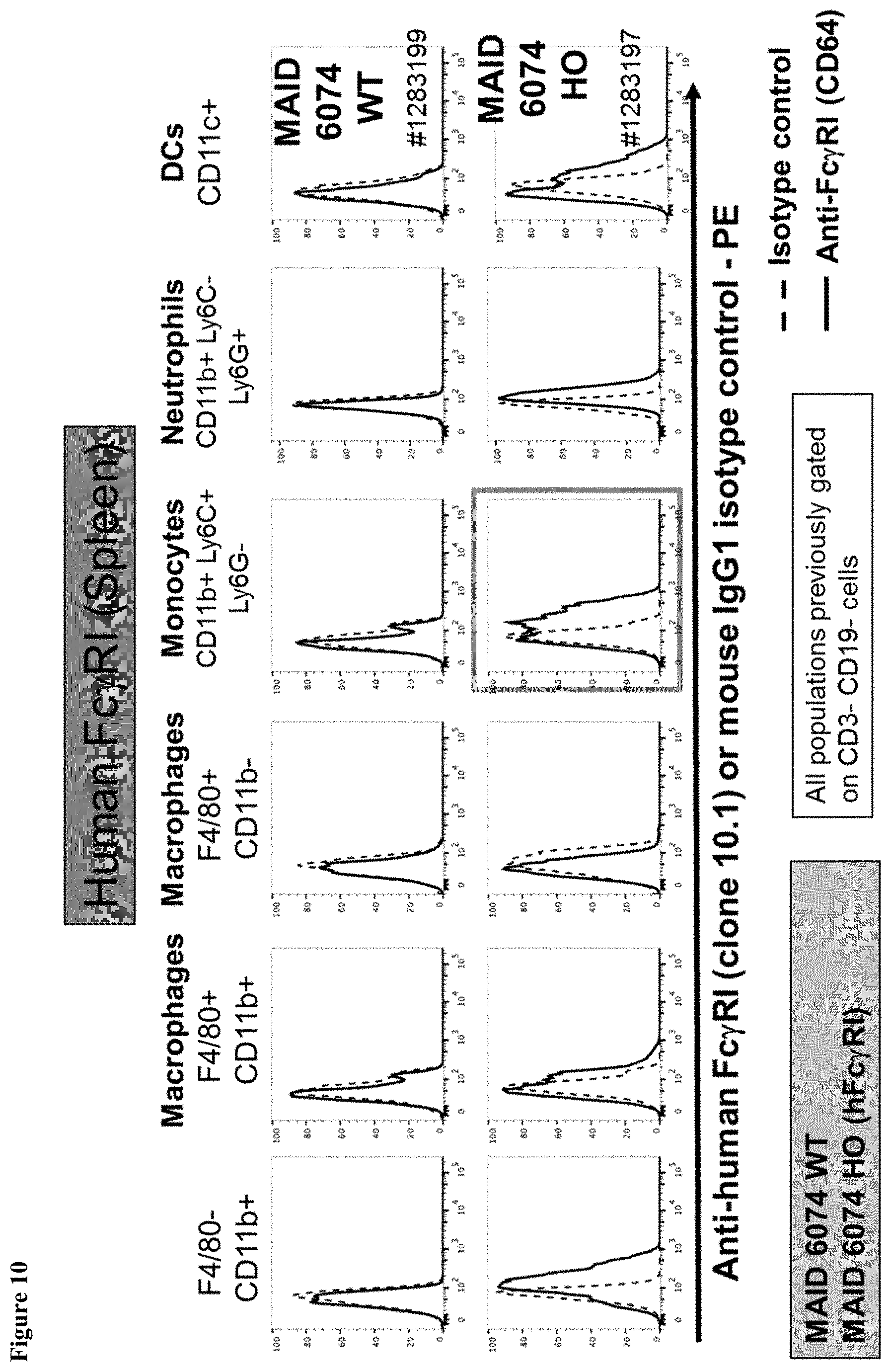
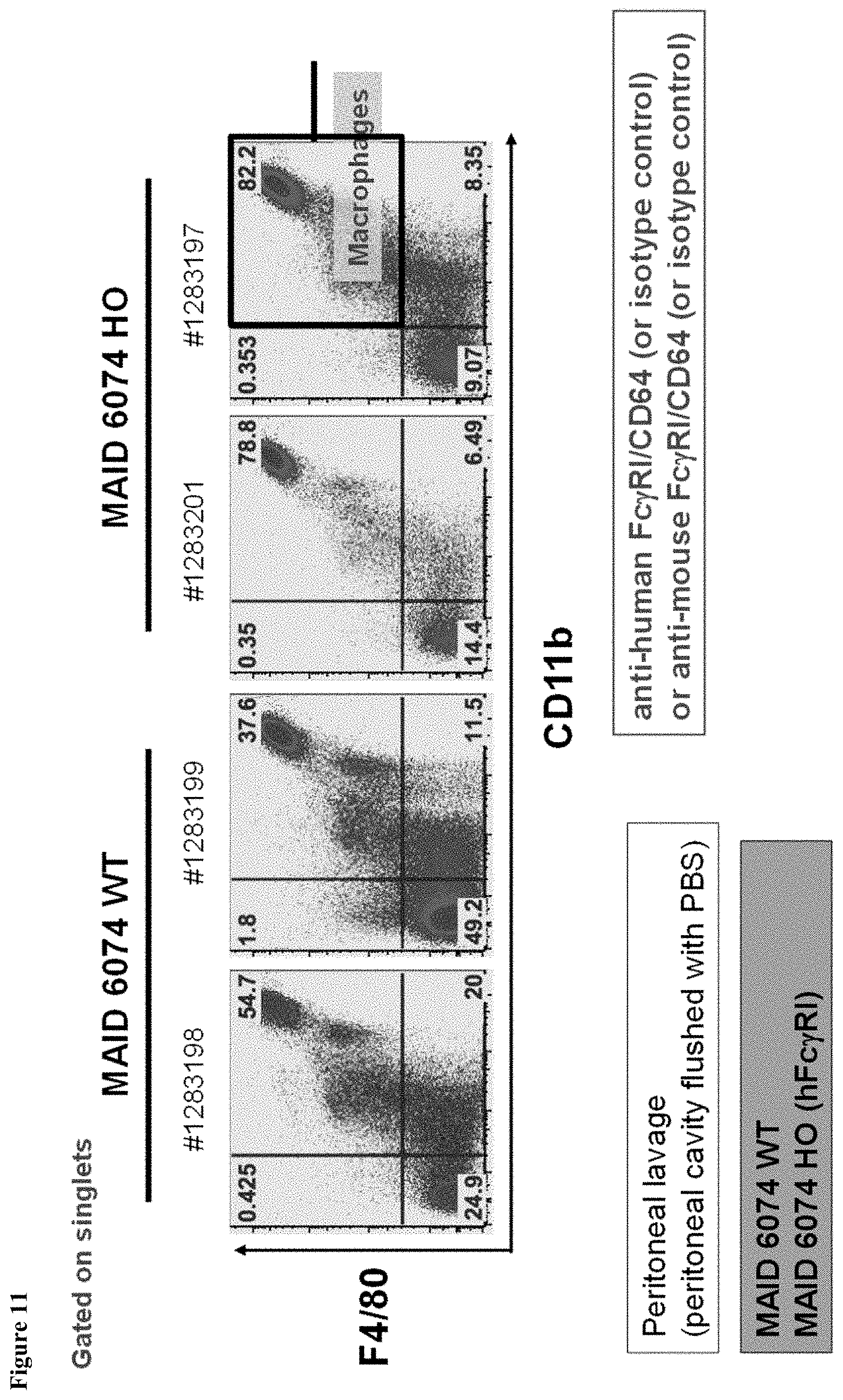

View All Diagrams
| United States Patent | 10,555,507 |
| Murphy , et al. | February 11, 2020 |
Non-human animals having humanized Fc-gamma receptors
Abstract
Genetically modified mice and methods and compositions for making and using the same are provided, wherein the genetic modification comprises humanization of an Fc.gamma.RI protein.
| Inventors: | Murphy; Andrew J. (Croton-On-Hudson, NY), Macdonald; Lynn (Harrison, NY), Gurer; Cagan (Chappaqua, NY), Meagher; Karolina A. (Yorktown Heights, NY), Tu; Naxin (Pleasantville, NY) | ||||||||||
|---|---|---|---|---|---|---|---|---|---|---|---|
| Applicant: |
|
||||||||||
| Assignee: | Regeneron Pharmaceuticals, Inc.
(Tarrytown, NY) |
||||||||||
| Family ID: | 52997579 | ||||||||||
| Appl. No.: | 15/277,092 | ||||||||||
| Filed: | September 27, 2016 |
Prior Publication Data
| Document Identifier | Publication Date | |
|---|---|---|
| US 20170086432 A1 | Mar 30, 2017 | |
Related U.S. Patent Documents
| Application Number | Filing Date | Patent Number | Issue Date | ||
|---|---|---|---|---|---|
| 14681617 | Apr 8, 2015 | 9474255 | |||
| 61977037 | Apr 8, 2014 | ||||
| Current U.S. Class: | 1/1 |
| Current CPC Class: | C07K 14/70535 (20130101); A01K 67/0278 (20130101); A01K 2217/072 (20130101); A01K 2267/0387 (20130101); A01K 2267/01 (20130101); A01K 2227/105 (20130101); A01K 2267/0337 (20130101); A01K 2207/15 (20130101) |
| Current International Class: | A01K 67/027 (20060101); C07K 14/735 (20060101) |
References Cited [Referenced By]
U.S. Patent Documents
| 5859312 | January 1999 | Littman et al. |
| 5877396 | March 1999 | Ravetch et al. |
| 6111166 | August 2000 | van de Winkel |
| 6294347 | September 2001 | Peltz et al. |
| 6676927 | January 2004 | Ravetch |
| 7265261 | September 2007 | Takai et al. |
| 7309810 | December 2007 | Takai et al. |
| 7351875 | April 2008 | Hogarth et al. |
| 7402728 | July 2008 | Chan et al. |
| 7579170 | August 2009 | Beliard et al. |
| 7713524 | May 2010 | Bourel et al. |
| 7754482 | July 2010 | Riley et al. |
| 7816082 | October 2010 | Han |
| 8912385 | December 2014 | Meagher |
| 9474255 | October 2016 | Murphy |
| 2004/0154044 | August 2004 | Fraichard et al. |
| 2008/0003225 | January 2008 | Vie et al. |
| 2009/0098124 | April 2009 | Stavenhagen |
| 2010/0035280 | February 2010 | Kawai |
| WO-1995/028959 | Nov 1995 | WO | |||
| WO-1999/000010 | Jan 1999 | WO | |||
| WO-2009/158696 | Dec 2009 | WO | |||
Other References
|
Amsbio: Fc receptor family proteins. Downloaded Sep. 2018. cited by examiner . Heijnen et al. (J. Clin. Invest. Jan. 1996; 97(2): 331-338). (Year: 1996). cited by examiner . Alevy, et al., "CD32A (FcgRIIA) mRNA expression and regulation in blood monocytes and cell lines," Mol Immunol, 29(11): 1289-1297 (1992). cited by applicant . Allen, et al., "Isolation and Expression of Functional High-Affinity Fc Receptor Complementary DNAs," Science, 243(4889): 378-381 (1989). cited by applicant . Anderson, "Isolation of the receptor for IgG from a human monocyte cell line (U937) and from human peripheral blood monocytes," J Exp Med, 156(6): 1794-1805 (1982). cited by applicant . Anselmino, et al., "Human basophils selectively express the FcgRII (CDw32) subtype of IgG receptor," J Allergy Clin Immun, 84(6): 907-914 (1989). cited by applicant . Asaoka, et al., "The Binding of Soluble Recombinant Human FCY Receptor I for Human Immunoglobulin G is Conferred by Its First and Second Extracellular Domains," Mol Immunol, 29(11): 1407-1413 (1992). cited by applicant . Barnes, et al., "FcgRI-Deficient Mice Show Multiple Alterations to Inflammatory and Immune Responses," Immunity, 16(3): 379-389 (2002). cited by applicant . Bolland, "A Newly Discovered Fc Receptor that Explains IgG-Isotype Disparities in Effector Responses," Immunity, 23(1): 2-4 (2005). cited by applicant . Bonnerot, et al., "Role of B cell receptor Ig alpha and Ig beta subunits in MHC class II-restricted antigen presentation," Immunity, 3(3): 335-347 (1995). cited by applicant . Boross, et al., "Fc Receptors," Encyclopedia of Life Sciences, 1-8 (2008). cited by applicant . Brooks, et al., "Structure and expression of human IgG FcRII (CD32): Functional Heterogeneity Is Encoded by the Alternatively Spliced Products of Multiple Genes," J Exp Med, 170(4): 1369-1385 (1989). cited by applicant . Bruhns, "Properties of mouse and human IgG receptors and their contribution to disease models," Blood, 119(24): 5640-5649 (2012). cited by applicant . Cassatella, et al., "Fc gamma R (CD16) interaction with ligand induces Ca2+ mobilization and phosphoinositide turnover in human natural killer cells: Role of Ca2+ in FcgR(CD16)-induced transcription and expression of lymphokine genes," J Exp Med, 169(2): 549-567 (1989). cited by applicant . Coggeshall, "Inhibitory signaling by B cell Fc gamma RIIb," Curr Opini Immunol, 10(3): 308-312 (1998). cited by applicant . Cohen-Solal, et al., "Fc gamma receptors," Immunol Lett, 92(3): 199-205 (2004). cited by applicant . De Haas, "IgG-Fc receptors and the clinical relvance of their polymorphisms," Wiener Klinische Wochenschrift, 113(20-21): 825-831 (2001). cited by applicant . Deo, et al., "Clinical significance of IgG Fc receptors and Fc gamma R-directed immunotherapies," Immunol Today, 18(3): 127-135 (1997). cited by applicant . Desjarlais, et al., "Optimizing engagement of the immune system by anti-tumor antibodies: an engineer's perspective," Drug Discov Today, 12(21-22): 898-910 (2007). cited by applicant . Desoize, "Antibodies in cancer treatment," Crit Rev Oncol Hematol, 62(1): 23-25 (2007). cited by applicant . Fc Receptor, Wikipedia, retrieved Dec. 9, 2016, from <https://en.wikipedia.org/wiki/Fc_receptor>. cited by applicant . Fleit, et al., "Human neutrophil Fcg receptor distribution and structure," PNAS, 79(10): 3275-3279 (1982). cited by applicant . Gessner, et al., "The IgG Fc receptor family," Annals Hematol, 76(6): 231-248 (1998). cited by applicant . Getahun, et al., "How antibodies act as natural adjuvants," Immunol Lett,104(1): 38-45 (2006). cited by applicant . Griggs, et al., "The state of the art: immune-mediated mechanisms of monoclonal antibodies in cancer therapy," Brit J Cancer, 101 (11): 1807-1812 (2009). cited by applicant . Guyre, et al., "Increased potency of Fc-receptor-targeted antigens," Cancer Immunol Immunother, 45(3-4): 146-148 (1997). cited by applicant . Harrison, et al., "High affinity IgG binding by Fc gamma RI (CD64) is modulated by two distinct IgSF domains and the transmembrane domain of the receptor," Protein Engineer, 11(3): 225-232 (1998). cited by applicant . Hazenbos, et al., "Impaired IgG-Dependent Anaphylaxis and Arthus Reaction in FcgRIII (CD16) Deficient Mice," Immunity, 5(2): 181-188 (1996). cited by applicant . Heijnen, et al., "A Human FcgRI/CD64 Transgenic Model for In Vivo Analysis of (Bispecific) Antibody Therapeutics, J Hematother," 4(5): 351-356 (1995). cited by applicant . Heijnen, et al., "Antigen Targeting to Myeloid-specific Human FcgRI/CD64 Triggers Enhanced Antibody Responses in Transgenic Mice," J Clin Invest, 97(2): 331-338 (1996). cited by applicant . Heijnen, et al., "Human IgG Fc Receptors," Int Rev Immunol, 16(1-2): 29-55 (1996). cited by applicant . Heyman, "Regulation of Antibody Responses via Antibodies, Complement, and Fc Receptors," Ann Rev Immunol, 18(1): 709-737 (2000). cited by applicant . Hibbs, et al., "Molecular cloning of a human immunoglobulin G Fc receptor," PNAS, 85(7): 2240-2244 (1988). cited by applicant . Hogarth, "Fc receptors are major mediators of antibody based inflammation in autoimmunity," Curr Opin Immunol, 14(6): 798-802 (2002). cited by applicant . Honeychurch, et al., "Therapeutic Efficacy of FcgRI/CD64-directed Bispecific Antibodies in B-cell Lymphoma," Blood, 96(10): 3544-3552 (2000). cited by applicant . Hulett, et al. "Molecular Basis of Fc Receptor Function," Adv Immunol, 57: 1-127 (1994). cited by applicant . International Search Report for International Application No. PCT/US2010/060925 dated Mar. 14, 2011. cited by applicant . Kuster, et al., "Characterization and expression of the gene for the human Fc receptor g subunit," J Biol Chem, 265(11): 6448-6452 (1990). cited by applicant . Looney, et al., "Identification of a second class of IgG Fc receptors on human neutrophils," J Exp Med, 163(4): 826-836 (1986). cited by applicant . Louis, et al., "Association between polymorphism in IgG Fc receptor IIIa coding gene and biological response to infliximab in Crohn's disease," Aliment Pharm Ther,19(5): 511-519 (2004). cited by applicant . Malbec, et al., "Negative regulation of hematopoietic cell activation and proliferation by Fc gamma RIIB," Curr Top Microbiol, 244: 13-27 (1999). cited by applicant . Masuda, et al., "Association of all Three Types of FcgR (CD64, CD32, and CD16) with a g-Chain Homodimer in Cultured Human Monocytes," J Immunol, 151(12): 7188-7195 (1993). cited by applicant . Masuda, et al., "Enhanced binding affinity for FcgRIIIA of fucose-negative antibody is sufficient to induce maximal antibody-dependent cellular cytotoxicity," Mol Immunol, 44(12): 3122-3131 (2007). cited by applicant . McKenzie, "Humanized mouse models of FcR clearance in immune platelet disorders," Blood Reviews,16(1): 3-5 (2002). cited by applicant . McKenzie, et al., "The Role of the Human Fc Receptor FcgRIIA in the Immune Clearance of Platelets: A Transgenic Mouse Model," J Immunol, 162(7): 4311-4318 (1999). cited by applicant . Meyer, et al., "Bevacizumab immune complexes activate platelets and induce thrombosis in FCGR2A transgenic mice," J Thromb Haemost, 7(1): 171-181 (2008). cited by applicant . Morgan, et al., "Analysis of Fc.gamma. receptor haplotypes in rheumatoid arthritis: FCGR3A remains a major susceptibility gene at this locus, with an additional contribution from FCGR3B," Arthritis Res Ther, 8 (1): 1 (2005). cited by applicant . Morgan, et al., "Association of FCGR2A and FCGR2A-FCGR3A haplotypes with susceptibility to giant cell arteritis," Arthritis Res Ther, 8(4): 1 (2006). cited by applicant . Muller, "Ten years of gene targeting: targeted mouse mutants, from vector design to phenotype analysis," Mech Develop, 82(1): 3-21 (1999). cited by applicant . Nimmerjahn, et al., "Divergent Immunoglobulin G Subclass Activity Through Selective Fc Receptor Binding," Science, 310(5753): 1510-1512 (2005). cited by applicant . Nimmerjahn, et al., "Fc gamma receptors as regulators of immune responses," Nat Rev, 8(1): 34-47 (2008). cited by applicant . Nimmerjahn, et al., "Fc gamma Receptors: Old Friends and New Family Members," Immunity, 24(1): 19-28 (2006). cited by applicant . Nimmerjahn, et al., "Fc gamma RIV: A Novel FcR with Distinct IgG Subclass Specificity," Immunity, 23(1): 41-51 (2005). cited by applicant . Nimmerjahn, et al., "Fc-Receptors as Regulators of Immunity," Adv Immunol, 96(Ch.5): 179-204 (2007). cited by applicant . Omi, et al., "Absence of Association between the Fcg Receptor IIIA-176F/V Polymorphism and the Severity of Malaria in Thai," Jap J Infect Dis, 55(5): 167-169 (2002). cited by applicant . Otten, et al., "Experimental Antibody Therapy of Liver Metastases Reveals Functional Redundancy between Fc gamma RI and Fc gamma RIV," J Immunol, 181(10): 6829-6836 (2008). cited by applicant . Ouma, et al., "Association of Fc gamma receptor IIA (CD32) polymorphism with malarial anemia and high-density parasitemia in infants and young children," Am J Trop Med Hyg, 74(4): 573-577 (2006). cited by applicant . Pan, et al., "Genetic susceptibility and haplotype analysis between Fc gamma receptor IIB and IIIA gene with systemic lupus erythematosus in Chinese population," Lupus, 17(8): 733-738 (2008). cited by applicant . Park, et al., "Resistance of Fc Receptor-deficient Mice to Fatal Glomerulonephritis," J Clin Invest,102(6): 1229-1238 (1998). cited by applicant . Peltz, et al., "Cloned and expressed human Fc receptor for IgG mediates anti-CD3-dependent lymphoproliferation," J Immunol, 141(6): 1891-1896 (1988). cited by applicant . Peltz, et al., "Human Fc gamma RIII: Cloning, expression, and identification of the chromosomal locus of two Fc receptors for IgG," PNAS, 86(3): 1013-1017 (1989). cited by applicant . Perussia, et al., "Murine natural killer cells express functional Fc gamma receptor II encoded by the Fc gamma Ra gene," J Exp Med, 170(1): 73-86 (1989). cited by applicant . Raghavan, et al., "Fc receptors and their interactions with immunoglobulins," Ann Rev Cell Dev Biol, 12(1): 181-220 (1996). cited by applicant . Rappaport, et al., "A soluble form of the human Fc receptor Fc gamma RIIA: cloning, transcript analysis and detection," Exp Hematol, 21(5): 689-696 (1933). cited by applicant . Ravetch, et al., "Alternative membrane forms of Fc gamma RIII (CD16) on human natural killer cells and neutrophils: Cell type-specific expression of two genes that differ in single nucleotide substitutions," J Exp Med, 170(2): 481-497 (1989). cited by applicant . Ravetch, et al., "Fc receptors," Ann Rev Immunol, 9(1): 457-492 (1991). cited by applicant . Ravetch, et al., "IgG Fc Receptors," Ann Rev Immunol, 19(1): 275-290 (2001). cited by applicant . Salmon, et al., "Human Receptors for Immunoglobulin G. Arthritis and Rheumatism," 44(4): 739-750 (2001). cited by applicant . Scallon, et al., "A human immunoglobulin G receptor exists in both polypeptide-anchored and phosphatidylinositol-glycan-anchored forms," PNAS, 86(13): 5079-5083 (1989). cited by applicant . Schmidt, et al., "Fc receptors and their interaction with complement in autoimmunity," Immunol Lett, 100(1): 56-67 (2005). cited by applicant . Selvaraj, et al., "Functional Regulation of Human Neutrophil Fc gamma Receptors," Immunol Res, 29(1-3): 219-229 (2004). cited by applicant . Sequence database: search result for SEQ ID No. 3. cited by applicant . Siberil, et al., "Fc gamma R: The Key to Optimize Therapeutic Antibodies?" Crit Rev Oncol Hematol, 62(1): 26-33 (2007). cited by applicant . Simmons, et al., "The Fc gamma receptor of natural killer cells is a phospholipid-linked membrane protein," Nature, 333: 568-570 (1988). cited by applicant . Smith, et al. "Mouse model recapitulating human Fc gamma receptor structural and functional diversity," PNAS, 109(16): 6181-6186 (2012). cited by applicant . Sondermann, et al., "Crystal structure of the soluble form of the human Fc gamma-receptor IIb: a new member of the immunoglobulin superfamily at 1.7 a resolution," The EMBO Journal, 18(5): 1095-1103 (1999). cited by applicant . Stuart, et al., "Isolation and expression of cDNA clones encoding a human receptor for IgG (Fc gamma RII," J Exp Med, 166(6): 1668-1684 (1987). cited by applicant . Su, et al., "Genomic organization of classical human low-affinity Fc gamma receptor genes," Genes Immun, 3(Suppl 1): S51-S56 (2002). cited by applicant . Symons, et al., "Genomic Organisation and Sequence of the Extracellular Domain Exons of the Bovine Fc gamma RI Receptor, and Evidence for Restricted Binding of Ruminant IgG to U937 Cells," Mol Immunol, 29(11): 1407-1413 (1992). cited by applicant . Takai, "Fc Receptors and Their Role in Immune Regulation and Autoimmunity," J Clin Immunol, 25(1): 1-18 (2005). cited by applicant . Takai, "Roles of Fc Receptors in Autoimmunity," Nat Rev, 2(8): 580-592 (2002). cited by applicant . Takai, et al., "Augmented humoral and anaphylactic responses in Fc gamma RII-deficient mice," Nature, 379: 346-349 (1996). cited by applicant . Takai, et al., "FcR gamma Chain Deletion Results in Pleiotrophic Effector Cell Defects," Cell, 76(3): 519-529 (1994). cited by applicant . Trounstine, et al., "Reactivity of cloned, expressed human Fc gamma RII isoforms with monoclonal antibodies which distinguish cell-type-specific and allelic forms of Fc gamma RII," Int Immunol, 2(4): 303-310 (1990). cited by applicant . Tsuchiya, et al., "Role of Fc gamma receptor IIb polymorphism in the genetic background of systemic lupus eryhematosus: Insights from Asia," Autoimmunity, 38(5): 347-352 (2005). cited by applicant . Tsukahara, et al., "A polymorphism in the gene encoding the Fc gamma IIIA receptor is a possible genetic marker to predict the primary response to infliximab in Japanese patients with rheumatoid arthritis." Ann Rheum Dis, 67(12): 1791-1792 (2008). cited by applicant . Tuijnam, et al., "Human Low-Affinity IgG Receptor Fc gamma RIIa (CD32) Introduced Into Mouse Fibroblasts Mediates Phagocytosis of Sensitized Erythrocytes," Blood, 79(7): 1651-1656 (1992). cited by applicant . Van Vugt, et al., "FcR gamma-Chain is Essential for Both Surface Expression and Function of Human Fc gamma RI (CD64) In Vivo," Blood, 87(9): 3593-3599 (1996). cited by applicant . Van De Winkel, et al., "Biological functioning of human IgG Fc receptors," Res Immunol, 141(1): 64-67 (1990). cited by applicant . Van De Winkel, et al., "Biology of Human Immunoglobulin G Fc Receptors," J Leukocyte Biol, 49(5): 511-524 (1991). cited by applicant . Van De Winkel, et al., "Human IgG Fc receptor heterogeneity: molecular aspects and clinical implications," Immunol Today, 14(5): 215-221 (1993). cited by applicant . Van Den Herik-Oudijk, et al., "Functional Differences Between Two Fc Receptor ITAM Signaling Motifs," Blood, 86(9): 3302-3307 (1995). cited by applicant . Verbeek, et al., "The role of FcR in immunity: lessons from gene targeting in mice," Res Immunol, 147(7): 466-474 (1997). cited by applicant . Warmerdam, et al., "A single amino acid in the second Ig-like domain of the human Fc gamma receptor II is critical for human IgG2 binding," J Immunol, 147(4): 1338-1343 (1991). cited by applicant . Warmerdam, et al., "Interaction of a human Fc gamma RIIb1 (CD32) isoform with murine and human IgG subclasses," Int Immunol, 5(3): 239-247 (1993). cited by applicant . Weinshank, et al., "Function and regulation of a murine macrophage-specific IgG Fc receptor, Fc gamma R-a," J Exp Med, 167(6): 1909-1925 (1988). cited by applicant . Zuniga, et al., "Low-Binding Alleles of Fc gamma Receptor Types IIA and IIIA Are Inherited Independently and Are Associated With Systemic Lupus Erythematosus in Hispanic Patients," Arthritis Rheum, 44(2): 361-367 (2001). cited by applicant. |
Primary Examiner: Long; Scott
Attorney, Agent or Firm: Foley Hoag LLP Jones; Brendan T. Zippin; Margarita
Parent Case Text
RELATED APPLICATIONS
This application is a Continuation of application Ser. No. 14/681,617, filed Apr. 8, 2015, which claims the benefit of priority to Provisional Application No. 61/977,037, filed Apr. 8, 2014, each of which is hereby incorporated by reference in its entirety.
Claims
What is claimed is:
1. A mouse whose genome comprises an Fc.gamma.RI gene at an endogenous Fc.gamma.RI locus, wherein the Fc.gamma.RI gene encodes a functional Fc.gamma.RI protein comprising an extracellular portion of a human Fc.gamma.RI .alpha. chain and an intracellular portion of a mouse Fc.gamma.RI .alpha. chain, wherein the mouse expresses the functional Fc.gamma.RI protein encoded by the Fc.gamma.RI gene.
2. The mouse of claim 1, wherein the extracellular portion of a human Fc.gamma.RI .alpha. chain comprises an EC1 domain, EC2 domain, an EC3 domain, or a combination thereof.
3. The mouse of claim 2, wherein the EC1 domain is encoded by an exon at least 90% identical to exon 3 of SEQ ID NO: 3.
4. The mouse of claim 2, wherein the EC2 domain is encoded by an exon at least 90% identical to exon 4 of SEQ ID NO: 3.
5. The mouse of claim 2, wherein the EC3 domain is encoded by an exon at least 90% identical to exon 5 of SEQ ID NO: 3.
6. The mouse of claim 1, wherein the mouse does not detectably express a full-length mouse Fc.gamma.RI .alpha. chain.
7. The mouse of claim 1, wherein the intracellular portion of an Fc.gamma.RI .alpha. chain comprises a cytoplasmic domain of a mouse Fc.gamma.RI .alpha. chain in whole or in part.
8. The mouse of claim 1, wherein the Fc.gamma.RI protein further comprises a mouse Fc.gamma.RI .alpha. chain transmembrane domain in whole or in part.
9. The mouse of claim 1, wherein the Fc.gamma.RI protein is expressed on monocytes, macrophages, neutrophils or dendritic cells.
10. The mouse of claim 9, wherein the expression of the Fc.gamma.RI protein is increased upon administration of murine granulocyte colony stimulating factor (mG-CSF) to the mouse.
11. A mouse comprising an Fc.gamma.RI gene at an endogenous Fc.gamma.RI locus, wherein the Fc.gamma.RI gene comprises at least one exon of a human Fc.gamma.RI gene encoding an extracellular portion of human Fc.gamma.RI protein operably linked to at least one exon of a mouse Fc.gamma.RI gene encoding an intracellular portion of a mouse Fc.gamma.RI protein, wherein the mouse expresses a functional Fc.gamma.RI protein encoded by the Fc.gamma.RI gene.
12. The mouse of claim 11, wherein the Fc.gamma.RI gene comprises exons 3, 4 and 5 of a human Fc.gamma.RI gene.
13. The mouse of claim 11, wherein the mouse does not express a functional mouse Fc.gamma.RI gene.
14. An embryonic stem cell whose genome comprises at an endogenous Fc.gamma.RI locus an Fc.gamma.RI gene that encodes a functional Fc.gamma.RI protein comprising an extracellular portion of a human Fc.gamma.RI protein and an intracellular portion of a mouse Fc.gamma.RI protein.
15. The cell of claim 14, wherein the Fc.gamma.RI gene comprises exons 3, 4, and 5 of a human Fc.gamma.RI gene.
16. The cell of claim 14, wherein the Fc.gamma.RI gene further comprises one or more human 5' untranslated regions flanking human exon 1.
17. The cell of claim 14, wherein the extracellular portion of the human Fc.gamma.RI protein comprises one or more of EC1, EC2, and EC3.
18. The cell of claim 14, wherein the Fc.gamma.RI gene comprises exon 6 of a mouse Fc.gamma.RI gene.
19. The cell of claim 14, wherein the intracellular portion of the mouse Fc.gamma.RI protein comprises the cytoplasmic domain of a mouse Fc.gamma.RI protein in whole or in part.
20. The mouse of claim 1, wherein the mouse expresses an endogenous FcR .gamma.-chain.
21. The mouse of claim 11, wherein the mouse expresses an endogenous FcR .gamma.-chain.
22. The cell of claim 14, wherein the genome of the embryonic stem cell further comprises an endogenous FcR .gamma.-chain gene.
Description
SEQUENCE LISTING
The instant application contains a Sequence Listing which has been submitted in ASCII format via EFS-Web and is hereby incorporated by reference in its entirety. Said ASCII copy, created on May 26, 2015, is named RPB-008.02_SL.txt and is 20,480 bytes in size.
BACKGROUND
Fc receptors (FcRs) are proteins found on the surface of cells of the immune system that carry out a variety of functions of the immune system in mammals. FcRs exist in a variety of types, on a variety of cells, and mediate a variety of immune functions such as, for example, binding to antibodies that are attached to infected cells or invading pathogens, stimulating phagocytic or cytotoxic cells to destroy microbes, or infected cells by antibody-mediated phagocytosis or antibody-dependent cell-mediated cytotoxicity (ADCC).
ADCC is a process whereby effector cells of the immune system lyse a target cell bound by antibodies. This process depends on prior exposure to a foreign antigen or cell, resulting in an antibody response. ADCC can be mediated through effector cells such as, for example, natural killer (NK) cells, by binding of FcR expressed on the surface of the effector cell to the Fc portion of the antibody which itself is bound to the foreign antigen or cell. High affinity Fc.gamma.R1 receptor signaling plays an important role in immune system regulation and effector cell function.
SUMMARY OF INVENTION
The present invention encompasses the recognition that it is desirable to engineer non-human animals, such as mice, to express a human or hybrid Fc.gamma.RI protein to permit experimentation on human immune effector responses that could not be performed in humans.
The present invention also encompasses the recognition that it is desirable to replace the endogenous mouse Fc.gamma.RI gene with a humanized (human or hybrid) Fc.gamma.RI gene.
In some embodiments, the invention provides a mouse that expresses a Fc.gamma.RI protein comprising the extracellular portion of a human Fc.gamma.RI.alpha. chain and the intracellular portion of a mouse Fc.gamma.RI.alpha. chain. In some embodiments, an extracellular portion of a human Fc.gamma.RI.alpha. chain comprises an EC1 domain, EC2 domain, EC3 domain, or combinations thereof.
In some embodiments, the EC1 domain is encoded by an exon at least 50%, 70%, 85%, 90% or 95% identical to exon 3 of SEQ ID NO: 3.
In some embodiments, the EC2 domain is encoded by an exon at least 50%, 70%, 85%, 90%, or 95% identical to exon 4 of SEQ ID NO: 3
In some embodiments, the EC3 domain is encoded by an exon at least 50%, 70%, 85%, 90%, or 95% identical to exon 5 of SEQ ID NO: 3.
In some embodiments, the invention provides a mouse that expresses a Fc.gamma.RI protein comprising the extracellular portion of a human Fc.gamma.RI.alpha. chain and the intracellular portion of a mouse Fc.gamma.RI.alpha. chain wherein the mouse does not detectably express a full-length mouse Fc.gamma.RI.alpha. chain. In some embodiments, the intracellular portion of a Fc.gamma.RI.alpha. chain comprises a cytoplasmic domain of a mouse Fc.gamma.RI.alpha. chain in whole or in part. In some embodiments, a mouse further expresses a Fc.gamma.RI.alpha. chain comprising a mouse Fc.gamma.RI.alpha. chain transmembrane domain in whole or in part.
In some embodiments, the invention provides a mouse that expresses an Fc.gamma.RI.alpha. chain amino acid sequence at least 70%, 85%, 90%, or 95% identical to SEQ ID NO: 5. In some embodiments, human or hybrid Fc.gamma.RI protein is detectably expressed on monocytes, macrophages, neutrophils, dendritic cells, and/or combinations thereof.
In some embodiments, human Fc.gamma.RI protein level is increased by administration of murine granulocyte colony stimulating factor (mG-CSF). In some embodiments, mouse Fc.gamma.RI protein level is not increased in monocytes, neutrophils, or dendritic cells by administration of murine granulocyte colony stimulating factor (mG-CSF).
In some embodiments, the invention provides a mouse that expresses an Fc.gamma.RI gene that comprises one or more exons of a human Fc.gamma.RI gene operably linked to one or more exons of a mouse Fc.gamma.RI gene. In some embodiments, exons of a human Fc.gamma.RI gene encode one or more extracellular portions of human Fc.gamma.RI protein. In some embodiments, exons of a mouse Fc.gamma.RI gene encode one or more intracellular portions of a mouse Fc.gamma.RI protein. In some embodiments, exons of a human Fc.gamma.RI are selected from the group consisting of exons 3, 4, 5, and combinations thereof.
In some embodiments, an intracellular portion of a mouse Fc.gamma.RI is operably linked to one or more mouse intracellular signaling cascades.
In some embodiments, the invention provides a mouse that expresses a human Fc.gamma.RI, wherein germ line cells of the mouse lack a functional mouse Fc.gamma.RI gene. In some embodiment the invention provides a mouse that expresses a human Fc.gamma.RI, wherein germ line cells of the mouse lack any mouse Fc.gamma.RI gene.
In some embodiments, the invention provides an embryonic stem cell whose genome comprises a Fc.gamma.RI gene that encodes the extracellular portion of a human Fc.gamma.RI protein and the intracellular portion of a mouse Fc.gamma.RI protein. In some embodiments, an Fc.gamma.RI gene comprises exons 3, 4, and 5 of a human Fc.gamma.RI gene. In some embodiments, an Fc.gamma.RI gene further comprises one or more human 5' untranslated regions flanking human exon 1. In some embodiments, an extracellular portion of a human Fc.gamma.RI protein comprises one or more of EC1, EC2, and EC3.
In some embodiments, the invention provides an embryonic stem cell whose genome comprises an Fc.gamma.RI.alpha. chain amino acid sequence at least 70%, 85%, 90%, or 95% identical to SEQ ID NO: 5.
In some embodiments, an embryonic stem cell comprises an Fc.gamma.RI gene comprising amino acid residues of exon 6 of a mouse Fc.gamma.RI gene. In some embodiments, an intracellular portion of a mouse Fc.gamma.RI protein comprises the cytoplasmic domain of a mouse Fc.gamma.RI protein in whole or in part.
In some embodiments, the invention provides an embryonic stem cell comprising a human Fc.gamma.RI gene wherein the human Fc.gamma.RI gene is positioned at an endogenous Fc.gamma.RI locus that appears in a mouse genome as found in nature.
In some embodiments, the invention provides a mouse embryo generated from an embryonic stem as described herein.
In some embodiments, the invention provides for use of a mouse embryonic stem cell as described herein to make a transgenic mouse.
In some embodiments, methods of making a mouse that expresses Fc.gamma.RI protein comprising an extracellular portion of a human Fc.gamma.RI protein and an intracellular portion of a mouse Fc.gamma.RI protein are disclosed, the method comprising steps of: (a) obtaining a mouse embryonic stem cell; (b) replacing in the embryonic cell an endogenous mouse Fc.gamma.RI gene with a genomic fragment comprising a nucleic acid molecule that encodes a portion of human Fc.gamma.RI protein having human extracellular regions; and (c) creating the mouse using the embryonic cell of (b).
In some embodiments, the invention provides a genomic fragment comprising a nucleic acid molecule that encodes a portion of human Fc.gamma.RI protein having human extracellular regions and a nucleic acid molecule that encodes an intracellular portion of a mouse Fc.gamma.RI protein.
As used in this application, the terms "about" and "approximately" are used as equivalents. Any numerals used in this application with or without about/approximately are meant to cover any normal fluctuations appreciated by one of ordinary skill in the relevant art.
Other features, objects, and advantages of the present invention are apparent in the detailed description that follows. It should be understood, however, that the detailed description, while indicating embodiments of the present invention, is given by way of illustration only, not limitation. Various changes and modifications within the scope of the invention will become apparent to those skilled in the art from the detailed description.
BRIEF DESCRIPTION OF THE DRAWINGS
The drawings included herein are for illustration purposes only not for limitation.
FIG. 1 shows genotyping of the Fc.gamma.RI mouse allele in experimental mice and wild-type controls.
FIG. 2 shows relative copy number of the human Fc.gamma.RI gene in experimental mice and wild-type controls.
FIG. 3 shows transformed data for gene copy numbers based on Het (.+-.) mice having one copy of the human Fc.gamma.RI and calibrated by average .DELTA.Ct.
FIG. 4 shows expression of Fc.gamma.RI receptors in cells from human blood donors.
FIG. 5 shows a schematic illustration (not to scale) of a human Fc.gamma.RI gene, a mouse Fc.gamma.RI gene, and a humanized Fc.gamma.RI gene.
FIG. 6 shows a schematic illustration (not to scale) of a process of preparing a MAID 6074 cassette. Sequences disclosed as SEQ ID NOS 6-8, respectively, in order of appearance.
FIG. 7 shows mice having a humanized Fc.gamma.RI gene exhibit normal cell frequencies in spleen and blood.
FIG. 8 shows myeloid spleen populations in mice having a humanized Fc.gamma.RI gene.
FIG. 9 shows a loss of murine Fc.gamma.RI expression on macrophages from the spleen of mice having a humanized Fc.gamma.RI gene.
FIG. 10 shows a gain of human Fc.gamma.RI expression on monocytes from the spleen of mice having a humanized Fc.gamma.RI gene.
FIG. 11 shows the gating strategy during FACS analysis of macrophages purified from the peritoneal cavity of mice having endogenous mouse Fc.gamma.RI genes (MAID 6074 WT) and mice homozygous for a humanized Fc.gamma.RI gene (MAID 6074 HO).
FIG. 12 shows expression of human Fc.gamma.RI and mouse Fc.gamma.RI in macrophages from the peritoneal cavity of mice having endogenous mouse Fc.gamma.RI genes (MAID 6074 WT) and mice homozygous for a humanized Fc.gamma.RI gene (MAID 6074 HO).
FIG. 13 shows the gating strategy during FACS analysis of bone marrow derived macrophages of mice having endogenous mouse Fc.gamma.RI genes (MAID 6074 WT) and mice homozygous for a humanized Fc.gamma.RI gene (MAID 6074 HO).
FIG. 14 shows expression of human Fc.gamma.RI and mouse Fc.gamma.RI in bone marrow-derived macrophages of mice having endogenous mouse Fc.gamma.RI genes (MAID 6074 WT) and mice homozygous for a humanized Fc.gamma.RI gene (MAID 6074 HO).
FIG. 15 shows the gating strategy during FACS analysis of bone marrow derived macrophages of mice having endogenous mouse Fc.gamma.RI genes (Control 75/25) and mice heterozygous for a humanized Fc.gamma.RI gene (MAID 6074 HET).
FIG. 16 shows expression of human Fc.gamma.RI and mouse Fc.gamma.RI in bone marrow-derived macrophages of mice having endogenous mouse Fc.gamma.RI genes (Control 75/25) and mice heterozygous for a humanized Fc.gamma.RI gene (MAID 6074 HET).
FIG. 17 shows myeloid blood populations in MAID 6074 HO mice compared to MAID 6074 WT 48 hours after treatment with PBS.
FIG. 18 shows myeloid blood populations in MAID 6074 HO mice compared to MAID 6074 WT mice 48 hours after treatment with mG-CSF.
FIG. 19 shows a lack of human Fc.gamma.RI expression in the blood of MAID 6074 WT mice and MAID 6074 HO mice 48 hours after treatment with PBS.
FIG. 20 shows human Fc.gamma.RI expression in the blood of MAID 6074 HO mice compared to MAID 6074 WT mice 48 hours after treatment with mG-CSF.
FIG. 21 shows lack of murine Fc.gamma.RI expression in the blood of MAID 6074 WT and MAID 6074 HO mice 48 hours after treatment with PBS.
FIG. 22 shows murine Fc.gamma.RI expression in the blood of MAID 6074 WT compared to MAID 6074 HO mice 48 hours after treatment with mG-CSF.
FIG. 23 shows myeloid splenic populations in MAID 6074 HO compared to MAID 6074 WT mice 48 hours after treatment with PBS.
FIG. 24 shows myeloid splenic populations in MAID 6074 HO mice compared to MAID 6074 WT mice 48 hours after treatment with mG-CSF.
FIG. 25 shows a lack of human Fc.gamma.RI expression in splenic monocytes in MAID 6074 HO mice and 6074 WT mice 48 hours after treatment with PBS.
FIG. 26 shows human Fc.gamma.RI expression in the spleen of MAID 6074 HO mice compared to MAID 6074 WT mice 48 hours after treatment with mG-CSF.
FIG. 27 shows murine Fc.gamma.RI expression in the spleen of MAID 6074 WT mice compared to MAID 6074 HO mice 48 hours after treatment with PBS.
FIG. 28 shows murine Fc.gamma.RI expression in the spleen of MAID 6074 WT mice compared to MAID 6074 HO mice 48 hours after treatment with mG-CSF.
FIG. 29 shows a summary of human Fc.gamma.RI expression in cell populations of MAID 6074 WT and MAID 6074 HO mice after treatment with PBS or mG-CSF.
FIG. 30 shows upregulation of human Fc.gamma.RI mRNA induced by mG-CSF in MAID 6074 HO mouse blood and spleen normalized to mHPRT1.
FIG. 31 shows upregulation of human Fc.gamma.RI mRNA induced by mG-CSF in MAID 6074 HO mouse blood and spleen.
FIG. 32 depicts a schematic for and exemplary strategy for the humanization of mouse Fc.gamma.RI.
DEFINITIONS
This invention is not limited to particular methods, and experimental conditions described, as such methods and conditions may vary. It is also to be understood that the terminology used herein is for the purpose of describing particular embodiments only, and is not intended to be limiting, since the scope of the present invention is defined by the claims.
Unless defined otherwise, all terms and phrases used herein include the meanings that the terms and phrases have attained in the art, unless the contrary is clearly indicated or clearly apparent from the context in which the term or phrase is used. Although any methods and materials similar or equivalent to those described herein can be used in the practice or testing of the present invention, particular methods and materials are now described.
The term "approximately" as applied herein to one or more values of interest, refers to a value that is similar to a stated reference value. In certain embodiments, the term "approximately" or "about" refers to a range of values that fall within 25%, 20%, 19%, 18%, 17%, 16%, 15%, 14%, 13%, 12%, 11%, 10%, 9%, 8%, 7%, 6%, 5%, 4%, 3%, 2%, 1%, or less in either direction (greater than or less than) of the stated reference value unless otherwise stated or otherwise evident from the context (except where such number would exceed 100% of a possible value).
The term "biologically active" as used herein refers to a characteristic of any agent that has activity in a biological system, in vitro or in vivo (e.g., in an organism). For instance, an agent that, when present in an organism, has a biological effect within that organism, is considered to be biologically active. In particular embodiments, where a protein or polypeptide is biologically active, a portion of that protein or polypeptide that shares at least one biological activity of the protein or polypeptide is typically referred to as a "biologically active" portion.
The term "comparable" as used herein refers to two or more agents, entities, situations, sets of conditions, etc. that may not be identical to one another but that are sufficiently similar to permit comparison there between so that conclusions may reasonably be drawn based on differences or similarities observed. Those of ordinary skill in the art will understand, in context, what degree of identity is required in any given circumstance for two or more such agents, entities, situations, sets of conditions, etc. to be considered comparable.
The term "conservative" is used herein to describe a conservative amino acid substitution refers to substitution of an amino acid residue by another amino acid residue having a side chain R group with similar chemical properties (e.g., charge or hydrophobicity). In general, a conservative amino acid substitution will not substantially change the functional properties of interest of a protein, for example, the ability of a receptor to bind to a ligand. Examples of groups of amino acids that have side chains with similar chemical properties include aliphatic side chains such as glycine, alanine, valine, leucine, and isoleucine; aliphatic-hydroxyl side chains such as serine and threonine; amide-containing side chains such as asparagine and glutamine; aromatic side chains such as phenylalanine, tyrosine, and tryptophan; basic side chains such as lysine, arginine, and histidine; acidic side chains such as aspartic acid and glutamic acid; and, sulfur-containing side chains such as cysteine and methionine. Conservative amino acids substitution groups include, for example, valine/leucine/isoleucine, phenylalanine/tyrosine, lysine/arginine, alanine/valine, glutamate/aspartate, and asparagine/glutamine. In some embodiments, a conservative amino acid substitution can be substitution of any native residue in a protein with alanine, as used in, for example, alanine scanning mutagenesis. In some embodiments, a conservative substitution is made that has a positive value in the PAM250 log-likelihood matrix disclosed in Gonnet et al. (1992) Exhaustive Matching of the Entire Protein Sequence Database, Science 256:1443-45, hereby incorporated by reference. In some embodiments, the substitution is a moderately conservative substitution wherein the substitution has a nonnegative value in the PAM250 log-likelihood matrix.
The term "disruption" as used herein refers to the result of a homologous recombination event with a DNA molecule (e.g., with an endogenous homologous sequence such as a gene or gene locus. In some embodiments, a disruption may achieve or represent an insertion, deletion, substitution, replacement, missense mutation, or a frame-shift of a DNA sequence(s), or any combination thereof. Insertions may include the insertion of entire genes or fragments of genes, e.g. exons, which may be of an origin other than the endogenous sequence. In some embodiments, a disruption may increase expression and/or activity of a gene or gene product (e.g., of a protein encoded by a gene). In some embodiments, a disruption may decrease expression and/or activity of a gene or gene product. In some embodiments, a disruption may alter sequence of a gene or an encoded gene product (e.g., an encoded protein). In some embodiments, a disruption may truncate or fragment a gene or an encoded gene product (e.g., an encoded protein). In some embodiments, a disruption may extend a gene or an encoded gene product; in some such embodiments, a disruption may achieve assembly of a fusion protein. In some embodiments, a disruption may affect level but not activity of a gene or gene product. In some embodiments, a disruption may affect activity but not level of a gene or gene product. In some embodiments, a disruption may have no significant effect on level of a gene or gene product. In some embodiments, a disruption may have no significant effect on activity of a gene or gene product. In some embodiments, a disruption may have no significant effect on either level or activity of a gene or gene product.
The phrase "endogenous locus" or "endogenous gene" as used herein refers to a genetic locus found in a parent or reference organism prior to introduction of a disruption, deletion, replacement, alteration, or modification as described herein. In some embodiments, the endogenous locus has a sequence found in nature. In some embodiments, the endogenous locus is wild type. In some embodiments, the reference organism is a wild-type organism. In some embodiments, the reference organism is an engineered organism. In some embodiments, the reference organism is a laboratory-bred organism (whether wild-type or engineered).
The phrase "endogenous promoter" as used herein refers to a promoter that is naturally associated, e.g., in a wild-type organism, with an endogenous gene.
The term "Fc.gamma.RI protein" as used herein refers to a high affinity immunoglobulin Fc receptor comprising an .alpha. chain having three extracellular domains, a transmembrane domain, and an intracellular domain.
By way of illustration, representative nucleotide and amino acid sequences of a mouse and human Fc.gamma.RI.alpha. genes are provided in Table 3. Persons of skill upon reading this disclosure will recognize that one or more endogenous Fc.gamma.RI receptor genes in a genome (or all) can be replaced by one or more heterologous Fc.gamma.RI genes (e.g., polymorphic variants, subtypes or mutants, genes from another species, etc.).
A "Fc.gamma.RI-expressing cell" as used herein refers to a cell that expresses Fc.gamma.RI. In some embodiments, an Fc.gamma.RI-expressing cell expresses a Fc.gamma.RI receptor on its surface. In some embodiments, a Fc.gamma.RI receptor is expressed on the surface of the cell in an amount sufficient to mediate cell-to-cell interactions via the Fc.gamma.RI protein expressed on the surface of the cell. Exemplary Fc.gamma.RI-expressing cells include, lymphocytes, myeloid cells, macrophages, neutrophils, and natural killer (NK) cells. Fc.gamma.RI-expressing cells regulate the interaction of immune cells to regulate the immune response to various foreign antigens or pathogens. In some embodiments, non-human animals of the present invention demonstrate immune cell regulation via humanized Fc.gamma.RI receptors expressed on the surface of one more cells of the non-human animal.
The term "heterologous" as used herein refers to an agent or entity from a different source. For example, when used in reference to a polypeptide, gene, or gene product or present in a particular cell or organism, the term clarifies that the relevant polypeptide, gene, or gene product 1) was engineered by the hand of man; 2) was introduced into the cell or organism (or a precursor thereof) through the hand of man (e.g., via genetic engineering); and/or 3) is not naturally produced by or present in the relevant cell or organism (e.g., the relevant cell type or organism type).
The term "host cell" as used herein refers to a cell into which a heterologous (e.g., exogenous) nucleic acid or protein has been introduced. Persons of skill upon reading this disclosure will understand that such terms refer not only to the particular subject cell, but also is used to refer to the progeny of such a cell. Because certain modifications may occur in succeeding generations due to either mutation or environmental influences, such progeny may not, in fact, be identical to the parent cell, but are still included within the scope of the term "host cell" as used herein. In some embodiments, a host cell is or comprises a prokaryotic or eukaryotic cell. In general, a host cell is any cell that is suitable for receiving and/or producing a heterologous nucleic acid or protein, regardless of the Kingdom of life to which the cell is designated. Exemplary cells include those of prokaryotes and eukaryotes (single-cell or multiple-cell), bacterial cells (e.g., strains of E. coli, Bacillus spp., Streptomyces spp., etc.), mycobacteria cells, fungal cells, yeast cells (e.g., S. cerevisiae, S. pombe, P. pastoris, P. methanolica, etc.), plant cells, insect cells (e.g., SF-9, SF-21, baculovirus-infected insect cells, Trichoplusia ni, etc.), non-human animal cells, human cells, or cell fusions such as, for example, hybridomas or quadromas. In some embodiments, the cell is a human, monkey, ape, hamster, rat, or mouse cell. In some embodiments, the cell is eukaryotic and is selected from the following cells: CHO (e.g., CHO K1, DXB-11 CHO, Veggie-CHO), COS (e.g., COS-7), retinal cell, Vero, CV1, kidney (e.g., HEK293, 293 EBNA, MSR 293, MDCK, HaK, BHK), HeLa, HepG2, WI38, MRC 5, Co1o205, HB 8065, HL-60, (e.g., BHK21), Jurkat, Daudi, A431 (epidermal), CV-1, U937, 3T3, L cell, C127 cell, SP2/0, NS-0, MMT 060562, Sertoli cell, BRL 3A cell, HT1080 cell, myeloma cell, tumor cell, and a cell line derived from an aforementioned cell. In some embodiments, the cell comprises one or more viral genes, e.g., a retinal cell that expresses a viral gene (e.g., a PER.C6.TM. cell). In some embodiments, a host cell is or comprises an isolated cell. In some embodiments, a host cell is part of a tissue. In some embodiments, a host cell is part of an organism.
The phrase "human Fc.gamma.RI gene" as used herein refers to a nucleotide sequence encoding a fully human, substantially human, or humanized portion of an Fc.gamma.RI protein depending on context. In some embodiments, a "human Fc.gamma.RI" gene refers to a humanized Fc.gamma.RI gene as contrasted with a fully mouse Fc.gamma.RI gene. In some embodiments, a human Fc.gamma.RI gene contains one or more substitutions, additions, deletions, or mutations. In some embodiments a human Fc.gamma.RI gene comprises Fc.gamma.RIA (CD64A), Fc.gamma.RIB (CD64B), Fc.gamma.RIC (CD64C), or combinations thereof.
The phrase "human Fc.gamma.RI protein" refers to a protein encoded by a fully human, substantially human, or humanized Fc.gamma.RI gene depending on context. In some embodiments, a "human Fc.gamma.RI" protein refers to a humanized Fc.gamma.RI protein as contrasted with a fully mouse Fc.gamma.RI protein. In some embodiments, a human Fc.gamma.RI protein comprises one or more amino acid substitutions, additions, deletions, or mutations. In some embodiments, a Fc.gamma.RI protein comprises Fc.gamma.RIA (CD64A), Fc.gamma.RIB (CD64B), Fc.gamma.RIC (CD64C), or combinations thereof.
The phrase "hybrid Fc.gamma.RI gene" or "hybrid Fc.gamma.RI protein" refers to a Fc.gamma.RI gene or protein that includes an Fc.gamma.RI sequence of at least two different species of animals. In some embodiments, a hybrid Fc.gamma.RI gene includes a portion of a human nucleic acid sequence and a portion of a mouse nucleic acid sequence. In some embodiments, a hybrid Fc.gamma.RI protein includes a portion of human amino acid sequence and a portion of a mouse amino acid sequence.
The term "humanized", is used herein in accordance with its art-understood meaning to refer to nucleic acids or proteins whose structures (i.e., nucleotide or amino acid sequences) include portions that correspond substantially or identically with structures of a particular gene or protein found in nature in a non-human animal, and also include portions that differ from that found in the relevant particular non-human gene or protein and instead correspond more closely with comparable structures found in a corresponding human gene or protein. In some embodiments, a "humanized" gene is one that encodes a polypeptide having substantially the amino acid sequence as that of a human polypeptide (e.g., a human protein or portion thereof--e.g., characteristic portion thereof). To give but one example, in the case of a membrane receptor, a "humanized" gene may encode a polypeptide having an extracellular portion having an amino acid sequence as that of a human extracellular portion and the remaining sequence as that of a non-human (e.g., mouse) polypeptide. In some embodiments, a humanized gene comprises at least a portion of an DNA sequence of a human gene. In some embodiment, a humanized gene comprises an entire DNA sequence of a human gene. In some embodiments, a humanized protein comprises a sequence having a portion that appears in a human protein. In some embodiments, a humanized protein comprises an entire sequence of a human protein and is expressed from an endogenous locus of a non-human animal that corresponds to the homolog or ortholog of the human gene.
The term "identity" as used herein in connection with a comparison of sequences, refers to identity as determined by a number of different algorithms known in the art that can be used to measure nucleotide and/or amino acid sequence identity. In some embodiments, identities as described herein are determined using a ClustalW v. 1.83 (slow) alignment employing an open gap penalty of 10.0, an extend gap penalty of 0.1, and using a Gonnet similarity matrix (MACVECTOR.TM. 10.0.2, MacVector Inc., 2008).
The terms "intracellular signal cascade" or "intracellular signal transduction" as used herein refers to a transmission of signal from a cell surface to one or more intracellular targets. In some embodiments, intracellular signal transduction comprises a physiological response in a cell that is elicited by the binding of a target molecule (e.g., an immunoglobulin Fc region) to an extracellular component of a Fc.gamma.R1 receptor.
The term "isolated" as used herein refers to a substance and/or entity that has been (1) separated from at least some of the components with which it was associated when initially produced (whether in nature and/or in an experimental setting), and/or (2) designed, produced, prepared, and/or manufactured by the hand of man. Isolated substances and/or entities may be separated from about 10%, about 20%, about 30%, about 40%, about 50%, about 60%, about 70%, about 80%, about 90%, about 91%, about 92%, about 93%, about 94%, about 95%, about 96%, about 97%, about 98%, about 99%, or more than about 99% of the other components with which they were initially associated. In some embodiments, isolated agents are about 80%, about 85%, about 90%, about 91%, about 92%, about 93%, about 94%, about 95%, about 96%, about 9'7%, about 98%, about 99%, or more than about 99% pure. As used herein, a substance is "pure" if it is substantially free of other components. In some embodiments, as will be understood by those skilled in the art, a substance may still be considered "isolated" or even "pure", after having been combined with certain other components such as, for example, one or more carriers or excipients (e.g., buffer, solvent, water, etc.); in such embodiments, percent isolation or purity of the substance is calculated without including such carriers or excipients. To give but one example, in some embodiments, a biological polymer such as a polypeptide or polynucleotide that occurs in nature is considered to be "isolated" when, a) by virtue of its origin or source of derivation is not associated with some or all of the components that accompany it in its native state in nature; b) it is substantially free of other polypeptides or nucleic acids of the same species from the species that produces it in nature; c) is expressed by or is otherwise in association with components from a cell or other expression system that is not of the species that produces it in nature. Thus, for instance, in some embodiments, a polypeptide that is chemically synthesized or is synthesized in a cellular system different from that which produces it in nature is considered to be an "isolated" polypeptide. Alternatively or additionally, in some embodiments, a polypeptide that has been subjected to one or more purification techniques may be considered to be an "isolated" polypeptide to the extent that it has been separated from other components a) with which it is associated in nature; and/or b) with which it was associated when initially produced.
The phrase "mouse Fc.gamma.RI gene" as used herein refers to a gene comprising a nucleic molecule as shown in SEQ ID NO: 1, or a nucleic acid molecule having substantial identity to a molecule as shown in SEQ ID NO: 1.
The phrase "mouse Fc.gamma.RI protein" as used herein refers to a protein comprising an amino acid sequence as shown in SEQ ID NO: 2, including a protein having substantial identity to a protein as shown in SEQ ID NO: 2.
The phrase "non-human animal" as used herein refers to any vertebrate organism that is not a human. In some embodiments, a non-human animal is a cyclostome, a bony fish, a cartilaginous fish (e.g., a shark or a ray), an amphibian, a reptile, a mammal, and a bird. In some embodiments, a non-human mammal is a primate, a goat, a sheep, a pig, a dog, a cow, or a rodent. In some embodiments, a non-human animal is a rodent such as a rat or a mouse.
The phrase "nucleic acid" as used herein in its broadest sense, refers to any compound and/or substance that is or can be incorporated into an oligonucleotide chain. In some embodiments, a nucleic acid is a compound and/or substance that is or can be incorporated into an oligonucleotide chain via a phosphodiester linkage. As will be clear from context, in some embodiments, "nucleic acid" refers to individual nucleic acid residues (e.g., nucleotides and/or nucleosides); in some embodiments, "nucleic acid" refers to an oligonucleotide chain comprising individual nucleic acid residues. In some embodiments, a "nucleic acid" is or comprises RNA; in some embodiments, a "nucleic acid" is or comprises DNA. In some embodiments, a nucleic acid is, comprises, or consists of one or more natural nucleic acid residues. In some embodiments, a nucleic acid is, comprises, or consists of one or more nucleic acid analogs. In some embodiments, a nucleic acid analog differs from a nucleic acid in that it does not utilize a phosphodiester backbone. For example, in some embodiments, a nucleic acid is, comprises, or consists of one or more "peptide nucleic acids", which are known in the art and have peptide bonds instead of phosphodiester bonds in the backbone, are considered within the scope of the present invention. Alternatively or additionally, in some embodiments, a nucleic acid has one or more phosphorothioate and/or 5'-N-phosphoramidite linkages rather than phosphodiester bonds. In some embodiments, a nucleic acid is, comprises, or consists of one or more natural nucleosides (e.g., adenosine, thymidine, guanosine, cytidine, uridine, deoxyadenosine, deoxythymidine, deoxyguanosine, and deoxycytidine). In some embodiments, a nucleic acid is, comprises, or consists of one or more nucleoside analogs (e.g., 2-aminoadenosine, 2-thiothymidine, inosine, pyrrolo-pyrimidine, 3-methyl adenosine, 5-methylcytidine, C-5 propynyl-cytidine, C-5 propynyl-uridine, 2-aminoadenosine, C5-bromouridine, C5-fluorouridine, C5-iodouridine, C5-propynyl-uridine, C5-propynyl-cytidine, C5-methylcytidine, 2-aminoadenosine, 7-deazaadenosine, 7-deazaguanosine, 8-oxoadenosine, 8-oxoguanosine, O(6)-methylguanine, 2-thiocytidine, methylated bases, intercalated bases, and combinations thereof). In some embodiments, a nucleic acid comprises one or more modified sugars (e.g., 2'-fluororibose, ribose, 2'-deoxyribose, arabinose, and hexose) as compared with those in natural nucleic acids. In some embodiments, a nucleic acid has a nucleotide sequence that encodes a functional gene product such as an RNA or protein. In some embodiments, a nucleic acid includes one or more introns. In some embodiments, nucleic acids are prepared by one or more of isolation from a natural source, enzymatic synthesis by polymerization based on a complementary template (in vivo or in vitro), reproduction in a recombinant cell or system, and chemical synthesis. In some embodiments, a nucleic acid is at least 3, 4, 5, 6, 7, 8, 9, 10, 15, 20, 25, 30, 35, 40, 45, 50, 55, 60, 65, 70, 75, 80, 85, 90, 95, 100, 110, 120, 130, 140, 150, 160, 170, 180, 190, 20, 225, 250, 275, 300, 325, 350, 375, 400, 425, 450, 475, 500, 600, 700, 800, 900, 1000, 1500, 2000, 2500, 3000, 3500, 4000, 4500, 5000 or more residues long. In some embodiments, a nucleic acid is single stranded; in some embodiments, a nucleic acid is double stranded. In some embodiments a nucleic acid has a nucleotide sequence comprising at least one element that encodes, or is the complement of a sequence that encodes, a polypeptide. In some embodiments, a nucleic acid has enzymatic activity.
The phrase "operably linked" as used herein refers to a juxtaposition wherein the components described are in a relationship permitting them to function in their intended manner. A control sequence "operably linked" to a coding sequence is ligated in such a way that expression of the coding sequence is achieved under conditions compatible with the control sequences. "Operably linked" sequences include both expression control sequences that are contiguous with the gene of interest and expression control sequences that act in trans or at a distance to control the gene of interest. The term "expression control sequence" as used herein refers to polynucleotide sequences which are necessary to effect the expression and processing of coding sequences to which they are ligated. Expression control sequences include appropriate transcription initiation, termination, promoter and enhancer sequences; efficient RNA processing signals such as splicing and polyadenylation signals; sequences that stabilize cytoplasmic mRNA; sequences that enhance translation efficiency (i.e., Kozak consensus sequence); sequences that enhance protein stability; and when desired, sequences that enhance protein secretion. The nature of such control sequences differs depending upon the host organism. For example, in prokaryotes, such control sequences generally include promoter, ribosomal binding site, and transcription termination sequence, while in eukaryotes, typically, such control sequences include promoters and transcription termination sequence. The term "control sequences" is intended to include components whose presence is essential for expression and processing, and can also include additional components whose presence is advantageous, for example, leader sequences and fusion partner sequences.
The term "polypeptide" as used herein refers to any polymeric chain of amino acids. In some embodiments, a polypeptide has an amino acid sequence that occurs in nature. In some embodiments, a polypeptide has an amino acid sequence that does not occur in nature. In some embodiments, a polypeptide has an amino acid sequence that is engineered in that it is designed and/or produced through action of the hand of man.
The term "recombinant" as used herein is intended to refer to polypeptides (e.g., signal-regulatory proteins as described herein) that are designed, engineered, prepared, expressed, created or isolated by recombinant means, such as polypeptides expressed using a recombinant expression vector transfected into a host cell, polypeptides isolated from a recombinant, combinatorial human polypeptide library (Hoogenboom H. R., (1997) TIB Tech. 15:62-70; Azzazy H., and Highsmith W. E., (2002) Clin. Biochem. 35:425-445; Gavilondo J. V., and Larrick J. W. (2002) BioTechniques 29:128-145; Hoogenboom H., and Chames P. (2000) Immunology Today 21:371-378), antibodies isolated from an animal (e.g., a mouse) that is transgenic for human immunoglobulin genes (see e.g., Taylor, L. D., et al. (1992) Nucl. Acids Res. 20:6287-6295; Kellermann S-A., and Green L. L. (2002) Current Opinion in Biotechnology 13:593-597; Little M. et al (2000) Immunology Today 21:364-370) or polypeptides prepared, expressed, created or isolated by any other means that involves splicing selected sequence elements to one another. In some embodiments, one or more of such selected sequence elements is found in nature. In some embodiments, one or more of such selected sequence elements is designed in silico. In some embodiments, one or more such selected sequence elements results from mutagenesis (e.g., in vivo or in vitro) of a known sequence element, e.g., from a natural or synthetic source. For example, in some embodiments, a recombinant polypeptide is comprised of sequences found in the genome of a source organism of interest (e.g., human, mouse, etc.). In some embodiments, a recombinant polypeptide has an amino acid sequence that resulted from mutagenesis (e.g., in vitro or in vivo, for example in a non-human animal), so that the amino acid sequences of the recombinant polypeptides are sequences that, while originating from and related to polypeptides sequences, may not naturally exist within the genome of a non-human animal in vivo.
The term "replacement" is used herein to refer to a process through which a "replaced" nucleic acid sequence (e.g., a gene) found in a host locus (e.g., in a genome) is removed from that locus and a different, "replacement" nucleic acid is located in its place. In some embodiments, the replaced nucleic acid sequence and the replacement nucleic acid sequences are comparable to one another in that, for example, they are homologous to one another and/or contain corresponding elements (e.g., protein-coding elements, regulatory elements, etc.). In some embodiments, a replaced nucleic acid sequence includes one or more of a promoter, an enhancer, a splice donor site, a splice receiver site, an intron, an exon, an untranslated region (UTR); in some embodiments, a replacement nucleic acid sequence includes one or more coding sequences. In some embodiments, a replacement nucleic acid sequence is a homolog of the replaced nucleic acid sequence. In some embodiments, a replacement nucleic acid sequence is an ortholog of the replaced sequence. In some embodiments, a replacement nucleic acid sequence is or comprises a human nucleic acid sequence. In some embodiments, including where the replacement nucleic acid sequence is or comprises a human nucleic acid sequence, the replaced nucleic acid sequence is or comprises a rodent sequence (e.g., a mouse sequence). The nucleic acid sequence so placed may include one or more regulatory sequences that are part of source nucleic acid sequence used to obtain the sequence so placed (e.g., promoters, enhancers, 5'- or 3'-untranslated regions, etc.). For example, in various embodiments, the replacement is a substitution of an endogenous sequence with a heterologous sequence that results in the production of a gene product from the nucleic acid sequence so placed (comprising the heterologous sequence), but not expression of the endogenous sequence; the replacement is of an endogenous genomic sequence with a nucleic acid sequence that encodes a protein that has a similar function as a protein encoded by the endogenous sequence (e.g., the endogenous genomic sequence encodes a Fc.gamma.RI protein, and the DNA fragment encodes one or more human Fc.gamma.RI proteins). In various embodiments, an endogenous gene or fragment thereof is replaced with a corresponding human gene or fragment thereof. A corresponding human gene or fragment thereof is a human gene or fragment that is an ortholog of, or is substantially similar or the same in structure and/or function, as the endogenous gene or fragment thereof that is replaced.
The term "substantially" as used herein refers to the qualitative condition of exhibiting total or near-total extent or degree of a characteristic or property of interest. One of ordinary skill in the biological arts will understand that biological and chemical phenomena rarely, if ever, go to completion and/or proceed to completeness or achieve or avoid an absolute result. The term "substantially" is therefore used herein to capture the potential lack of completeness inherent in many biological and chemical phenomena.
The phrase "substantial homology" as used herein refers to a comparison between amino acid or nucleic acid sequences. As will be appreciated by those of ordinary skill in the art, two sequences are generally considered to be "substantially homologous" if they contain homologous residues in corresponding positions. Homologous residues may be identical residues. Alternatively, homologous residues may be non-identical residues will appropriately similar structural and/or functional characteristics. For example, as is well known by those of ordinary skill in the art, certain amino acids are typically classified as "hydrophobic" or "hydrophilic" amino acids, and/or as having "polar" or "non-polar" side chains. Substitution of one amino acid for another of the same type may often be considered a "homologous" substitution. Typical amino acid categorizations are summarized in Table 1 and 2.
TABLE-US-00001 TABLE 1 Alanine Ala A nonpolar neutral 1.8 Arginine Arg R polar positive -4.5 Asparagine Asn N polar neutral -3.5 Aspartic acid Asp D polar negative -3.5 Cysteine Cys C nonpolar neutral 2.5 Glutamic acid Glu E polar negative -3.5 Glutamine Gln Q polar neutral -3.5 Glycine Gly G nonpolar neutral -0.4 Histidine His H polar positive -3.2 Isoleucine Ile I nonpolar neutral 4.5 Leucine Leu L nonpolar neutral 3.8 Lysine Lys K polar positive -3.9 Methionine Met M nonpolar neutral 1.9 Phenylalanine Phe F nonpolar neutral 2.8 Proline Pro P nonpolar neutral -1.6 Serine Ser S polar neutral -0.8 Threonine Thr T polar neutral -0.7 Tryptophan Trp W nonpolar neutral -0.9 Tyrosine Tyr Y polar neutral -1.3 Valine Val V nonpolar neutral 4.2
TABLE-US-00002 TABLE 2 Ambiguous Amino Acids 3-Letter 1-Letter Asparagine or aspartic acid Asx B Glutamine or glutamic acid Glx Z Leucine or Isoleucine Xle J Unspecified or unknown amino acid Xaa X
As is well known in this art, amino acid or nucleic acid sequences may be compared using any of a variety of algorithms, including those available in commercial computer programs such as BLASTN for nucleotide sequences and BLASTP, gapped BLAST, and PSI-BLAST for amino acid sequences. Exemplary such programs are described in Altschul, et al., Basic local alignment search tool, J. Mol. Biol., 215(3): 403-410, 1990; Altschul, et al., Methods in Enzymology; Altschul, et al., "Gapped BLAST and PSI-BLAST: a new generation of protein database search programs", Nucleic Acids Res. 25:3389-3402, 1997; Baxevanis, et al., Bioinformatics: A Practical Guide to the Analysis of Genes and Proteins, Wiley, 1998; and Misener, et al., (eds.), Bioinformatics Methods and Protocols (Methods in Molecular Biology, Vol. 132), Humana Press, 1999. In addition to identifying homologous sequences, the programs mentioned above typically provide an indication of the degree of homology. In some embodiments, two sequences are considered to be substantially homologous if at least 50%, 55%, 60%, 65%, 70%, 75%, 80%, 85%, 90%, 91%, 92%, 93%, 94%, 95%, 96%, 97%, 98%, 99% or more of their corresponding residues are homologous over a relevant stretch of residues. In some embodiments, the relevant stretch is a complete sequence. In some embodiments, the relevant stretch is at least 9, 10, 11, 12, 13, 14, 15, 16, 17 or more residues. In some embodiments, the relevant stretch includes contiguous residues along a complete sequence. In some embodiments, the relevant stretch includes discontinuous residues along a complete sequence. In some embodiments, the relevant stretch is at least 10, 15, 20, 25, 30, 35, 40, 45, 50, or more residues.
The phrase "substantial identity" as used herein refers to a comparison between amino acid or nucleic acid sequences. As will be appreciated by those of ordinary skill in the art, two sequences are generally considered to be "substantially identical" if they contain identical residues in corresponding positions. As is well known in this art, amino acid or nucleic acid sequences may be compared using any of a variety of algorithms, including those available in commercial computer programs such as BLASTN for nucleotide sequences and BLASTP, gapped BLAST, and PSI-BLAST for amino acid sequences. Exemplary such programs are described in Altschul, et al., Basic local alignment search tool, J. Mol. Biol., 215(3): 403-410, 1990; Altschul, et al., Methods in Enzymology; Altschul et al., Nucleic Acids Res. 25:3389-3402, 1997; Baxevanis et al., Bioinformatics: A Practical Guide to the Analysis of Genes and Proteins, Wiley, 1998; and Misener, et al., (eds.), Bioinformatics Methods and Protocols (Methods in Molecular Biology, Vol. 132), Humana Press, 1999. In addition to identifying identical sequences, the programs mentioned above typically provide an indication of the degree of identity. In some embodiments, two sequences are considered to be substantially identical if at least 50%, 55%, 60%, 65%, 70%, 75%, 80%, 85%, 90%, 91%, 92%, 93%, 94%, 95%, 96%, 97%, 98%, 99% or more of their corresponding residues are identical over a relevant stretch of residues. In some embodiments, the relevant stretch is a complete sequence. In some embodiments, the relevant stretch is at least 10, 15, 20, 25, 30, 35, 40, 45, 50, or more residues.
The phrase "targeting vector" or "targeting construct" as used herein refers to a polynucleotide molecule that comprises a targeting region. A targeting region comprises a sequence that is identical or substantially identical to a sequence in a target cell, tissue or animal and provides for integration of the targeting construct into a position within the genome of the cell, tissue or animal via homologous recombination. Targeting regions that target using site-specific recombinase recognition sites (e.g., loxP or Frt sites) are also included. In some embodiments, a targeting construct of the present invention further comprises a nucleic acid sequence or gene of particular interest, a selectable marker, control and or regulatory sequences, and other nucleic acid sequences that allow for recombination mediated through exogenous addition of proteins that aid in or facilitate recombination involving such sequences. In some embodiments, a targeting construct of the present invention further comprises a gene of interest in whole or in part, wherein the gene of interest is a heterologous gene that encodes a protein in whole or in part that has a similar function as a protein encoded by an endogenous sequence.
The term "variant" as used herein refers to an entity that shows significant structural identity with a reference entity but differs structurally from the reference entity in the presence or level of one or more chemical moieties as compared with the reference entity. In many embodiments, a variant also differs functionally from its reference entity. In general, whether a particular entity is properly considered to be a "variant" of a reference entity is based on its degree of structural identity with the reference entity. As will be appreciated by those skilled in the art, any biological or chemical reference entity has certain characteristic structural elements. A variant, by definition, is a distinct chemical entity that shares one or more such characteristic structural elements. To give but a few examples, a small molecule may have a characteristic core structural element (e.g., a macrocycle core) and/or one or more characteristic pendent moieties so that a variant of the small molecule is one that shares the core structural element and the characteristic pendent moieties but differs in other pendent moieties and/or in types of bonds present (single vs double, E vs Z, etc.) within the core, a polypeptide may have a characteristic sequence element comprised of a plurality of amino acids having designated positions relative to one another in linear or three-dimensional space and/or contributing to a particular biological function, a nucleic acid may have a characteristic sequence element comprised of a plurality of nucleotide residues having designated positions relative to on another in linear or three-dimensional space. For example, a variant polypeptide may differ from a reference polypeptide as a result of one or more differences in amino acid sequence and/or one or more differences in chemical moieties (e.g., carbohydrates, lipids, etc.) covalently attached to the polypeptide backbone. In some embodiments, a variant polypeptide shows an overall sequence identity with a reference polypeptide that is at least 85%, 86%, 87%, 88%, 89%, 90%, 91%, 92%, 93%, 94%, 95%, 96%, 97%, or 99%. Alternatively or additionally, in some embodiments, a variant polypeptide does not share at least one characteristic sequence element with a reference polypeptide. In some embodiments, the reference polypeptide has one or more biological activities. In some embodiments, a variant polypeptide shares one or more of the biological activities of the reference polypeptide. In some embodiments, a variant polypeptide lacks one or more of the biological activities of the reference polypeptide. In some embodiments, a variant polypeptide shows a reduced level of one or more biological activities as compared with the reference polypeptide. In many embodiments, a polypeptide of interest is considered to be a "variant" of a parent or reference polypeptide if the polypeptide of interest has an amino acid sequence that is identical to that of the parent but for a small number of sequence alterations at particular positions. Typically, fewer than 20%, 15%, 10%, 9%, 8%, 7%, 6%, 5%, 4%, 3%, 2% of the residues in the variant are substituted as compared with the parent. In some embodiments, a variant has 10, 9, 8, 7, 6, 5, 4, 3, 2, or 1 substituted residue as compared with a parent. Often, a variant has a very small number (e.g., fewer than 5, 4, 3, 2, or 1) number of substituted functional residues (i.e., residues that participate in a particular biological activity). Furthermore, a variant typically has not more than 5, 4, 3, 2, or 1 additions or deletions, and often has no additions or deletions, as compared with the parent. Moreover, any additions or deletions are typically fewer than about 25, about 20, about 19, about 18, about 17, about 16, about 15, about 14, about 13, about 10, about 9, about 8, about 7, about 6, and commonly are fewer than about 5, about 4, about 3, or about 2 residues. In some embodiments, the parent or reference polypeptide is one found in nature. As will be understood by those of ordinary skill in the art, a plurality of variants of a particular polypeptide of interest may commonly be found in nature, particularly when the polypeptide of interest is an infectious agent polypeptide.
The term "vector" as used herein refers to a nucleic acid molecule capable of transporting another nucleic acid to which it is associated. In some embodiment, vectors are capable of extra-chromosomal replication and/or expression of nucleic acids to which they are linked in a host cell such as a eukaryotic and/or prokaryotic cell. Vectors capable of directing the expression of operatively linked genes are referred to herein as "expression vectors."
The term "wild-type" as used herein has its art-understood meaning that refers to an entity having a structure and/or activity as found in nature in a "normal" (as contrasted with mutant, diseased, altered, etc.) state or context. Those of ordinary skill in the art will appreciate that wild type genes and polypeptides often exist in multiple different forms (e.g., alleles).
Various aspects of the invention are described in detail in the following sections. The use of sections is not meant to limit the invention. Each section can apply to any aspect of the invention. In this application, the use of "or" means "and/or" unless stated otherwise.
DETAILED DESCRIPTION
The present invention provides, among other things, improved and/or engineered non-human animals having humanized genetic material encoding an Fc.gamma.RI receptor for experimentation on human or human-like immune effector responses.
Fc Receptors
The receptors for the Fc (i.e., constant) regions of immunoglobulins (FcRs) play an important role in the regulation of the immune response. FcRs are present on accessory cells of a host immune system to facilitate disposal of foreign antigens bound by an antibody. FcRs also play important roles in balancing both activating and inhibitory responses of the accessory cells of the immune system. FcRs are involved in phagocytosis by macrophages, degranulation of mast cells, uptake of antibody-antigen complexes and modulation of the immune response, as well as other immune system processes.
In mice and humans, distinct FcRs are differentially expressed on the surface of different accessory cells that are each specific for the immunoglobulin isotypes present in the expressed antibody repertoire. For example, immunoglobulin G (IgG) antibodies mediate effector functions through IgG receptors (Fc.gamma.Rs). Fc.gamma.Rs have been classified into four groups: high affinity activating Fc.gamma.RI (CD64), low affinity inhibitory Fc.gamma.RIIb (CD32b), low affinity activating FcgRIIa/c (CD32a/c) and low affinity activating Fc.gamma.RIII (CD16). Although each group is present in both mice and humans, the number of isoforms and subsets of immune cells on which they are present are different. For example, Fc.gamma.RIIA and Fc.gamma.RIIIB are expressed on accessory cells in humans but are reportedly absent from mice. Further, affinities of the different IgG isotypes (e.g., IgG 1) for each Fc.gamma.R is different between mice and humans.
High Affinity Human Fc.gamma.RI
The human high affinity Fc.gamma.RI (CD64) is an integral membrane glycoprotein that binds monomeric IgG-type antibodies with high affinity (typically with Ka approximately 10.sup.-8 to 10.sup.-9M). After binding IgG, CD64 interacts with an accessory chain known as the common .gamma. chain (.gamma. chain), which possesses an immunoreceptor tyrosine-based activation motif (ITAM) that triggers cellular activation. In humans, CD64 has been reported to be constitutively expressed on macrophages and monocytes, with inducible expression on polymorphonuclear leukocytes by cytokines such as IFN.gamma. and G-CSF.
Fc.gamma.RI Sequences
Exemplary sequences for human, mouse, and hybridized Fc.gamma.RI are set forth in Table 3. For cDNA sequences, consecutive exons are separated by alternating underlined text. For protein sequences, extracellular sequences are underlined. The referenced sequences are exemplary; those skilled in the art are able to determine and compare sequence elements or degrees of identity in order to discriminate additional mouse and human sequences.
TABLE-US-00003 TABLE 3 Mouse ACATTACATG ATTCTTACCA GCTTTGGAGA TGACATGTGG CTTCTAACAA Fc.gamma.RI CTCTGCTACT TTGGGTTCCA GTCGGTGGGG AAGTGGTTAA TGCCACCAAG cDNA GCTGTGATCA CCTTGCAGCC TCCATGGGTC AGTATTTTCC AGAAGGAAAA NM_010186 TGTCACTTTA TGGTGTGAGG GGCCTCACCT GCCTGGAGAC AGTTCCACAC AATGGTTTAT CAACGGAACA GCCGTTCAGA TCTCCACGCC TAGTTATAGC ATCCCAGAGG CCAGTTTTCA GGACAGTGGC GAATACAGGT GTCAGATAGG TTCCTCAATG CCAAGTGACC CTGTGCAGTT GCAAATCCAC AATGATTGGC TGCTACTCCA GGCCTCCCGC AGAGTCCTCA CAGAAGGAGA ACCCCTGGCC TTGAGGTGTC ACGGATGGAA GAATAAACTG GTGTACAATG TGGTTTTCTA TAGAAATGGA AAATCCTTTC AGTTTTCTTC AGATTCGGAG GTCGCCATTC TGAAAACCAA CCTGAGTCAC AGCGGCATCT ACCACTGCTC AGGCACGGGA AGACACCGCT ACACATCTGC AGGAGTGTCC ATCACGGTGA AAGAGCTGTT TACCACGCCA GTGCTGAGAG CATCCGTGTC ATCTCCCTTC CCGGAGGGGA GTCTGGTCAC CCTGAACTGT GAGACGAATT TGCTCCTGCA GAGACCCGGC TTACAGCTTC ACTTCTCCTT CTACGTGGGC AGCAAGATCC TGGAGTACAG GAACACATCC TCAGAGTACC ATATAGCAAG GGCGGAAAGA GAAGATGCTG GATTCTACTG GTGTGAGGTA GCCACGGAGG ACAGCAGTGT CCTTAAGCGC AGCCCTGAGT TGGAGCTCCA AGTGCTTGGT CCCCAGTCAT CAGCTCCTGT CTGGTTTCAC ATCCTGTTTT ATCTGTCAGT GGGAATAATG TTTTCGTTGA ACACGGTTCT CTATGTGAAA ATACACAGGC TGCAGAGAGA GAAGAAATAC AACTTAGAAG TCCCTTTGGT TTCTGAGCAG GGAAAGAAAG CAAATTCCTT TCAGCAAGTT AGAAGCGATG GCGTGTATGA AGAAGTAACA GCCACTGCGA GCCAGACCAC ACCAAAAGAA GCGCCCGATG GACCTCGAAG CTCAGTGGGT GACTGTGGAC CCGAGCAGCC TGAACCCCTT CCTCCCAGTG ACAGTACTGG GGCACAAACT TCCCAAAGTT GACCCTGAAA CTGTGGGACC ATGGCATGCA ACTCTTAAAT AAAGCAAATA TACAGACTGG ATCCGGCTGA GACAAGCTGG GTAATCAGAC ATTTGAAAGG AGACCTATAC CAAAGGGATC TTGCAACACA TGGAGTCAGG TCACAGCGGG GGTTGTCGAA TGTTTGACCT TATGGAGCAG GGAAACAGGA AGTGAATCCC ACAGGACTCC CCCCCCCCGC CCATCCCCCT CCAGGCCGCC CCGGACAGGA CCCAGCTCTG GAAGACTCCA GTCTGAGACT TGCGGAACCA GAGCAGGGGT GAGATTCCTG CCCAGAAGGG ACAGCTGTGC CATCCCCTCA CAGGGTGGAT GGGTTCAGGG AAAGGCCTCC CCAGGGACGG CCTGCGTGTC AGGGGAGCAG ACGCTGATAC AGACAGCTCC ATAGCCTGGG CTAAAGCTGG CTAAGACCCG GTGGTCATCC TGAGAGCATC GGAATTTGTG CTCTCCTTCC TACCGTCTCT CTTCATGCAC CCTCCCCAGA TTTGCTGCCC ACGACCCTCA AAGGACATAG TGGCGGCAGC TAAAGAGTGA AGTGTCAGCA GTAATCCATC CATCTAACCT CCCTCAGGTC CAGATACCCC CACCCCCAAA CTCCCACACT CTAGGGGCCT TTTCAGGCAG CCTGCATGTG GTGTCTTAGC AGAGCTATGG TACAAAGGCT TTTAGCTCTA TCATTATCTG ACAAGCAGAC AGCACCCTCA GGTGCTCTCA TTGGGTGGTG AGAGCTTTCT CCAGCCTGTA CCACCTGTAA GCTGGAGTGT GGGGCGGGAA CACTGGCCCA AAGCGTCCCT ATTGGAAGGC ACGGCTTACA TGGGTGTCAC AAATGCCCTT AGACCACGCA GGAAGACCGA ATTCTAGAAA CAAGGAGTAG ATCATGTCTC CACTTACTGT CACTCCTAAG GATCCCCTGA AGGTCTTGGA GCTTCACATC CCTGGAACTC TAGGGTCTGC CGTGCTAGAG GTCCCAGTCT GCAGAGTGGG TGTGGCATAG CCTGAGCCTC CCTGGATGTG AACATTAGCA AGGTATATTG GGACCTTTAT AACCAGGGAC CAATAGGCAT GAGAGGGACC GGGATAATGG ACCACAGTCA CAGGAGGAGA TACACTCTGT TGTACAATGC ATGCAGAAAC TGTCAAAAAC AGTGTGGGAG CTGGAGAGAT GATCAGGGGT TAAGAACACT TCCTGCTCTT CCAGAGGACC TGAGTTCACT TTTTGTAACT GCTTGTAAGT CCAGATGTCG TCTTCTGATC TCTTTCAAGC ACCCACATGT GCAGGGCATG CAGACACAGA CATATGAACA AGAACAATTA AAAAATAAAT TATAACTGC (SEQ ID NO: 1) Mouse MILTSFGDDMWLLTTLLLWVPVGGEVVNATKAVITLQPPWVSIFQKENVTLWCE Fc.gamma.RI GPHLPGDSSTQWFINGTAVQISTPSYSIPEASFQDSGEYRCQIGSSMPSDPVQL Protein QIHNDWLLLQASRRVLTEGEPLALRCHGWKNKLVYNVVFYRNGKSFQFSSDSEV NP_034316. AILKTNLSHSGIYHCSGTGRHRYTSAGVSITVKELFTTPVLRASVSSPFPEGSL 1 VTLNCETNLLLQRPGLQLHFSFYVGSKILEYRNTSSEYHIARAEREDAGFYWCE VATEDSSVLKRSPELELQVLGPQSSAPVWFHILFYLSVGIMFSLNTVLYVKIHR LQREKKYNLEVPLVSEQGKKANSFQQVRSDGVYEEVTATASQTTPKEAPDGPRS SVGDCGPEQPEPLPPSDSTGAQTSQS (SEQ ID NO: 2) Human AATATCTTGC ATGTTACAGA TTTCACTGCT CCCACCAGCT TGGAGACAAC Fc.gamma.RI ATGTGGTTCT TGACAACTCT GCTCCTTTGG GTTCCAGTTG ATGGGCAAGT cDNA GGACACCACA AAGGCAGTGA TCACTTTGCA GCCTCCATGG GTCAGCGTGT NC_000001. TCCAAGAGGA AACCGTAACC TTGCACTGTG AGGTGCTCCA TCTGCCTGGG 11 AGCAGCTCTA CACAGTGGTT TCTCAATGGC ACAGCCACTC AGACCTCGAC CCCCAGCTAC AGAATCACCT CTGCCAGTGT CAATGACAGT GGTGAATACA GGTGCCAGAG AGGTCTCTCA GGGCGAAGTG ACCCCATACA GCTGGAAATC CACAGAGGCT GGCTACTACT GCAGGTCTCC AGCAGAGTCT TCACGGAAGG AGAACCTCTG GCCTTGAGGT GTCATGCGTG GAAGGATAAG CTGGTGTACA ATGTGCTTTA CTATCGAAAT GGCAAAGCCT TTAAGTTTTT CCACTGGAAT TCTAACCTCA CCATTCTGAA AACCAACATA AGTCACAATG GCACCTACCA TTGCTCAGGC ATGGGAAAGC ATCGCTACAC ATCAGCAGGA ATATCTGTCA CTGTGAAAGA GCTATTTCCA GCTCCAGTGC TGAATGCATC TGTGACATCC CCACTCCTGG AGGGGAATCT GGTCACCCTG AGCTGTGAAA CAAAGTTGCT CTTGCAGAGG CCTGGTTTGC AGCTTTACTT CTCCTTCTAC ATGGGCAGCA AGACCCTGCG AGGCAGGAAC ACATCCTCTG AATACCAAAT ACTAACTGCT AGAAGAGAAG ACTCTGGGTT ATACTGGTGC GAGGCTGCCA CAGAGGATGG AAATGTCCTT AAGCGCAGCC CTGAGTTGGA GCTTCAAGTG CTTGGCCTCC AGTTACCAAC TCCTGTCTGG TTTCATGTCC TTTTCTATCT GGCAGTGGGA ATAATGTTTT TAGTGAACAC TGTTCTCTGG GTGACAATAC GTAAAGAACT GAAAAGAAAG AAAAAGTGGG ATTTAGAAAT CTCTTTGGAT TCTGGTCATG AGAAGAAGGT AATTTCCAGC CTTCAAGAAG ACAGACATTT AGAAGAAGAG CTGAAATGTC AGGAACAAAA AGAAGAACAG CTGCAGGAAG GGGTGCACCG GAAGGAGCCC CAGGGGGCCA CGTAGCAGCG GCTCAGTGGG TGGCCATCGA TCTGGACCGT CCCCTGCCCA CTTGCTCCCC GTGAGCACTG CGTACAAACA TCCAAAAGTT CAACAACACC AGAACTGTGT GTCTCATGGT ATGTAACTCT TAAAGCAAAT AAATGAACTG ACTTCAACTG GGATACATTT GGAAATGTGG TCATCAAAGA TGACTTGAAA TGAGGCCTAC TCTAAAGAAT TCTTGAAAAA CTTACAAGTC AAGCCTAGCC TGATAATCCT ATTACATAGT TTGAAAAATA GTATTTTATT TCTCAGAACA AGGTAAAAAG GTGAGTGGGT GCATATGTAC AGAAGATTAA GACAGAGAAA CAGACAGAAA GAGACACACA CACAGCCAGG AGTGGGTAGA TTTCAGGGAG ACAAGAGGGA ATAGTATAGA CAATAAGGAA GGAAATAGTA CTTACAAATG ACTCCTAAGG GACTGTGAGA CTGAGAGGGC TCACGCCTCT GTGTTCAGGA TACTTAGTTC ATGGCTTTTC TCTTTGACTT TACTAAAAGA GAATGTCTCC ATACGCGTTC TAGGCATACA AGGGGGTAAC TCATGATGAG AAATGGATGT GTTATTCTTG CCCTCTCTTT TGAGGCTCTC TCATAACCCC TCTATTTCTA GAGACAACAA AAATGCTGCC AGTCCTAGGC CCCTGCCCTG TAGGAAGGCA GAATGTAACT GTTCTGTTTG TTTAACGATT AAGTCCAAAT CTCCAAGTGC GGCACTGCAA AGAGACGCTT CAAGTGGGGA GAAGCGGCGA TACCATAGAG TCCAGATCTT GCCTCCAGAG ATTTGCTTTA CCTTCCTGAT TTTCTGGTTA CTAATTAGCT TCAGGATACG CTGCTCTCAT ACTTGGGCTG TAGTTTGGAG ACAAAATATT TTCCTGCCAC TGTGTAACAT AGCTGAGGTA AAAACTGAAC TATGTAAATG ACTCTACTAA AAGTTTAGGG AAAAAAAACA GGAGGAGTAT GACACAAAAA AAAAAAAAAA AAAAAAAAAA AAAAAAAAAA AAAAAAAAAA AAAAAAAAAA AAAAAAAAAA AAAAAAAAAA AAAAAAAAAA AAAAAAAA (SEQ ID NO: 3) Human MWFLTTLLLWVPVDGQVDTTKAVITLQPPWVSVFQEETVTLHCEVLHLPGSSSTQ Fc.gamma.RI WFLNGTATQTSTPSYRITSASVNDSGEYRCQRGLSGRSDPIQLEIHRGWLLLQVS Protein SRVFTEGEPLALRCHAWKDKLVYNVLYYRNGKAFKFFHWNSNLTILKTNISHNGT AAI52384 YHCSGMGKHRYTSAGISVTVKELFPAPVLNASVTSPLLEGNLVTLSCETKLLLQR PGLQLYFSFYMGSKTLRGRNTSSEYQILTARREDSGLYWCEAATEDGNVLKRSPE LELQVLGLQLPTPVWFHVLFYLAVGIMELVNTVLWVTIRKELKRKKKWDLEISLD SGHEKKVISSLQEDRHLEEELKCQEQKEEQLQEGVHRKEPQGAT (SEQ ID NO: 4) Exemplary MWFLTTLLLWVPVDGQVDTTKAVITLQPPWVSVFQEETVTLHCEVLHLPGSSSTQ Humanized WFLNGTATQTSTPSYRITSASVNDSGEYRCQRGLSGRSDPIQLEIHRGWLLLQVS Fc.gamma.RI SRVFTEGEPLALRCHAWKDKLVYNVLYYRNGKAFKFFHWNSNLTILKTNISHNGT Protein YHCSGMGKHRYTSAGISVTVKELFPAPVLNASVTSPLLEGNLVTLSCETKLLLQR PGLQLYFSFYMGSKTLRGRNTSSEYQILTARREDSGLYWCEAATEDGNVLKRSPE LELQVLGLQLPTPVWGPQSSAPVWFHILFYLSVGIMFSLNTVLYVKIHRLQREKK YNLEVPLVSEQGKKANSFQQVRSDGVYEEVTATASQTTPKEAPDGPRS SVGDCGPEQPEPLPPSDSTGAQTSQS (SEQ ID NO: 5)
Humanized Fc.gamma.RI Non-Human Animals
Non-human animals are provided that express humanized Fc.gamma.RI receptor proteins on the surface of immune cells (e.g., myeloid cells) of the non-human animals resulting from a genetic modification of an endogenous locus of the non-human animal that encodes an Fc.gamma.RI protein. Suitable examples described herein include rodents, in particular, mice.
A humanized endogenous Fc.gamma.RI gene, in some embodiments, comprises genetic material from a heterologous species (e.g., humans), wherein the humanized endogenous Fc.gamma.RI gene encodes a Fc.gamma.RI protein that comprises the encoded portion of the genetic material from the heterologous species. In some embodiments, a humanized endogenous Fc.gamma.RI gene of the present invention comprises genomic DNA of a heterologous species that corresponds to the extracellular portion of a Fc.gamma.RI protein that is expressed on the plasma membrane of a cell. Non-human animals, embryos, cells and targeting constructs for making non-human animals, non-human embryos, and cells containing said humanized endogenous Fc.gamma.RI gene are also provided.
In some embodiments, the endogenous Fc.gamma.RI locus is deleted. In some embodiments, the endogenous Fc.gamma.RI locus is altered, wherein a portion of the endogenous Fc.gamma.RI locus is replaced with a heterologous sequence (e.g., a human Fc.gamma.RI sequence in whole or in part). In some embodiments, all or substantially all of the endogenous Fc.gamma.RI locus is replaced with a heterologous locus (e.g., a human Fc.gamma.RI locus). In some embodiments, a portion of a heterologous Fc.gamma.RI locus is inserted into an endogenous non-human Fc.gamma.RI locus. In some embodiments, the heterologous locus is a human locus.
A non-human animal of the present invention contains a human Fc.gamma.RI gene in whole or in part at an endogenous non-human Fc.gamma.RI locus. Thus, such non-human animals can be described as having a heterologous Fc.gamma.RI gene. The replaced, inserted or modified endogenous Fc.gamma.RI locus can be detected using a variety of methods including, for example, PCR, Western blot, Southern blot, restriction fragment length polymorphism (RFLP), or a gain or loss of allele assay.
In various embodiments, a humanized Fc.gamma.RI gene according to the present invention includes a Fc.gamma.RI gene that has a third, fourth and fifth exon each having a sequence at least 50% (e.g., 50%, 55%, 60%, 65%, 70%, 75%, 80%, 85%, 90%, 91%, 92%, 93%, 94%, 95%, 96%, 97%, 98%, 99% or more) identical to a third, fourth, and fifth exon that appear in a human Fc.gamma.RI gene of SEQ ID NO: 3.
In various embodiments, a humanized Fc.gamma.RI gene according to the present invention includes a Fc.gamma.RI gene that has a nucleotide coding sequence (e.g., a cDNA sequence) at least 50% (e.g., 50%, 55%, 60%, 65%, 70%, 75%, 80%, 85%, 90%, 91%, 92%, 93%, 94%, 95%, 96%, 97%, 98%, 99% or more) identical to nucleotides that appear in SEQ ID NO: 5.
In various embodiments, a humanized Fc.gamma.RI protein produced by a non-human animal of the present invention has an extracellular portion having a sequence that is at least 50% (e.g., 50%, 55%, 60%, 65%, 70%, 75%, 80%, 85%, 90%, 91%, 92%, 93%, 94%, 95%, 96%, 97%, 98%, 99% or more) identical to an extracellular portion of a human Fc.gamma.RI protein that appears in Table 3.
In various embodiments, a humanized Fc.gamma.RI protein produced by a non-human animal of the present invention has an extracellular portion having a sequence that is at least 50% (e.g., 50%, 55%, 60%, 65%, 70%, 75%, 80%, 85%, 90%, 91%, 92%, 93%, 94%, 95%, 96%, 97%, 98%, 99% or more) identical to amino acid residues 18-288 that appear in a human Fc.gamma.RI protein of SEQ ID NO: 4.
In various embodiments, a humanized Fc.gamma.RI protein produced by a non-human animal of the present invention has an amino acid sequence that is at least 50% (e.g., 50%, 55%, 60%, 65%, 70%, 75%, 80%, 85%, 90%, 91%, 92%, 93%, 94%, 95%, 96%, 97%, 98%, 99% or more) identical to an amino acid sequence of a humanized Fc.gamma.RI protein as exemplified in SEQ ID NO: 5.
Compositions and methods for making non-human animals that expresses a humanized Fc.gamma.RI protein, including specific polymorphic forms or allelic variants (e.g., single amino acid differences), are provided, including compositions and methods for making non-human animals that expresses such proteins from a human promoter and a human regulatory sequence. In some embodiments, compositions and methods for making non-human animals that expresses such proteins from an endogenous promoter and an endogenous regulatory sequence are also provided. The methods include inserting the genetic material encoding a human Fc.gamma.RI protein in whole or in part at a precise location in the genome of a non-human animal that corresponds to an endogenous Fc.gamma.RI gene thereby creating a humanized Fc.gamma.RI gene that expresses a Fc.gamma.RI protein that is human in whole or in part. In some embodiments, the methods include inserting genomic DNA corresponding to exons 3-5 a humanized gene that encodes a Fc.gamma.RI protein that contains a human portion containing amino acids encoded by the inserted exons.
A humanized endogenous Fc.gamma.RI gene approach employs a relatively minimal modification of the endogenous gene and results in natural Fc.gamma.RI mediated effector responses in the non-human animal, in various embodiments, because the genomic sequence of the Fc.gamma.RI sequences are modified in a single fragment and therefore retain normal functionality by including necessary regulatory sequences. Thus, in such embodiments, the Fc.gamma.RI gene modification does not affect other surrounding genes or other endogenous Fc.gamma.RI genes. Further, in various embodiments, the modification does not affect the assembly of a functional receptor on the plasma and maintains normal effector functions via binding and subsequent signal transduction through the cytoplasmic portion of the receptor which is minimally or unaffected by the modification.
A schematic illustration (not to scale) of an endogenous murine Fc.gamma.RI gene and a humanized endogenous Fc.gamma.RI gene is provided in FIG. 5. As illustrated, genomic DNA containing exons 3-5 of a human Fc.gamma.RI gene is inserted into an endogenous murine Fc.gamma.RI gene locus by a targeting construct. This genomic DNA includes comprises the portion of the gene that encodes one or more extracellular domain regions (e.g., amino acid resides 28-362) of a human Fc.gamma.RI protein that participate in Fc binding.
A non-human animal (e.g., a mouse) having a humanized endogenous Fc.gamma.RI gene can be made by any method known in the art. For example, a targeting vector can be made that introduces a human Fc.gamma.RI gene in whole or in part with a selectable marker gene. FIG. 5 illustrates a mouse genome comprising an insertion of exons 1-5 of a human Fc.gamma.RI. As illustrated, the targeting construct contains a 5' homology arm containing sequence upstream of exon 1 of an endogenous murine Fc.gamma.RI gene, followed by a genomic DNA fragment containing exons 1-5 of a human Fc.gamma.RI gene, a drug selection cassette (e.g., a neomycin resistance gene flanked on both sides by loxP sequences), and a 3' homology arm containing sequence downstream of exons 6 of an endogenous murine Fc.gamma.RI gene. Upon homologous recombination, exons 1-5 and a portion of exon 6 of an endogenous murine Fc.gamma.RI gene is replaced by the sequence contained in the targeting vector. A humanized endogenous Fc.gamma.RI gene is created resulting in a cell or non-human animal that expresses a humanized Fc.gamma.RI protein that contains amino acids encoded by exons 1-5 of a human Fc.gamma.RI gene. The drug selection cassette may optionally be removed by the subsequent addition of a recombinase (e.g., by Cre treatment).
In addition to mice having humanized Fc.gamma.RI genes as described herein, also provided herein are other genetically modified non-human animals that comprise humanized Fc.gamma.RI genes. In some embodiments, such non-human animals comprise a humanized Fc.gamma.RI gene operably linked to an endogenous Fc.gamma.RI promoter. In some embodiments, such non-human animals express a humanized Fc.gamma.RI protein from an endogenous locus, wherein the humanized Fc.gamma.RI protein comprises amino acid residues 16-290 of a human Fc.gamma.RI protein.
Such non-human animals may be selected from the group consisting of a mouse, rat, rabbit, pig, bovine (e.g., cow, bull, buffalo), deer, sheep, goat, chicken, cat, dog, ferret, primate (e.g., marmoset, rhesus monkey). For the non-human animals where suitable genetically modifiable ES cells are not readily available, other methods are employed to make a non-human animal comprising genetic modifications as described herein. Such methods include, e.g., modifying a non-ES cell genome (e.g., a fibroblast or an induced pluripotent cell) and employing nuclear transfer to transfer the modified genome to a suitable cell, e.g., an oocyte, and gestating the modified cell (e.g., the modified oocyte) in a non-human animal under suitable conditions to form an embryo.
In some embodiments, a non-human animal of the present invention is a mammal. In some embodiments, a non-human animal of the present invention is a small mammal, e.g., of the superfamily Dipodoidea or Muroidea. In some embodiments, a genetically modified animal of the present invention is a rodent. In some embodiments, a rodent of the present invention is selected from a mouse, a rat, and a hamster. In some embodiments, a rodent of the present invention is selected from the superfamily Muroidea. In some embodiments, a genetically modified animal of the present invention is from a family selected from Calomyscidae (e.g., mouse-like hamsters), Cricetidae (e.g., hamster, New World rats and mice, voles), Muridae (true mice and rats, gerbils, spiny mice, crested rats), Nesomyidae (climbing mice, rock mice, with-tailed rats, Malagasy rats and mice), Platacanthomyidae (e.g., spiny dormice), and Spalacidae (e.g., mole rates, bamboo rats, and zokors). In some certain embodiments, a genetically modified rodent of the present invention is selected from a true mouse or rat (family Muridae), a gerbil, a spiny mouse, and a crested rat. In some certain embodiments, a genetically modified mouse of the present invention is from a member of the family Muridae. In some embodiment, an non-human animal of the present invention is a rodent. In some certain embodiments, a rodent of the present invention is selected from a mouse and a rat. In some embodiments, a non-human animal of the present invention is a mouse.
In some embodiments, a non-human animal of the present invention is a rodent that is a mouse of a C57BL strain selected from C57BL/A, C57BL/An, C57BL/GrFa, C57BL/KaLwN, C57BL/6, C57BL/6J, C57BL/6ByJ, C57BL/6NJ, C57BL/10, C57BL/10ScSn, C57BL/10Cr, and C57BL/Ola. In some certain embodiments, a mouse of the present invention is a 129 strain selected from the group consisting of a strain that is 129P1, 129P2, 129P3,129X1, 129S1 (e.g., 129S1/SV, 129S1/SvIm), 129S2, 129S4, 129S5, 129S9/SvEvH, 129/SvJae, 129S6 (129/SvEvTac), 129S7, 129S8, 129T1, 129T2 (see, e.g., Festing et al., 1999, Mammalian Genome 10:836; Auerbach et al., 2000, Biotechniques 29(5):1024-1028, 1030, 1032). In some certain embodiments, a genetically modified mouse of the present invention is a mix of an aforementioned 129 strain and an aforementioned C57BL/6 strain. In some certain embodiments, a mouse of the present invention is a mix of aforementioned 129 strains, or a mix of aforementioned BL/6 strains. In some certain embodiments, a 129 strain of the mix as described herein is a 129S6 (129/SvEvTac) strain. In some embodiments, a mouse of the present invention is a BALB strain, e.g., BALB/c strain. In some embodiments, a mouse of the present invention is a mix of a BALB strain and another aforementioned strain.
In some embodiments, a non-human animal of the present invention is a rat. In some certain embodiments, a rat of the present invention is selected from a Wistar rat, an LEA strain, a Sprague Dawley strain, a Fischer strain, F344, F6, and Dark Agouti. In some certain embodiments, a rat strain as described herein is a mix of two or more strains selected from the group consisting of Wistar, LEA, Sprague Dawley, Fischer, F344, F6, and Dark Agouti.
Non-Human Animals Having Humanized Fc.gamma.RI Genes
Fc.gamma.R mutant and transgenic non-human animals (e.g., mice) have been reported, for example, by van de Winkel et al. in U.S. Pat. No. 6,111,166.
Such animals have been employed in assays to assess the molecular aspects of Fc.gamma.RI expression, function and regulation. However, they are not without limitations and disadvantages. For example, the mouse disclosed in the '166 patent contains human Fc.gamma.RI randomly inserted into its genome, which (1) may disrupt the expression and or function of other genes unintentionally, whether detected or not, and (2) results in expression of both fully human and fully mouse Fc.gamma.RI which complicates or confounds particular study of a single type of Fc.gamma.R. Moreover, intracellular signaling region of Fc.gamma.RI.alpha. chain may be perturbed, disrupted, or otherwise not in accordance with normal Fc.gamma.RI in the mouse disclosed in the '116 patent because the intracellular region of the Fc.gamma.RI.alpha. chain that participates in signal transduction is human rather than mouse.
The present invention provides a means to overcome these and other disadvantages. The present invention provides, among other things, a humanized Fc.gamma.RI transgene inserted at an endogenous mouse locus to replace mouse Fc.gamma.RI with a human or hybrid Fc.gamma.RI gene. In some embodiments, a hybrid Fc.gamma.RI gene is inserted at the endogenous mouse locus, wherein the extracellular domain comprises a human sequence and the intracellular domain comprises a mouse sequence. In some embodiments, insertion of a hybrid Fc.gamma.RI gene at an endogenous locus of mouse Fc.gamma.RI gene provides expression of Fc.gamma.RI protein on immune cells that more closely resembles the distribution of human Fc.gamma.RI protein on human immune cells as compared to the distribution of human Fc.gamma.RI protein expression on immune cells of a mouse that additionally expresses an endogenous mouse Fc.gamma.RI protein. In some embodiments, insertion of a hybrid Fc.gamma.RI gene at an endogenous locus of mouse Fc.gamma.RI gene provides expression of Fc.gamma.RI protein on immune cells that is induced and regulated by appropriate signals and stimuli.
In some embodiments, Fc.gamma.RI.alpha. chain mediated presentation of MHC class II antigens is functionally maintained in mice having a hybrid Fc.gamma.RI protein with a humanized extracellular region a mouse Fc.gamma.RI.alpha. chain intracellular region. In some embodiments, intracellular processing of internalized Fc.gamma.RI is preserved in a mouse having a hybrid Fc.gamma.RI protein with a mouse intracellular region as compared to that in a mouse having a fully human Fc.gamma.RI protein or an Fc.gamma.RI protein with a non-murine intracellular region.
Non-human animals of the present invention provide an improved in vivo system and source of biological materials (e.g., cells) expressing human Fc.gamma.RI that are useful for a variety of assays. In various embodiments, non-human animals of the present invention are used to develop therapeutics that target Fc.gamma.RI and/or modulate Fc.gamma.RI signaling and immune effector responses. In various embodiments, mice of the present invention are used to screen and develop candidate therapeutics (e.g., antibodies) to which Fc.gamma.RI binds. In various embodiments, non-human animals of the present invention are used to determine the immune effector response associated with a particular therapeutic antibody.
Genetically modified non-human animals that do not express endogenous high affinity mouse Fc.gamma.R genes are useful, e.g., to elucidate the various functions of the individual high affinity Fc.gamma.R genes in the immune response, to measure the efficacy of a human therapeutic antibody via cell-mediated immunity (e.g., ADCC), to determine a role of Fc.gamma.R in immune diseases or disorders, to serve as models of immune diseases or disorders, to generate antibodies against one or more Fc.gamma.R proteins, and to serve as breeding mates to generate other genetically modified mice of interest.
In one embodiment, a mouse according to the invention can be used to determine a cytotoxic effect lost (in comparison to a wild type mouse) by a mouse that does not express high affinity Fc.gamma.R genes by administering an agent to such a mouse, where the agent is known to trigger an Fc.gamma.R dependent cytotoxic effect in wild type mice. In one embodiment, a mouse of the present invention is implanted with tumor cells and, after a subsequent period of time, injected with an antibody specific for an antigen expressed on the surface of the tumor cells. The isotype of the antibody is known prior to injection and the animals are analyzed for impairment of Fc.gamma.R-dependent ADCC by comparison to ADCC observed in wild type animals.
In one aspect, mice deficient in endogenous high affinity receptors could be combined (e.g., by breeding) with other immune deficient mice to develop in vivo models of autoimmune disease. For example, Severe Combined Immunodeficiency (SCID) mice are routinely used in the art as model organisms for studying the inner system. Scm mice have an impaired ability to make Tor B lymphocytes, or activate some components of the complement system, and cannot efficiently fight infections, reject tumors, and reject transplants. High affinity Fc.gamma.R a-subunit gene-deficient mice of the present invention may be bred to SCID mice to ascertain cell depletion in a host animal in response to administration of an antibody therapeutic (e.g., an anti-tumor antibody), which would determine the roles of ADCC and complement dependent cytotoxicity (CDC) in tumor cell depletion in vivo.
In some embodiments, genetically modified non-human animals comprising a replacement of the endogenous high affinity Fc.gamma.R genes with high-affinity human Fc.gamma.R genes are provided. Such animals are useful for studying the pharmacokinetics of fully human antibodies and Fc.gamma.R-mediated ADCC. In addition, human Fc.gamma.R genes have been shown to exhibit polymorphisms or allelic variants associated with disease. Thus, genetically modified non-human animals that comprise a replacement of the endogenous high affinity Fc.gamma.R genes with specific allelic or polymorphic forms of human Fc.gamma.R genes can be used to study human autoimmune diseases, and traits associated with the polymorphisms, in the animal. In some embodiments, the allelic forms of human Fc.gamma.R genes are associated with enhanced efficacy for human IgG.
In some embodiments, the effect of a human high affinity Fc.gamma.R polymorphism on the efficacy of a human antibody therapeutic is determined. In some embodiments, an anti-tumor antibody is administered to a first humanized mouse comprising a first polymorphism of a human Fc.gamma.R and also to a second humanized mouse comprising a second polymorphism of a human Fc.gamma.R, wherein the first and the second mice each comprise a human tumor cell; and the anti-tumor activity of the anti-tumor antibody is assessed in the first mouse and in the second mouse.
In some embodiments, a treatment option is selected by a physician with respect to treating a human having the first or the second polymorphism and having a tumor corresponding to the human tumor cell based on the assessment of efficacy of the anti-tumor antibody in the first mouse and in the second mouse.
The endogenous Fc.gamma.RI .alpha.-chain replacement approach employs a relatively minimal disruption of natural Fc.gamma.R-mediated signal transduction in the animal. In various embodiments, genomic sequence of the Fc.gamma.R .alpha.-chains are replaced in a single fragment and therefore retain normal functionality by including necessary regulatory sequences. Thus, in such embodiments, the Fc.gamma.R .alpha.-chain modification does not impair other endogenous FcRs dependent upon functional FcR.gamma.-chain molecules. Further, in various embodiments, the modification does not affect the assembly of functional receptor complex involving an Fc.gamma.R .alpha.-chain and the endogenous FcR.gamma.-chain, which may be important for proper expression of some Fc.gamma.R .alpha.-chains on the cell surface and for certain downstream signaling resulting from an activated receptor. Because the FcR .gamma.-chain is not deleted, in various embodiments animals containing a replacement of endogenous Fc.gamma.R .alpha.-chain genes with human Fc.gamma.R .alpha.-chain genes may process normal effector functions from antibodies through binding of the Fc portion of IgG immunoglobulins to the human Fc.gamma.R .alpha.-chains present on the surface of accessory cells.
Non-human animals of the present invention express humanized Fc.gamma.RI protein, thus cells, cell lines, and cell cultures can be generated to serve as a source of humanized Fc.gamma.RI for use in binding and functional assays, e.g., to assay for binding or function of Fc.gamma.RI to a potential therapeutic antibody. In various embodiments, a humanized Fc.gamma.RI protein expressed by a non-human animal as described herein may comprise a variant amino acid sequence. Variant human Fc.gamma.RI proteins having variations associated with ligand binding residues have been reported. In various embodiments, non-human animals of the present invention express a humanized Fc.gamma.RI protein variant. In various embodiments, the variant is polymorphic at an amino acid position associated with ligand binding. In various embodiments, non-human animals of the present invention are used to determine the immune effector response of a therapeutic antibody through interaction with a polymorphic variant of human Fc.gamma.RI.
Cells from non-human animals of the present invention can be isolated and used on an ad hoc basis, or can be maintained in culture for many generations. In various embodiments, cells from a non-human animal of the present invention are immortalized and maintained in culture indefinitely (e.g., in serial cultures).
Non-human animals of the present invention provide improved in vivo system elucidating mechanisms of antibody dependent cell mediated cytotoxicity.
EXAMPLES
The following examples are provided so as to describe to those of ordinary skill in the art how to make and use methods and compositions of the invention, and are not intended to limit the scope of what the inventors regard as their invention. Unless indicated otherwise, temperature is indicated in Celsius, and pressure is at or near atmospheric.
Example 1. Humanization of an Endogenous Fc.gamma.RI Gene
This example illustrates exemplary methods of humanizing an endogenous gene encoding high affinity Fc.gamma.RI in a non-human mammal such as a rodent (e.g., a mouse).
Construction of Humanization Fc.gamma.RI Targeting Vector (MAID6074)
A large targeting vector (LTVEC) was constructed by using the human Fc Gamma Receptor 1 gene (promoter region, signal plus ecto domain region) to replace the mouse counterparts sequence on murine chromosome 3.
Generation of BAC-Based Targeting Vectors (MAID6073)
Mouse BAC RP23-477p23 and human BAC CTD-2339o22 containing the gene of Fc.gamma.RI were identified using blast and BAC end sequence based on database of NCBI and Ensemble.
The approach to generate targeting vectors, the LTVEC contained human sequence from (5' distal end) Fc.gamma.RI gene promoter (25 kb) to the 3' proximal end at the gene codon W290 (before its transmembrane domain (TM)) of the human Fc.gamma.RI gene, (followed by the mouse trans-membrane domain and the rest of gene), involves the following steps.
First, by homologous recombination in bacteria, 5' end of human sequence from human BAC(CTD-2339o22) removed and left a I-Ceul site and a 25 kb promoter region of the Fc.gamma.RI gene, 3' end human sequence removed by the loxped pgk-Neo cassette located in the intron 5 (404 bp upstream of TM domain) of Fc.gamma.RI gene, followed by AsiS1 site.
Second, by homologous recombination in bacteria, in Mouse BAC RP23-477p23, mouse Fc.gamma.RI gene (from its promoter (20 kb) up to the transmembrane domain) removed by a Spec cassette (8 AA of EC3 domain of human Fc.gamma.RI sequence (up to the codon W290) added before mouse TM) flanked by I-Ceul and AsiS1 sites.
Third, digestion and ligation by I-Ceul and AsiS1 sites to generate the LTVEC (MAID6073) contained human sequence from the (5' distal end) Fc.gamma.RI gene promoter (25 kb) to the 3' proximal end at the codon W290 (before the transmembrane domain) of the human Fc.gamma.RI, followed by the mouse transmembrane domain and the rest of gene.
FIG. 32 depicts a schematic for and exemplary strategy for the humanization of mouse Fc.gamma.RI. MAID6074 is the cassette removed version of MAID6073. The junction sequences are shown in FIG. 6.
Selection of Targeted Mouse ES Cells
The MAID 6074 LTVEC was electroporated into the mouse ES cell line F1H4.
Example 2. Generation of High Affinity Fc.gamma.RI Humanized Mice
This example illustrates transformation and breeding of mice. hFcgR1 ecto domain (MAID 6073) LTVEC was electroporated into parental F1H4 mouse Embryonic Stem (ES) cells. Colonies surviving G418 drug selection were picked and screened for the homologous recombination of human Fc.gamma.RI sequence into the Fc.gamma.RI mouse locus. Eight clones were identified to have the appropriate modification and being heterozygous for human Fc.gamma.RI ecto domain, one of which was clone 6073F-D2. All these clones contained the neo cassette.
Clone 6073F-D2 was electroporated with 2 .mu.g of Cre plasmid to remove the neo cassette. The colonies were picked and then screened for the absence of the neo cassette. Of the clones determined to have the neo cassette removed, ES clones 6074B-A1 and 6074B-A10 were micro-injected using the VelociMouse method.
Male and female (XY female) F0 VelociMice were generated from clones 6074B-A1 and 6074B-A10. These F0 mice were bred to each other in clonal and non-clonal pairings. F1 mice were produced and these mice were shown to be heterozygous and homozygous (and wildtype) for the human Fc.gamma.RI. The F1 mice appeared normal and the ratio of Hom:Het:WT mice followed the predicted Mendelian ratio of 1:2:1. Cohorts of males and females being wild-type and homozygous for human Fc.gamma.RI were transferred for study.
Example 3. Characterization of High Affinity Fc.gamma.RI Humanized Mice
This example illustrates the characteristic expression of high affinity Fc.gamma.RI protein on the surface of cells from non-human animals engineered to contain an humanized Fc.gamma.RI gene construct as described in Example 1 at an endogenous Fc.gamma.RI locus.
Genotypic characterization of high affinity Fc.gamma.RI humanized mice is shown in FIGS. 1-3. Transcript for mouse Fc.gamma.RI is not detected in mice homozygous for humanized Fc.gamma.RI.
The results of phenotypic characterization of are shown in FIGS. 4, and 7-16.
Example 4. Phenotypic Characterization of High Affinity Fc.gamma.RI Humanized Mice Treated with Murine Granulocyte Colony Stimulating Factor (mG-CSF)
Phenotypic analysis was performed for MAID 6074 (hFc.gamma.RI) HO mice treated with murine G-CSF (mG-CSF) vs. phosphate buffered saline (PBS) control. Mice were examined 48 hours after subcutaneous injection. Data is shown for 6-7 week old MAID 6074 WT mice treated with PBS (n=2) or mG-CSF (n=2) compared to MAID 6074 HO mice treated with PBS (n=2) or mG-CSF (n=3). Results were similar for 16-17 week old MAID 6074 WT mice treated with PBS (n=1) or mG-CSF (n=1) compared to MAID 6074 HO mice treated with PBS (n=1) or mG-CSF (n=1). Baseline (PBS) and mG-CSF induced expression of mouse or hybridized Fc.gamma.RI in monocytes, macrophages, neutrophils and dendritic cells in blood and spleen of MAID 6074 WT and MAID 6074 HO mice are shown in FIGS. 17-31.
Untreated MAID 6074 HO mice express Fc.gamma.RI (CD64) mRNA in blood, although protein was not detected by FACS. G-CSF (48 hrs) induced an increase in Fc.gamma.RI (CD64) mRNA in blood and spleen, and protein as detected by FACS.
Example 5. Phenotypic Characterization of Mice Expressing Humanized High and Low Affinity Fc.gamma. Receptors
Mice were generated that expressed humanized high affinity and low affinity Fc.gamma. receptors by using standard breeding techniques. Specifically, mice expressing humanized high affinity Fc.gamma.RI generated as described in Examples 1 and 2 were crossed with mice expressing humanized low affinity Fc.gamma.RIIa, Fc.gamma.RIIb, Fc.gamma.RIIc, Fc.gamma.RIIIa and Fc.gamma.RIIIb generated as described in Examples 1-6 and FIGS. 1-6 of U.S. Pat. App. Pub. No. 2014/0154701, which is hereby incorporated by reference. The resulting mice were bred to homozygosity.
Phenotypic analysis was performed on the humanized high and low affinity Fc.gamma.R mice following treatment with murine G-CSF (mG-CSF) or a phosphate buffered saline (PBS) control. Mice were administered a subcutaneous injection of PBS or mG-CSF (62 .mu.g s.c., single dose). After 48 hours, blood and spleens from the treated mice were harvested and phenotypically characterized by FACS as described in Example 4. The cell surface phenotype of the humanized high and low affinity Fc.gamma.R mice was similar to the phenotype observed for the high affinity Fc.gamma.R humanized mice. Also similar to the high affinity Fc.gamma. receptor humanized mice, the mice in which both the high and low affinity Fc.gamma. receptor were humanized showed increased expression of human Fc.gamma.RI in blood and splenic monocytes, macrophages and neutrophils. In summary, humanization of the low affinity Fc.gamma. receptors in the Fc.gamma.RI humanized mice produced no significant phenotypic change.
EQUIVALENTS
Having thus described several aspects of at least one embodiment of this invention, it is to be appreciated by those skilled in the art that various alterations, modifications, and improvements will readily occur to those skilled in the art. Such alterations, modifications, and improvements are intended to be part of this disclosure, and are intended to be within the spirit and scope of the invention. Accordingly, the foregoing description and drawing are by way of example only and the invention is described in detail by the claims that follow.
Use of ordinal terms such as "first," "second," "third," etc., in the claims to modify a claim element does not by itself connote any priority, precedence, or order of one claim element over another or the temporal order in which acts of a method are performed, but are used merely as labels to distinguish one claim element having a certain name from another element having a same name (but for use of the ordinal term) to distinguish the claim elements.
The articles "a" and "an" as used herein in the specification and in the claims, unless clearly indicated to the contrary, should be understood to include the plural referents. Claims or descriptions that include "or" between one or more members of a group are considered satisfied if one, more than one, or all of the group members are present in, employed in, or otherwise relevant to a given product or process unless indicated to the contrary or otherwise evident from the context. The invention includes embodiments in which exactly one member of the group is present in, employed in, or otherwise relevant to a given product or process. The invention also includes embodiments in which more than one, or the entire group members are present in, employed in, or otherwise relevant to a given product or process. Furthermore, it is to be understood that the invention encompasses all variations, combinations, and permutations in which one or more limitations, elements, clauses, descriptive terms, etc., from one or more of the listed claims is introduced into another claim dependent on the same base claim (or, as relevant, any other claim) unless otherwise indicated or unless it would be evident to one of ordinary skill in the art that a contradiction or inconsistency would arise. Where elements are presented as lists, (e.g., in Markush group or similar format) it is to be understood that each subgroup of the elements is also disclosed, and any element(s) can be removed from the group. It should be understood that, in general, where the invention, or aspects of the invention, is/are referred to as comprising particular elements, features, etc., certain embodiments of the invention or aspects of the invention consist, or consist essentially of, such elements, features, etc. For purposes of simplicity those embodiments have not in every case been specifically set forth in so many words herein. It should also be understood that any embodiment or aspect of the invention can be explicitly excluded from the claims, regardless of whether the specific exclusion is recited in the specification.
Those skilled in the art will appreciate typical standards of deviation or error attributable to values obtained in assays or other processes described herein.
SEQUENCE LISTINGS
1
812589DNAMus musculus 1acattacatg attcttacca gctttggaga tgacatgtgg cttctaacaa ctctgctact 60ttgggttcca gtcggtgggg aagtggttaa tgccaccaag gctgtgatca ccttgcagcc 120tccatgggtc agtattttcc agaaggaaaa tgtcacttta tggtgtgagg ggcctcacct 180gcctggagac agttccacac aatggtttat caacggaaca gccgttcaga tctccacgcc 240tagttatagc atcccagagg ccagttttca ggacagtggc gaatacaggt gtcagatagg 300ttcctcaatg ccaagtgacc ctgtgcagtt gcaaatccac aatgattggc tgctactcca 360ggcctcccgc agagtcctca cagaaggaga acccctggcc ttgaggtgtc acggatggaa 420gaataaactg gtgtacaatg tggttttcta tagaaatgga aaatcctttc agttttcttc 480agattcggag gtcgccattc tgaaaaccaa cctgagtcac agcggcatct accactgctc 540aggcacggga agacaccgct acacatctgc aggagtgtcc atcacggtga aagagctgtt 600taccacgcca gtgctgagag catccgtgtc atctcccttc ccggagggga gtctggtcac 660cctgaactgt gagacgaatt tgctcctgca gagacccggc ttacagcttc acttctcctt 720ctacgtgggc agcaagatcc tggagtacag gaacacatcc tcagagtacc atatagcaag 780ggcggaaaga gaagatgctg gattctactg gtgtgaggta gccacggagg acagcagtgt 840ccttaagcgc agccctgagt tggagctcca agtgcttggt ccccagtcat cagctcctgt 900ctggtttcac atcctgtttt atctgtcagt gggaataatg ttttcgttga acacggttct 960ctatgtgaaa atacacaggc tgcagagaga gaagaaatac aacttagaag tccctttggt 1020ttctgagcag ggaaagaaag caaattcctt tcagcaagtt agaagcgatg gcgtgtatga 1080agaagtaaca gccactgcga gccagaccac accaaaagaa gcgcccgatg gacctcgaag 1140ctcagtgggt gactgtggac ccgagcagcc tgaacccctt cctcccagtg acagtactgg 1200ggcacaaact tcccaaagtt gaccctgaaa ctgtgggacc atggcatgca actcttaaat 1260aaagcaaata tacagactgg atccggctga gacaagctgg gtaatcagac atttgaaagg 1320agacctatac caaagggatc ttgcaacaca tggagtcagg tcacagcggg ggttgtcgaa 1380tgtttgacct tatggagcag ggaaacagga agtgaatccc acaggactcc ccccccccgc 1440ccatccccct ccaggccgcc ccggacagga cccagctctg gaagactcca gtctgagact 1500tgcggaacca gagcaggggt gagattcctg cccagaaggg acagctgtgc catcccctca 1560cagggtggat gggttcaggg aaaggcctcc ccagggacgg cctgcgtgtc aggggagcag 1620acgctgatac agacagctcc atagcctggg ctaaagctgg ctaagacccg gtggtcatcc 1680tgagagcatc ggaatttgtg ctctccttcc taccgtctct cttcatgcac cctccccaga 1740tttgctgccc acgaccctca aaggacatag tggcggcagc taaagagtga agtgtcagca 1800gtaatccatc catctaacct ccctcaggtc cagatacccc cacccccaaa ctcccacact 1860ctaggggcct tttcaggcag cctgcatgtg gtgtcttagc agagctatgg tacaaaggct 1920tttagctcta tcattatctg acaagcagac agcaccctca ggtgctctca ttgggtggtg 1980agagctttct ccagcctgta ccacctgtaa gctggagtgt ggggcgggaa cactggccca 2040aagcgtccct attggaaggc acggcttaca tgggtgtcac aaatgccctt agaccacgca 2100ggaagaccga attctagaaa caaggagtag atcatgtctc cacttactgt cactcctaag 2160gatcccctga aggtcttgga gcttcacatc cctggaactc tagggtctgc cgtgctagag 2220gtcccagtct gcagagtggg tgtggcatag cctgagcctc cctggatgtg aacattagca 2280aggtatattg ggacctttat aaccagggac caataggcat gagagggacc gggataatgg 2340accacagtca caggaggaga tacactctgt tgtacaatgc atgcagaaac tgtcaaaaac 2400agtgtgggag ctggagagat gatcaggggt taagaacact tcctgctctt ccagaggacc 2460tgagttcact ttttgtaact gcttgtaagt ccagatgtcg tcttctgatc tctttcaagc 2520acccacatgt gcagggcatg cagacacaga catatgaaca agaacaatta aaaaataaat 2580tataactgc 25892404PRTMus musculus 2Met Ile Leu Thr Ser Phe Gly Asp Asp Met Trp Leu Leu Thr Thr Leu1 5 10 15Leu Leu Trp Val Pro Val Gly Gly Glu Val Val Asn Ala Thr Lys Ala 20 25 30Val Ile Thr Leu Gln Pro Pro Trp Val Ser Ile Phe Gln Lys Glu Asn 35 40 45Val Thr Leu Trp Cys Glu Gly Pro His Leu Pro Gly Asp Ser Ser Thr 50 55 60Gln Trp Phe Ile Asn Gly Thr Ala Val Gln Ile Ser Thr Pro Ser Tyr65 70 75 80Ser Ile Pro Glu Ala Ser Phe Gln Asp Ser Gly Glu Tyr Arg Cys Gln 85 90 95Ile Gly Ser Ser Met Pro Ser Asp Pro Val Gln Leu Gln Ile His Asn 100 105 110Asp Trp Leu Leu Leu Gln Ala Ser Arg Arg Val Leu Thr Glu Gly Glu 115 120 125Pro Leu Ala Leu Arg Cys His Gly Trp Lys Asn Lys Leu Val Tyr Asn 130 135 140Val Val Phe Tyr Arg Asn Gly Lys Ser Phe Gln Phe Ser Ser Asp Ser145 150 155 160Glu Val Ala Ile Leu Lys Thr Asn Leu Ser His Ser Gly Ile Tyr His 165 170 175Cys Ser Gly Thr Gly Arg His Arg Tyr Thr Ser Ala Gly Val Ser Ile 180 185 190Thr Val Lys Glu Leu Phe Thr Thr Pro Val Leu Arg Ala Ser Val Ser 195 200 205Ser Pro Phe Pro Glu Gly Ser Leu Val Thr Leu Asn Cys Glu Thr Asn 210 215 220Leu Leu Leu Gln Arg Pro Gly Leu Gln Leu His Phe Ser Phe Tyr Val225 230 235 240Gly Ser Lys Ile Leu Glu Tyr Arg Asn Thr Ser Ser Glu Tyr His Ile 245 250 255Ala Arg Ala Glu Arg Glu Asp Ala Gly Phe Tyr Trp Cys Glu Val Ala 260 265 270Thr Glu Asp Ser Ser Val Leu Lys Arg Ser Pro Glu Leu Glu Leu Gln 275 280 285Val Leu Gly Pro Gln Ser Ser Ala Pro Val Trp Phe His Ile Leu Phe 290 295 300Tyr Leu Ser Val Gly Ile Met Phe Ser Leu Asn Thr Val Leu Tyr Val305 310 315 320Lys Ile His Arg Leu Gln Arg Glu Lys Lys Tyr Asn Leu Glu Val Pro 325 330 335Leu Val Ser Glu Gln Gly Lys Lys Ala Asn Ser Phe Gln Gln Val Arg 340 345 350Ser Asp Gly Val Tyr Glu Glu Val Thr Ala Thr Ala Ser Gln Thr Thr 355 360 365Pro Lys Glu Ala Pro Asp Gly Pro Arg Ser Ser Val Gly Asp Cys Gly 370 375 380Pro Glu Gln Pro Glu Pro Leu Pro Pro Ser Asp Ser Thr Gly Ala Gln385 390 395 400Thr Ser Gln Ser32268DNAHomo sapiens 3aatatcttgc atgttacaga tttcactgct cccaccagct tggagacaac atgtggttct 60tgacaactct gctcctttgg gttccagttg atgggcaagt ggacaccaca aaggcagtga 120tcactttgca gcctccatgg gtcagcgtgt tccaagagga aaccgtaacc ttgcactgtg 180aggtgctcca tctgcctggg agcagctcta cacagtggtt tctcaatggc acagccactc 240agacctcgac ccccagctac agaatcacct ctgccagtgt caatgacagt ggtgaataca 300ggtgccagag aggtctctca gggcgaagtg accccataca gctggaaatc cacagaggct 360ggctactact gcaggtctcc agcagagtct tcacggaagg agaacctctg gccttgaggt 420gtcatgcgtg gaaggataag ctggtgtaca atgtgcttta ctatcgaaat ggcaaagcct 480ttaagttttt ccactggaat tctaacctca ccattctgaa aaccaacata agtcacaatg 540gcacctacca ttgctcaggc atgggaaagc atcgctacac atcagcagga atatctgtca 600ctgtgaaaga gctatttcca gctccagtgc tgaatgcatc tgtgacatcc ccactcctgg 660aggggaatct ggtcaccctg agctgtgaaa caaagttgct cttgcagagg cctggtttgc 720agctttactt ctccttctac atgggcagca agaccctgcg aggcaggaac acatcctctg 780aataccaaat actaactgct agaagagaag actctgggtt atactggtgc gaggctgcca 840cagaggatgg aaatgtcctt aagcgcagcc ctgagttgga gcttcaagtg cttggcctcc 900agttaccaac tcctgtctgg tttcatgtcc ttttctatct ggcagtggga ataatgtttt 960tagtgaacac tgttctctgg gtgacaatac gtaaagaact gaaaagaaag aaaaagtggg 1020atttagaaat ctctttggat tctggtcatg agaagaaggt aatttccagc cttcaagaag 1080acagacattt agaagaagag ctgaaatgtc aggaacaaaa agaagaacag ctgcaggaag 1140gggtgcaccg gaaggagccc cagggggcca cgtagcagcg gctcagtggg tggccatcga 1200tctggaccgt cccctgccca cttgctcccc gtgagcactg cgtacaaaca tccaaaagtt 1260caacaacacc agaactgtgt gtctcatggt atgtaactct taaagcaaat aaatgaactg 1320acttcaactg ggatacattt ggaaatgtgg tcatcaaaga tgacttgaaa tgaggcctac 1380tctaaagaat tcttgaaaaa cttacaagtc aagcctagcc tgataatcct attacatagt 1440ttgaaaaata gtattttatt tctcagaaca aggtaaaaag gtgagtgggt gcatatgtac 1500agaagattaa gacagagaaa cagacagaaa gagacacaca cacagccagg agtgggtaga 1560tttcagggag acaagaggga atagtataga caataaggaa ggaaatagta cttacaaatg 1620actcctaagg gactgtgaga ctgagagggc tcacgcctct gtgttcagga tacttagttc 1680atggcttttc tctttgactt tactaaaaga gaatgtctcc atacgcgttc taggcataca 1740agggggtaac tcatgatgag aaatggatgt gttattcttg ccctctcttt tgaggctctc 1800tcataacccc tctatttcta gagacaacaa aaatgctgcc agtcctaggc ccctgccctg 1860taggaaggca gaatgtaact gttctgtttg tttaacgatt aagtccaaat ctccaagtgc 1920ggcactgcaa agagacgctt caagtgggga gaagcggcga taccatagag tccagatctt 1980gcctccagag atttgcttta ccttcctgat tttctggtta ctaattagct tcaggatacg 2040ctgctctcat acttgggctg tagtttggag acaaaatatt ttcctgccac tgtgtaacat 2100agctgaggta aaaactgaac tatgtaaatg actctactaa aagtttaggg aaaaaaaaca 2160ggaggagtat gacacaaaaa aaaaaaaaaa aaaaaaaaaa aaaaaaaaaa aaaaaaaaaa 2220aaaaaaaaaa aaaaaaaaaa aaaaaaaaaa aaaaaaaaaa aaaaaaaa 22684374PRTHomo sapiens 4Met Trp Phe Leu Thr Thr Leu Leu Leu Trp Val Pro Val Asp Gly Gln1 5 10 15Val Asp Thr Thr Lys Ala Val Ile Thr Leu Gln Pro Pro Trp Val Ser 20 25 30Val Phe Gln Glu Glu Thr Val Thr Leu His Cys Glu Val Leu His Leu 35 40 45Pro Gly Ser Ser Ser Thr Gln Trp Phe Leu Asn Gly Thr Ala Thr Gln 50 55 60Thr Ser Thr Pro Ser Tyr Arg Ile Thr Ser Ala Ser Val Asn Asp Ser65 70 75 80Gly Glu Tyr Arg Cys Gln Arg Gly Leu Ser Gly Arg Ser Asp Pro Ile 85 90 95Gln Leu Glu Ile His Arg Gly Trp Leu Leu Leu Gln Val Ser Ser Arg 100 105 110Val Phe Thr Glu Gly Glu Pro Leu Ala Leu Arg Cys His Ala Trp Lys 115 120 125Asp Lys Leu Val Tyr Asn Val Leu Tyr Tyr Arg Asn Gly Lys Ala Phe 130 135 140Lys Phe Phe His Trp Asn Ser Asn Leu Thr Ile Leu Lys Thr Asn Ile145 150 155 160Ser His Asn Gly Thr Tyr His Cys Ser Gly Met Gly Lys His Arg Tyr 165 170 175Thr Ser Ala Gly Ile Ser Val Thr Val Lys Glu Leu Phe Pro Ala Pro 180 185 190Val Leu Asn Ala Ser Val Thr Ser Pro Leu Leu Glu Gly Asn Leu Val 195 200 205Thr Leu Ser Cys Glu Thr Lys Leu Leu Leu Gln Arg Pro Gly Leu Gln 210 215 220Leu Tyr Phe Ser Phe Tyr Met Gly Ser Lys Thr Leu Arg Gly Arg Asn225 230 235 240Thr Ser Ser Glu Tyr Gln Ile Leu Thr Ala Arg Arg Glu Asp Ser Gly 245 250 255Leu Tyr Trp Cys Glu Ala Ala Thr Glu Asp Gly Asn Val Leu Lys Arg 260 265 270Ser Pro Glu Leu Glu Leu Gln Val Leu Gly Leu Gln Leu Pro Thr Pro 275 280 285Val Trp Phe His Val Leu Phe Tyr Leu Ala Val Gly Ile Met Phe Leu 290 295 300Val Asn Thr Val Leu Trp Val Thr Ile Arg Lys Glu Leu Lys Arg Lys305 310 315 320Lys Lys Trp Asp Leu Glu Ile Ser Leu Asp Ser Gly His Glu Lys Lys 325 330 335Val Ile Ser Ser Leu Gln Glu Asp Arg His Leu Glu Glu Glu Leu Lys 340 345 350Cys Gln Glu Gln Lys Glu Glu Gln Leu Gln Glu Gly Val His Arg Lys 355 360 365Glu Pro Gln Gly Ala Thr 3705404PRTArtificial SequenceDescription of Artificial Sequence Synthetic polypeptide 5Met Trp Phe Leu Thr Thr Leu Leu Leu Trp Val Pro Val Asp Gly Gln1 5 10 15Val Asp Thr Thr Lys Ala Val Ile Thr Leu Gln Pro Pro Trp Val Ser 20 25 30Val Phe Gln Glu Glu Thr Val Thr Leu His Cys Glu Val Leu His Leu 35 40 45Pro Gly Ser Ser Ser Thr Gln Trp Phe Leu Asn Gly Thr Ala Thr Gln 50 55 60Thr Ser Thr Pro Ser Tyr Arg Ile Thr Ser Ala Ser Val Asn Asp Ser65 70 75 80Gly Glu Tyr Arg Cys Gln Arg Gly Leu Ser Gly Arg Ser Asp Pro Ile 85 90 95Gln Leu Glu Ile His Arg Gly Trp Leu Leu Leu Gln Val Ser Ser Arg 100 105 110Val Phe Thr Glu Gly Glu Pro Leu Ala Leu Arg Cys His Ala Trp Lys 115 120 125Asp Lys Leu Val Tyr Asn Val Leu Tyr Tyr Arg Asn Gly Lys Ala Phe 130 135 140Lys Phe Phe His Trp Asn Ser Asn Leu Thr Ile Leu Lys Thr Asn Ile145 150 155 160Ser His Asn Gly Thr Tyr His Cys Ser Gly Met Gly Lys His Arg Tyr 165 170 175Thr Ser Ala Gly Ile Ser Val Thr Val Lys Glu Leu Phe Pro Ala Pro 180 185 190Val Leu Asn Ala Ser Val Thr Ser Pro Leu Leu Glu Gly Asn Leu Val 195 200 205Thr Leu Ser Cys Glu Thr Lys Leu Leu Leu Gln Arg Pro Gly Leu Gln 210 215 220Leu Tyr Phe Ser Phe Tyr Met Gly Ser Lys Thr Leu Arg Gly Arg Asn225 230 235 240Thr Ser Ser Glu Tyr Gln Ile Leu Thr Ala Arg Arg Glu Asp Ser Gly 245 250 255Leu Tyr Trp Cys Glu Ala Ala Thr Glu Asp Gly Asn Val Leu Lys Arg 260 265 270Ser Pro Glu Leu Glu Leu Gln Val Leu Gly Leu Gln Leu Pro Thr Pro 275 280 285Val Trp Gly Pro Gln Ser Ser Ala Pro Val Trp Phe His Ile Leu Phe 290 295 300Tyr Leu Ser Val Gly Ile Met Phe Ser Leu Asn Thr Val Leu Tyr Val305 310 315 320Lys Ile His Arg Leu Gln Arg Glu Lys Lys Tyr Asn Leu Glu Val Pro 325 330 335Leu Val Ser Glu Gln Gly Lys Lys Ala Asn Ser Phe Gln Gln Val Arg 340 345 350Ser Asp Gly Val Tyr Glu Glu Val Thr Ala Thr Ala Ser Gln Thr Thr 355 360 365Pro Lys Glu Ala Pro Asp Gly Pro Arg Ser Ser Val Gly Asp Cys Gly 370 375 380Pro Glu Gln Pro Glu Pro Leu Pro Pro Ser Asp Ser Thr Gly Ala Gln385 390 395 400Thr Ser Gln Ser644DNAArtificial SequenceDescription of Artificial Sequence Synthetic oligonucleotide 6taactataac ggtcctaagg tagcgaagtg agttccctgt cagc 44761DNAArtificial SequenceDescription of Artificial Sequence Synthetic oligonucleotide 7ccgggctcga gataacttcg tataatgtat gctatacgaa gttatcctag ggcgatcgcc 60c 61848DNAArtificial SequenceDescription of Artificial Sequence Synthetic oligonucleotide 8accaactcct gtctggtttc acatcctgtt ttatctgtca gtgggaat 48
* * * * *
References
D00001

D00002

D00003

D00004

D00005

D00006

D00007

D00008

D00009

D00010

D00011

D00012

D00013
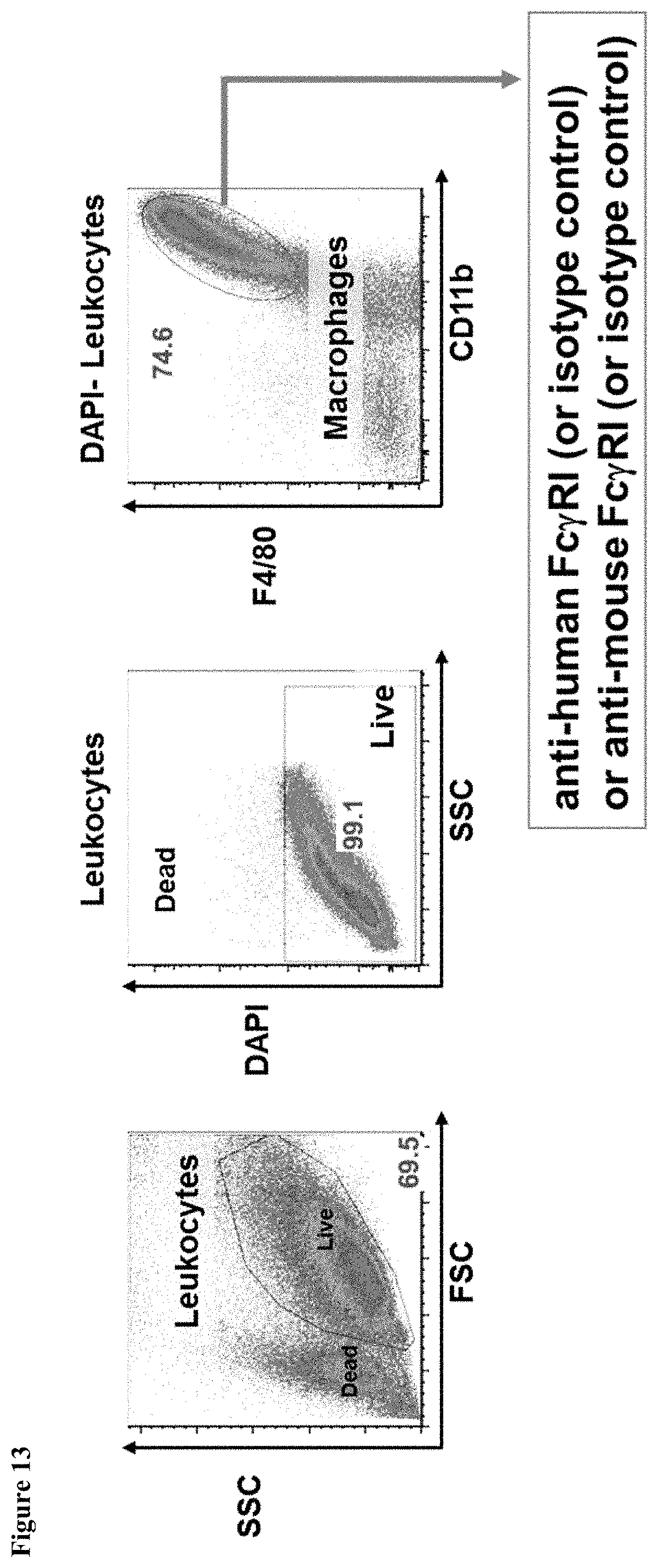
D00014
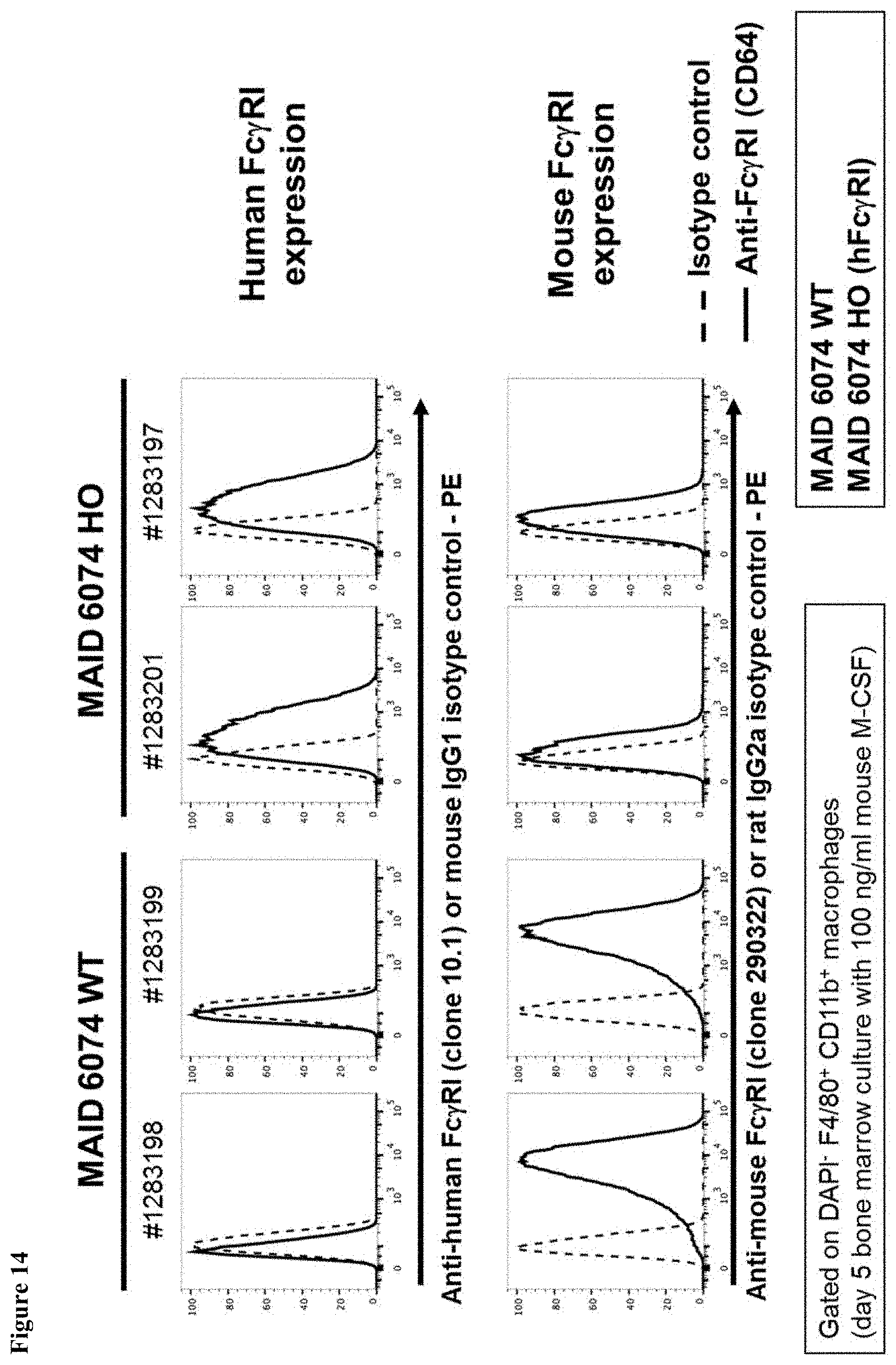
D00015
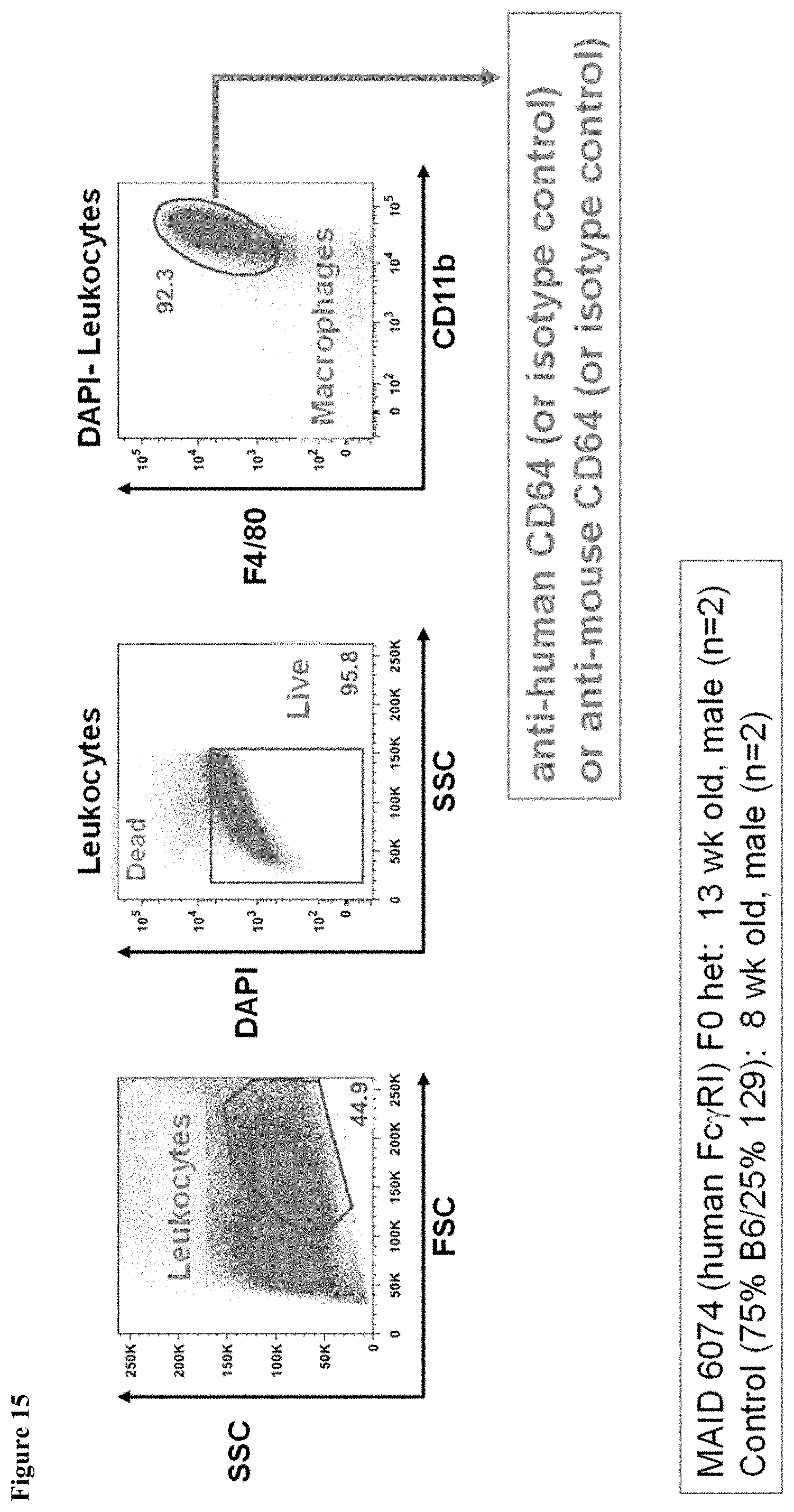
D00016
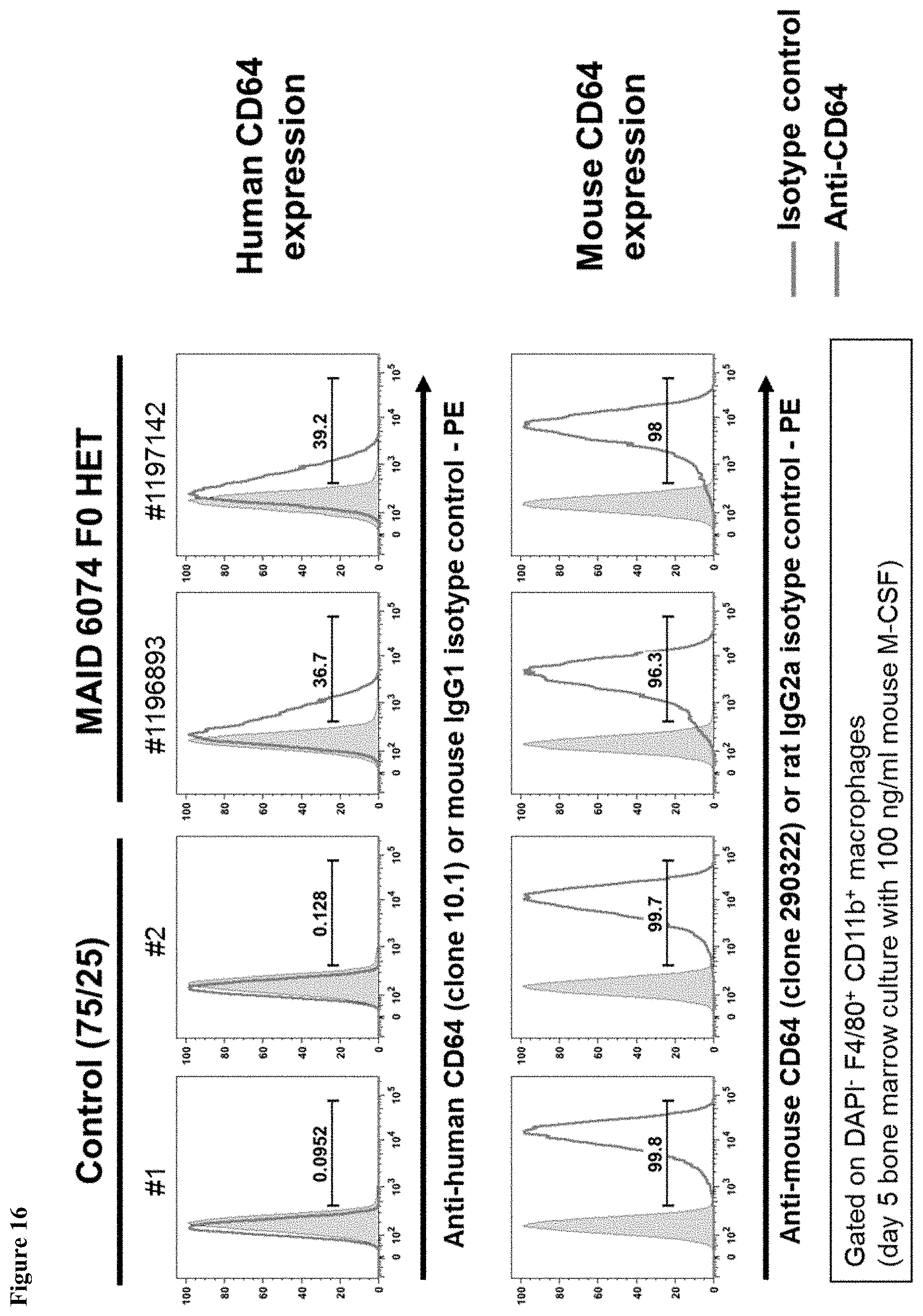
D00017
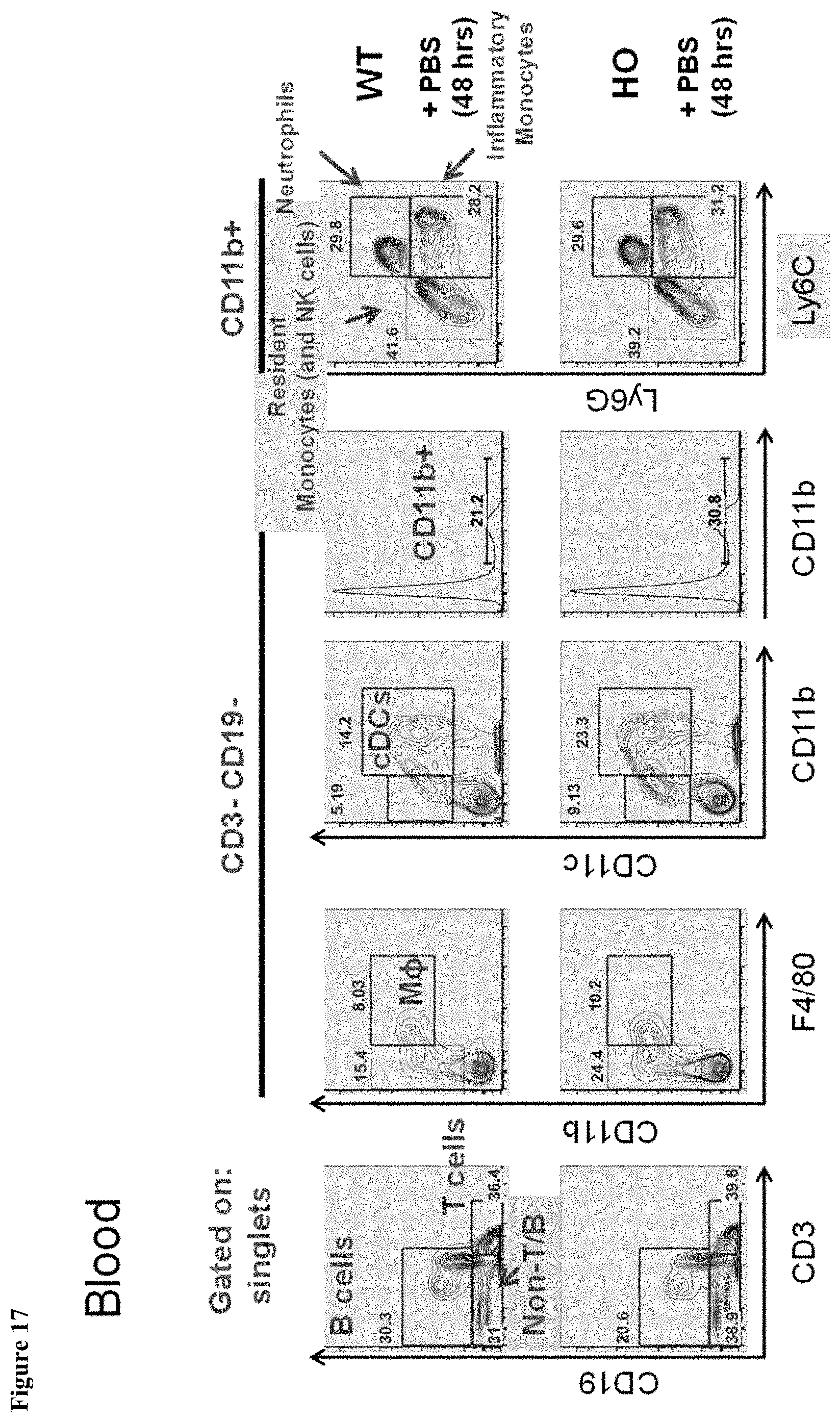
D00018
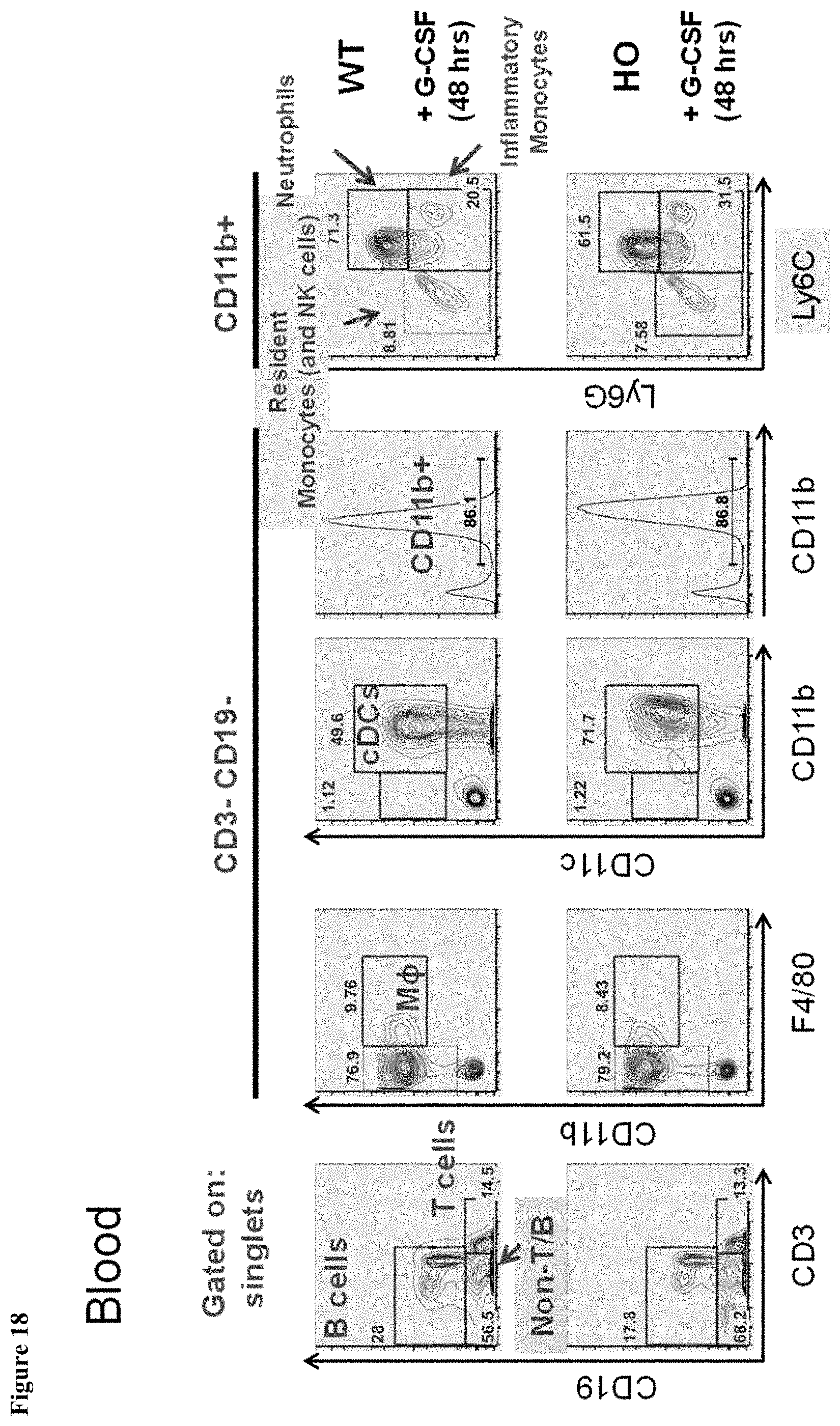
D00019
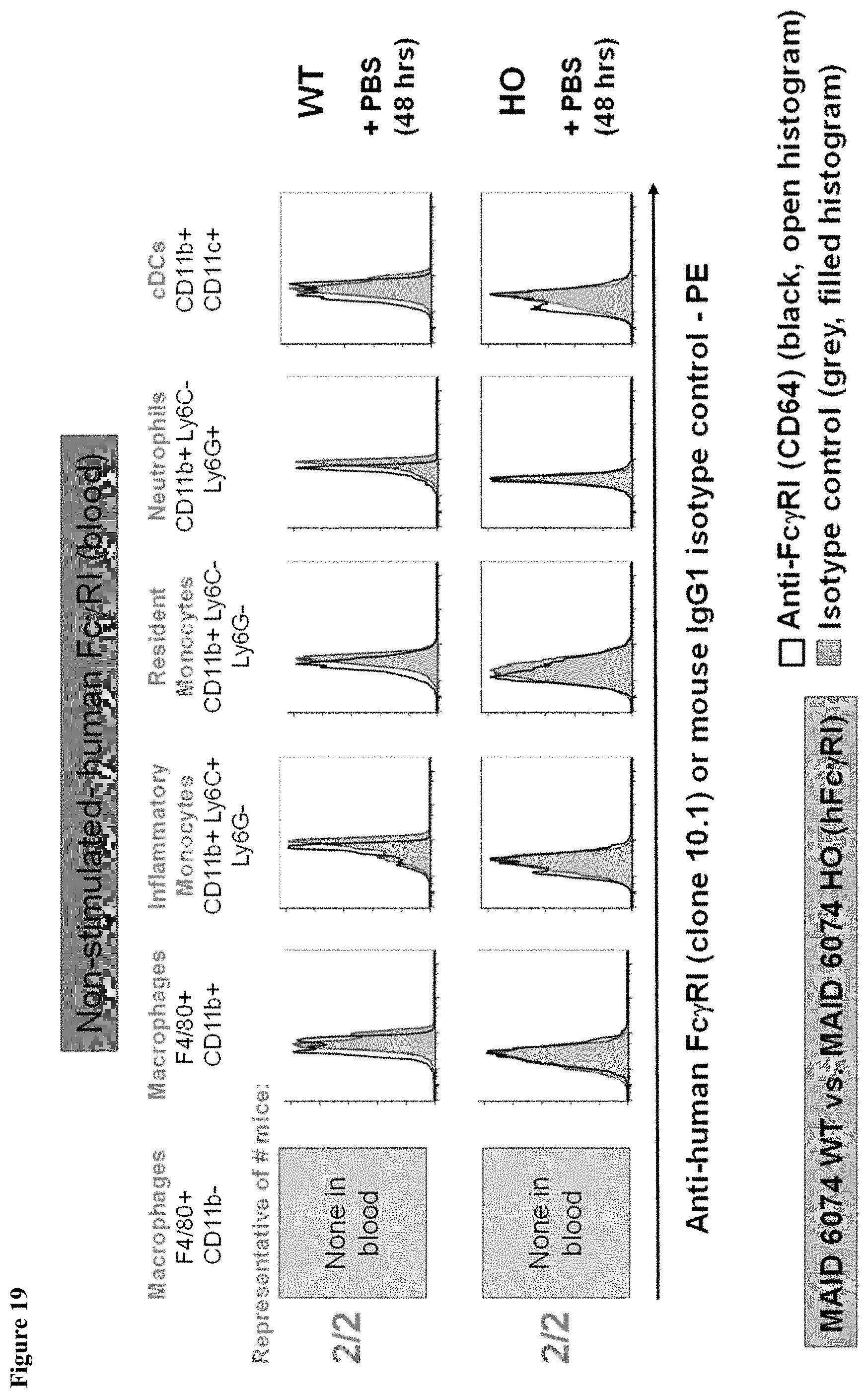
D00020
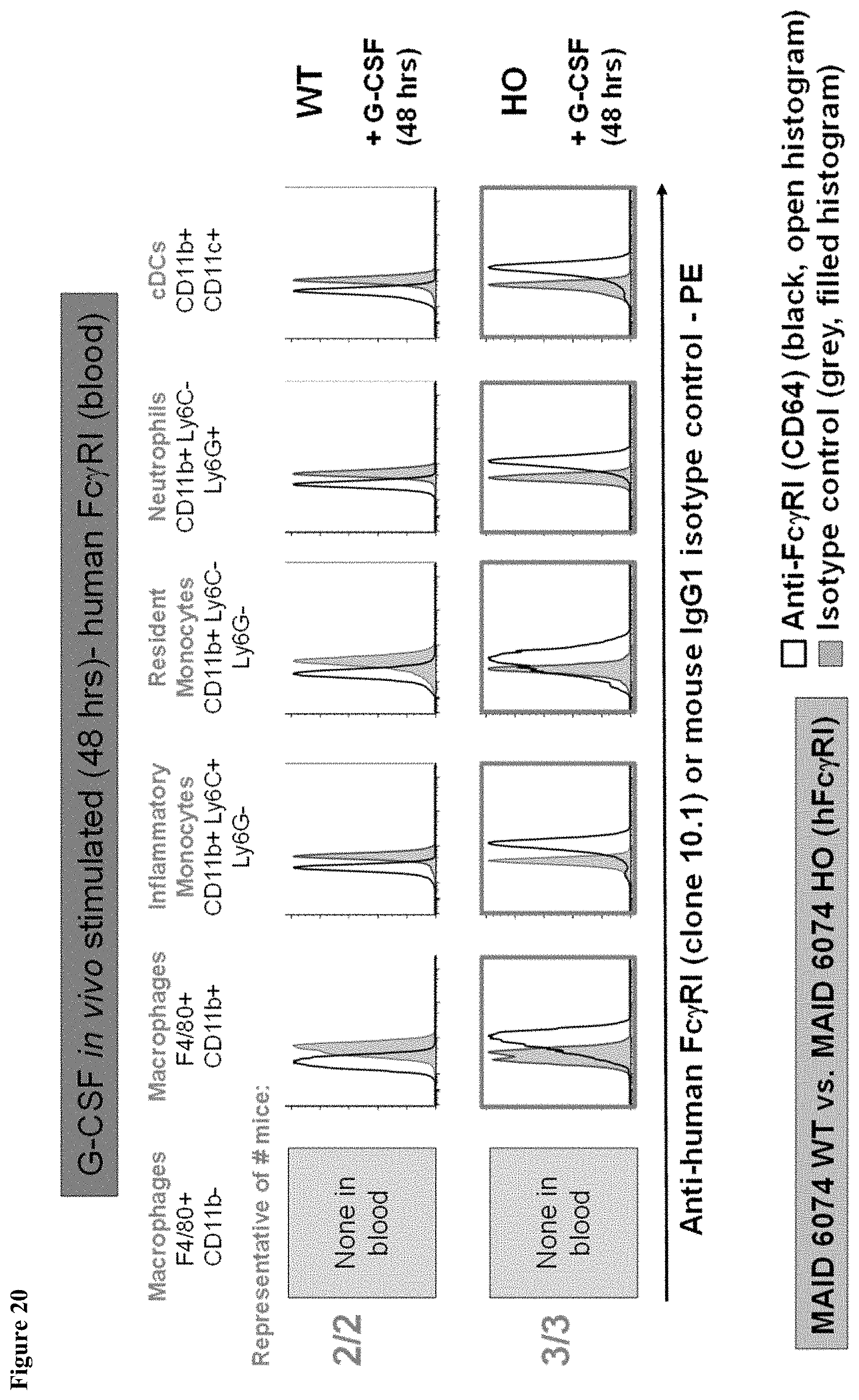
D00021
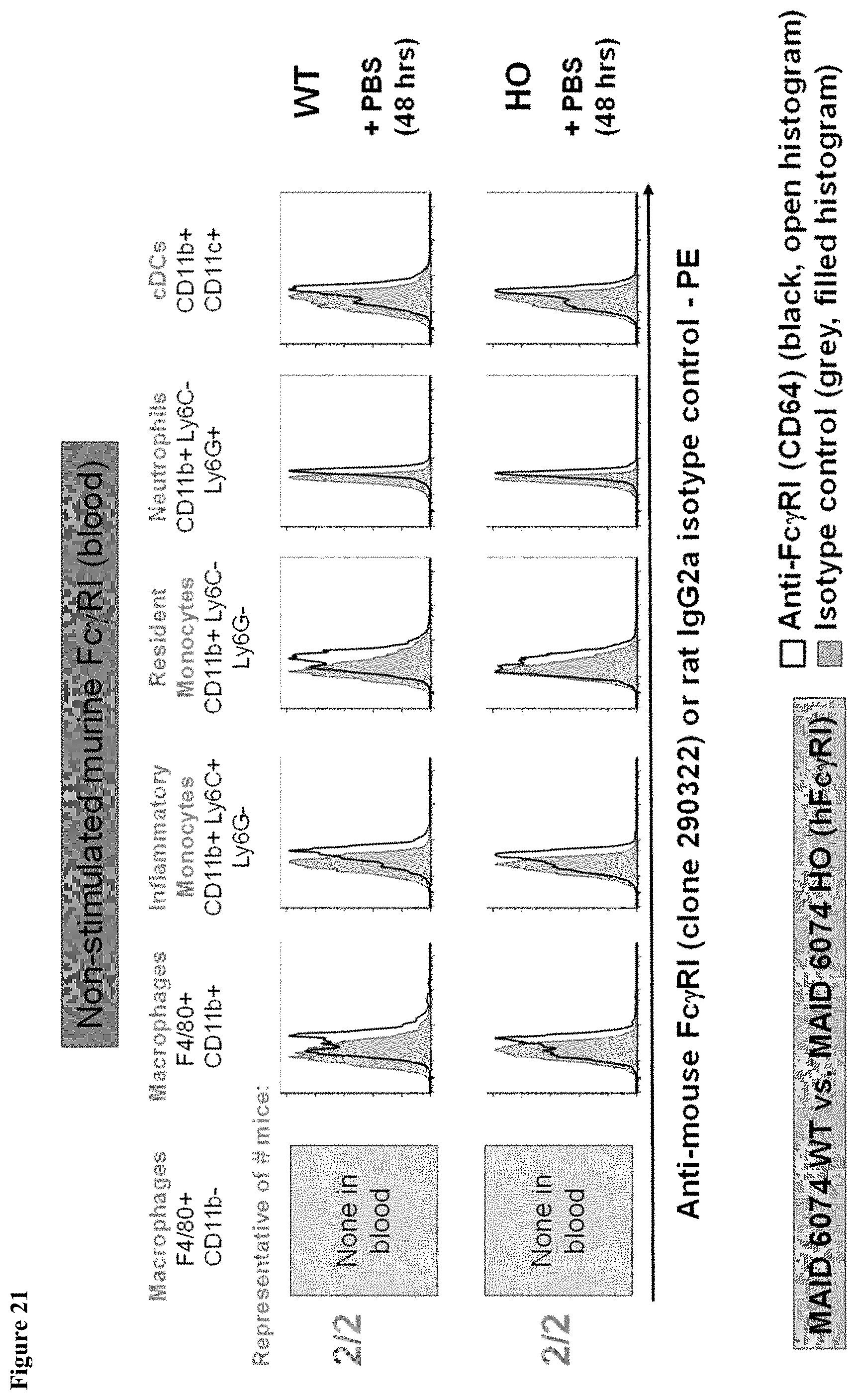
D00022
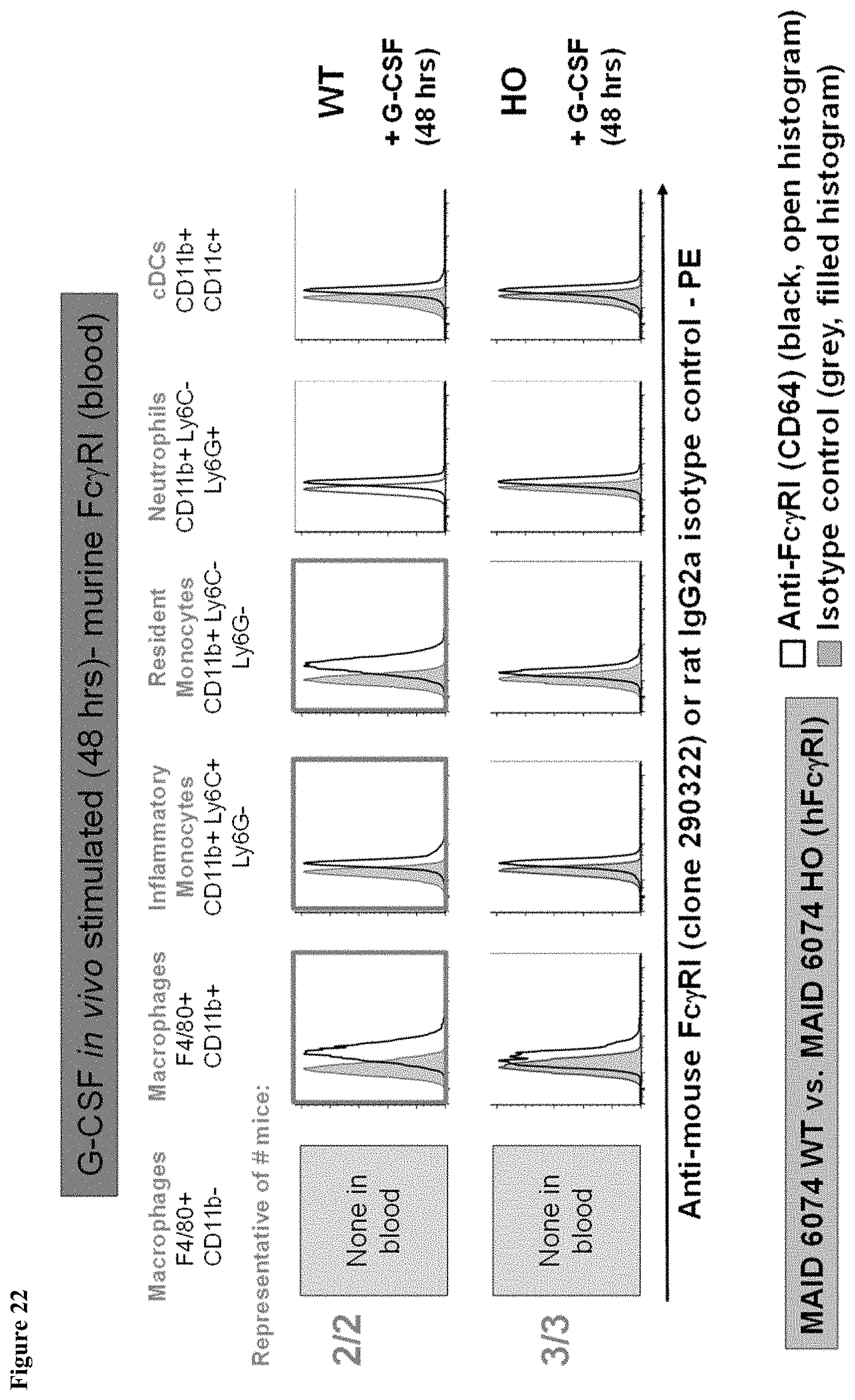
D00023
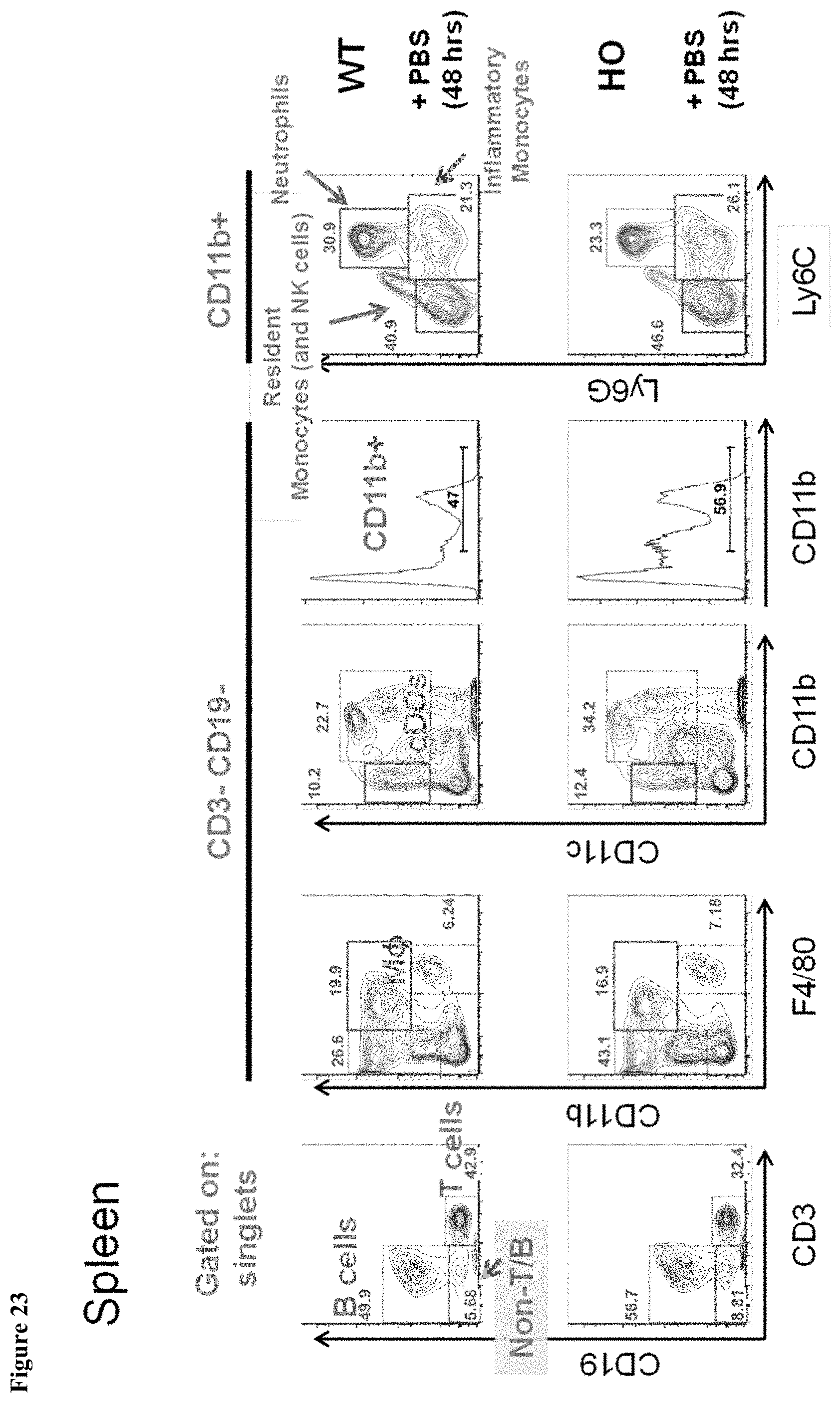
D00024
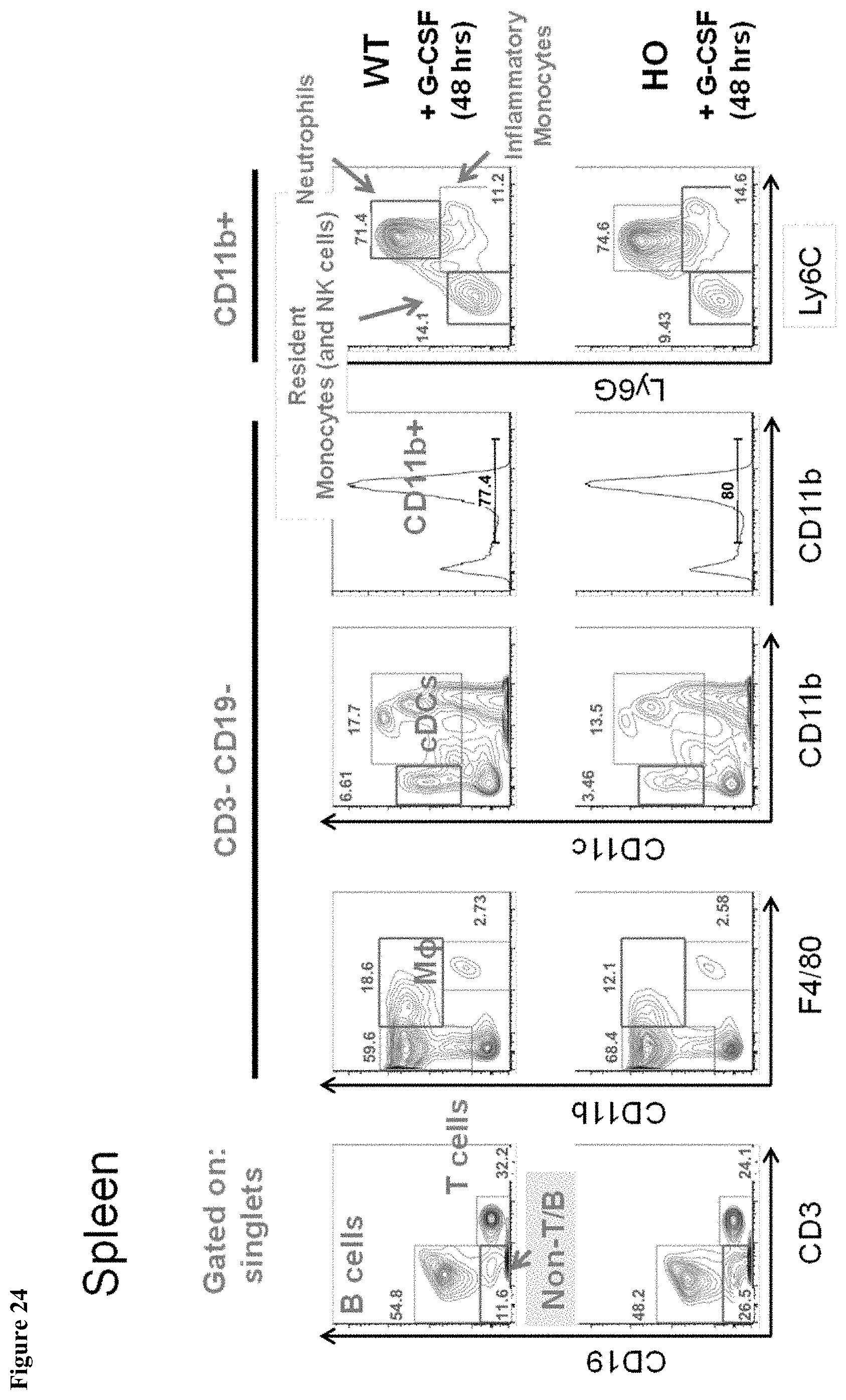
D00025
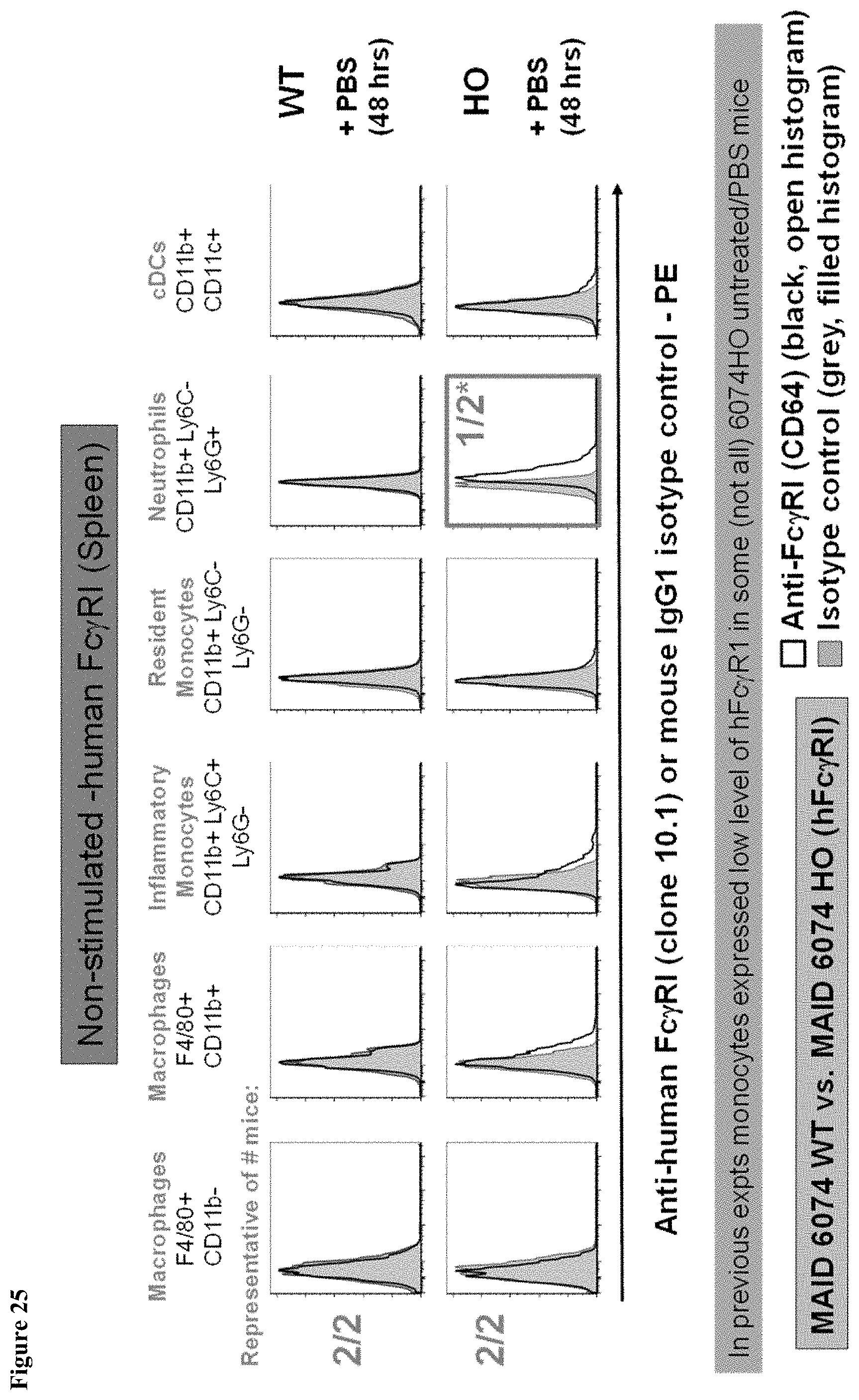
D00026
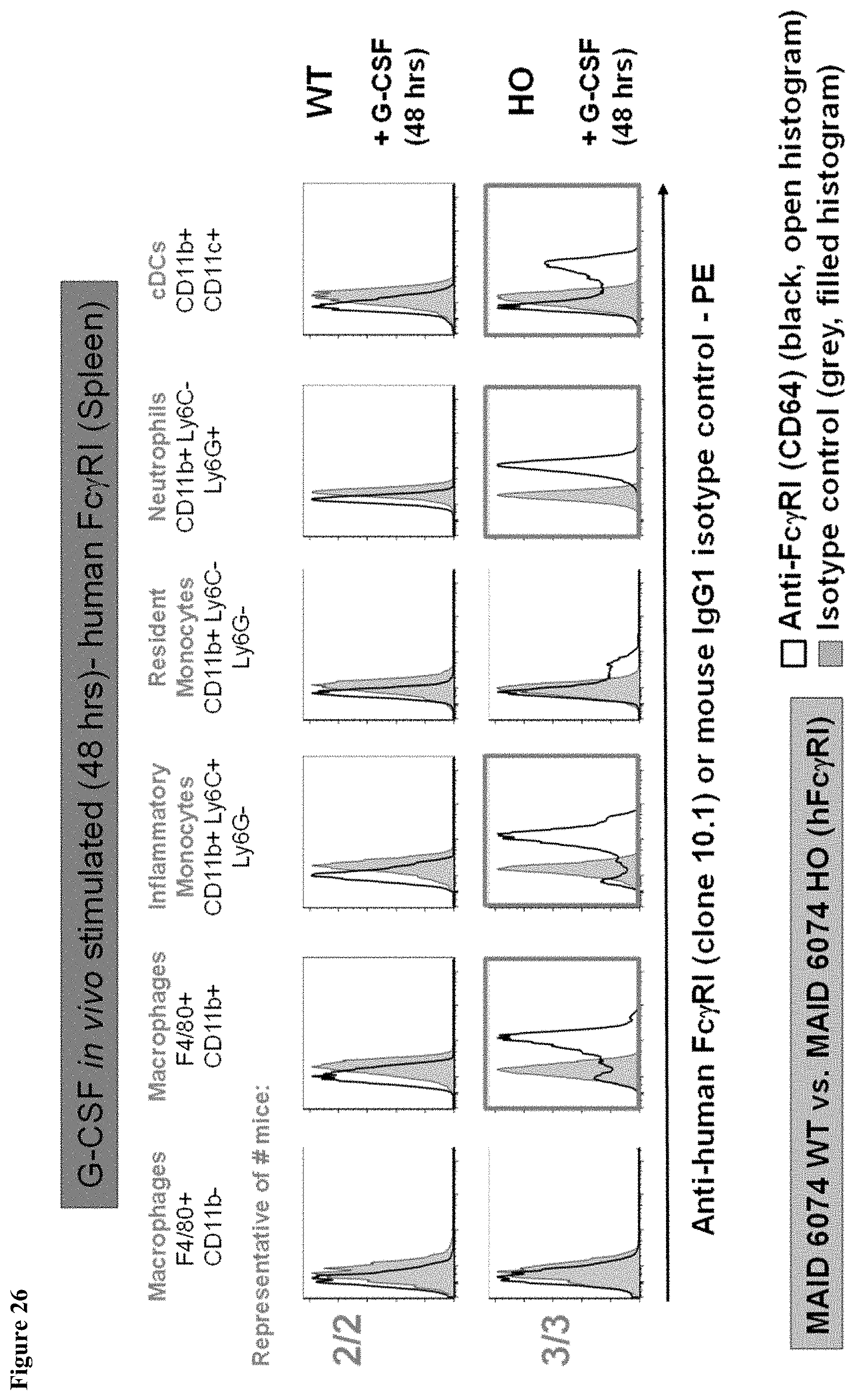
D00027
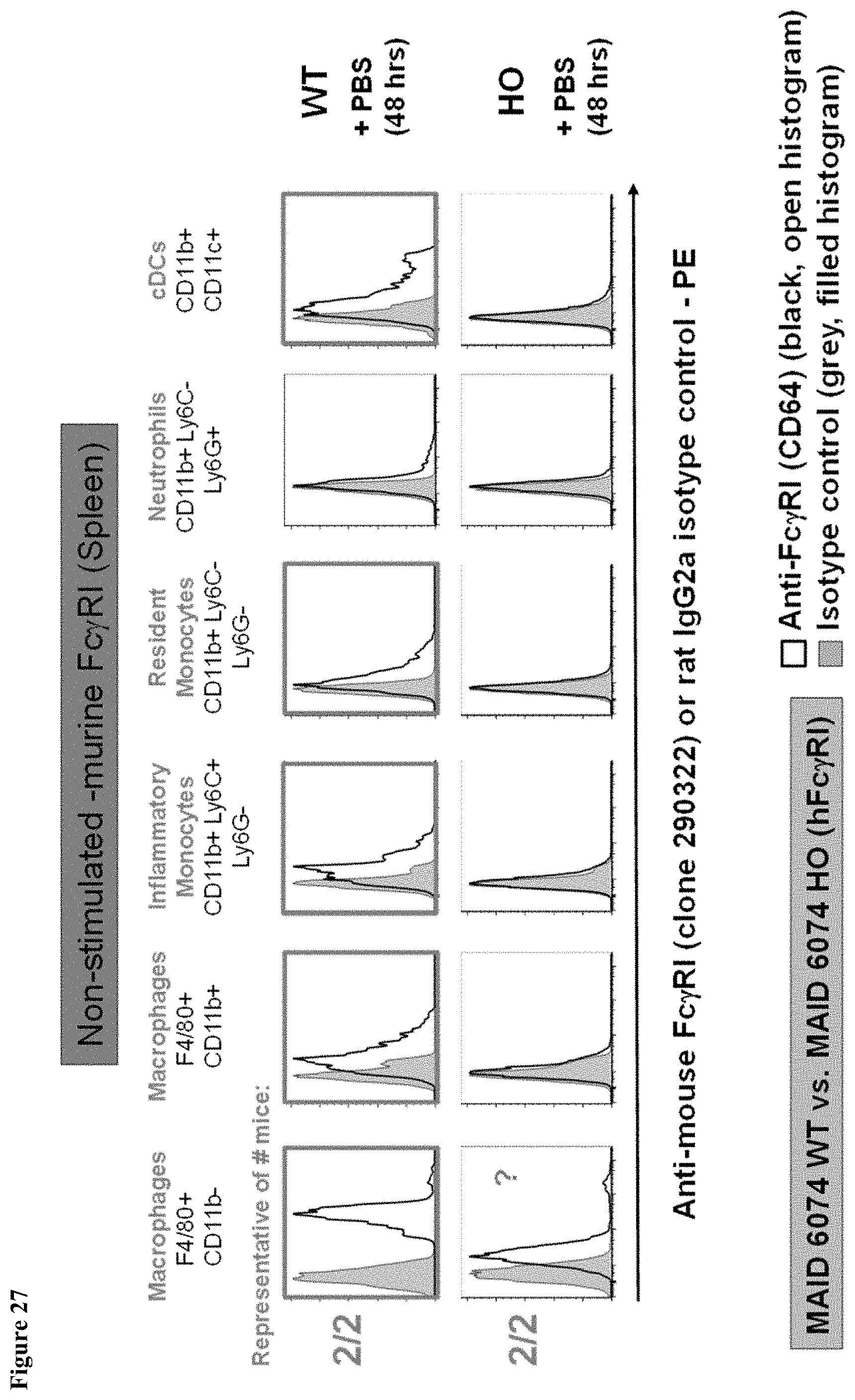
D00028
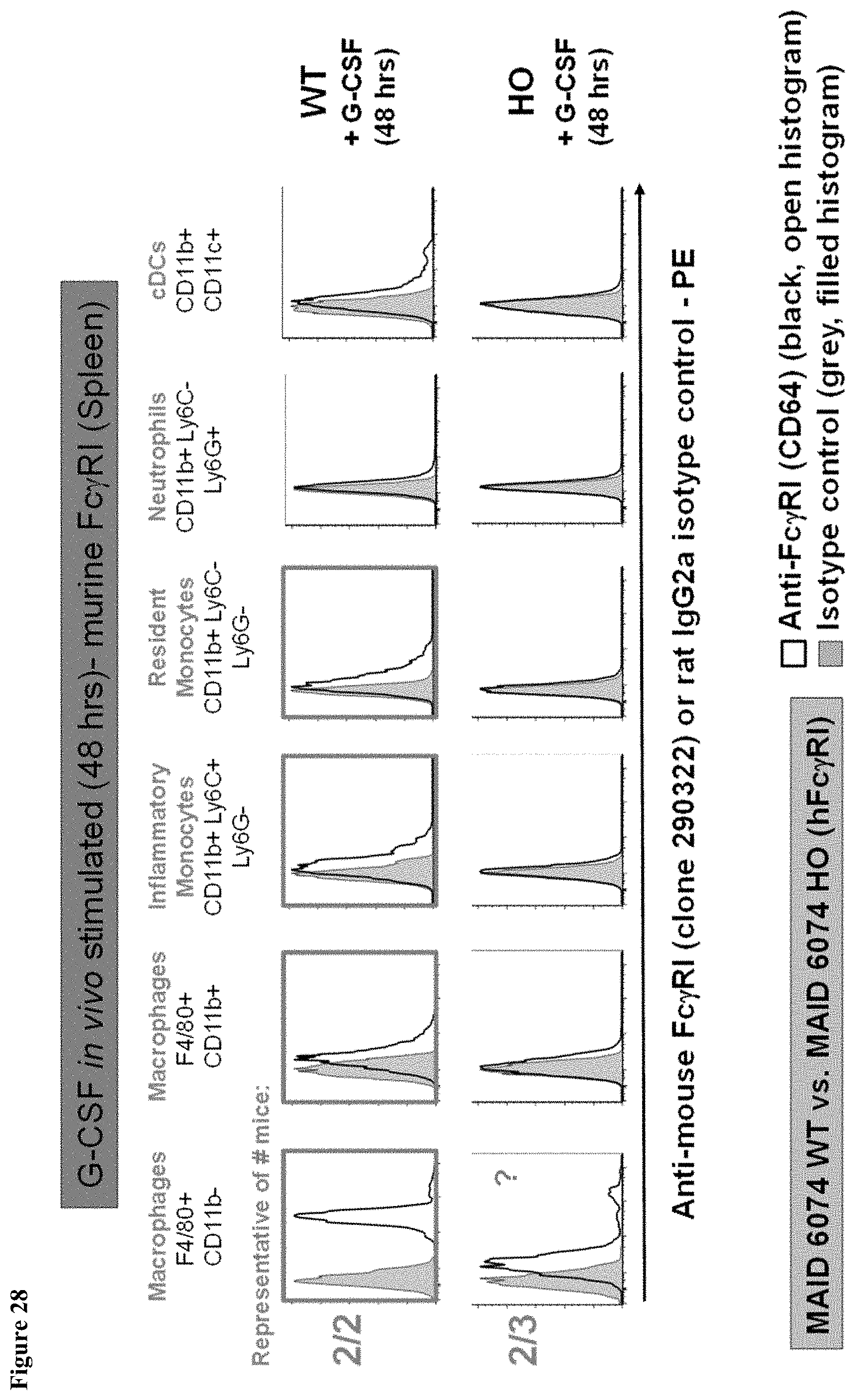
D00029
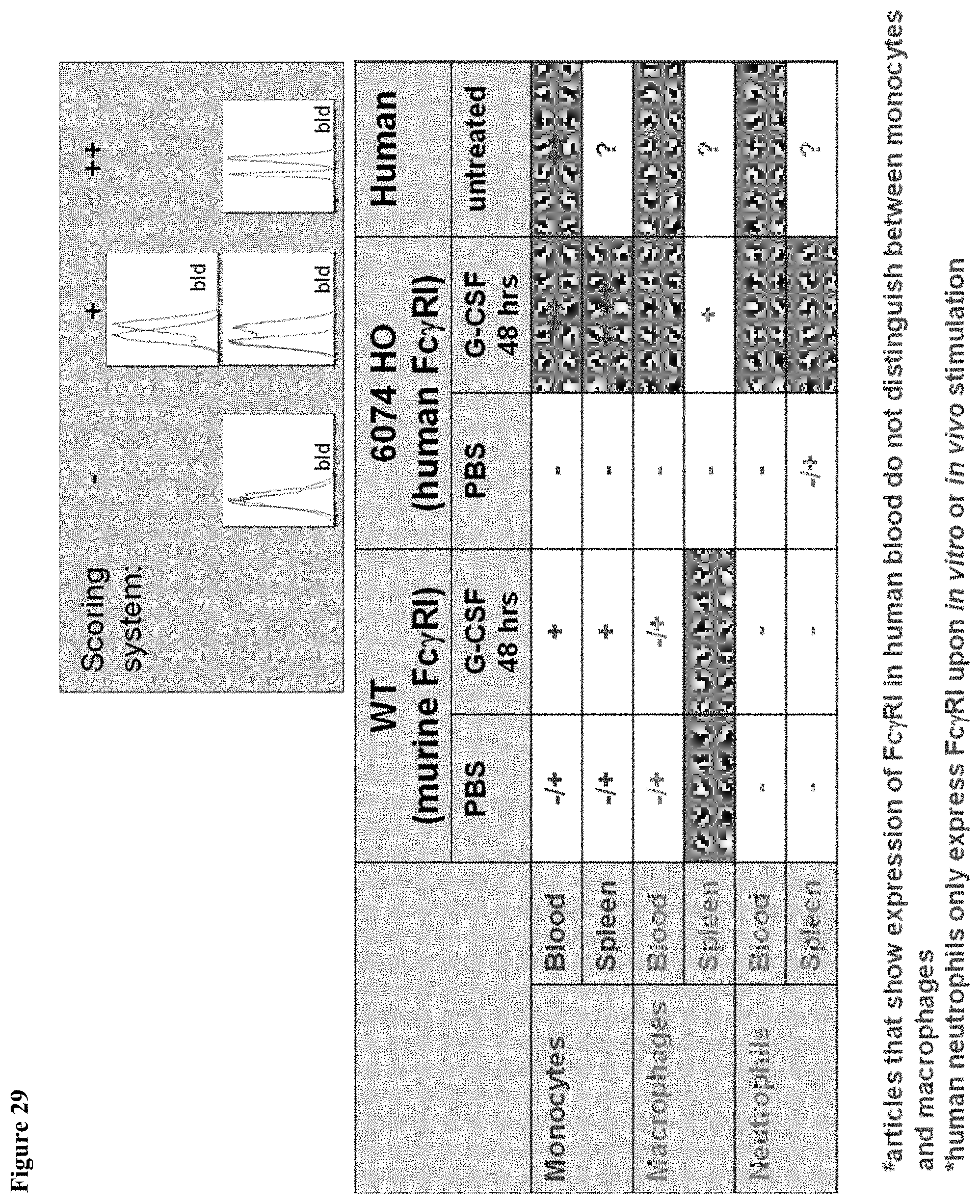
D00030
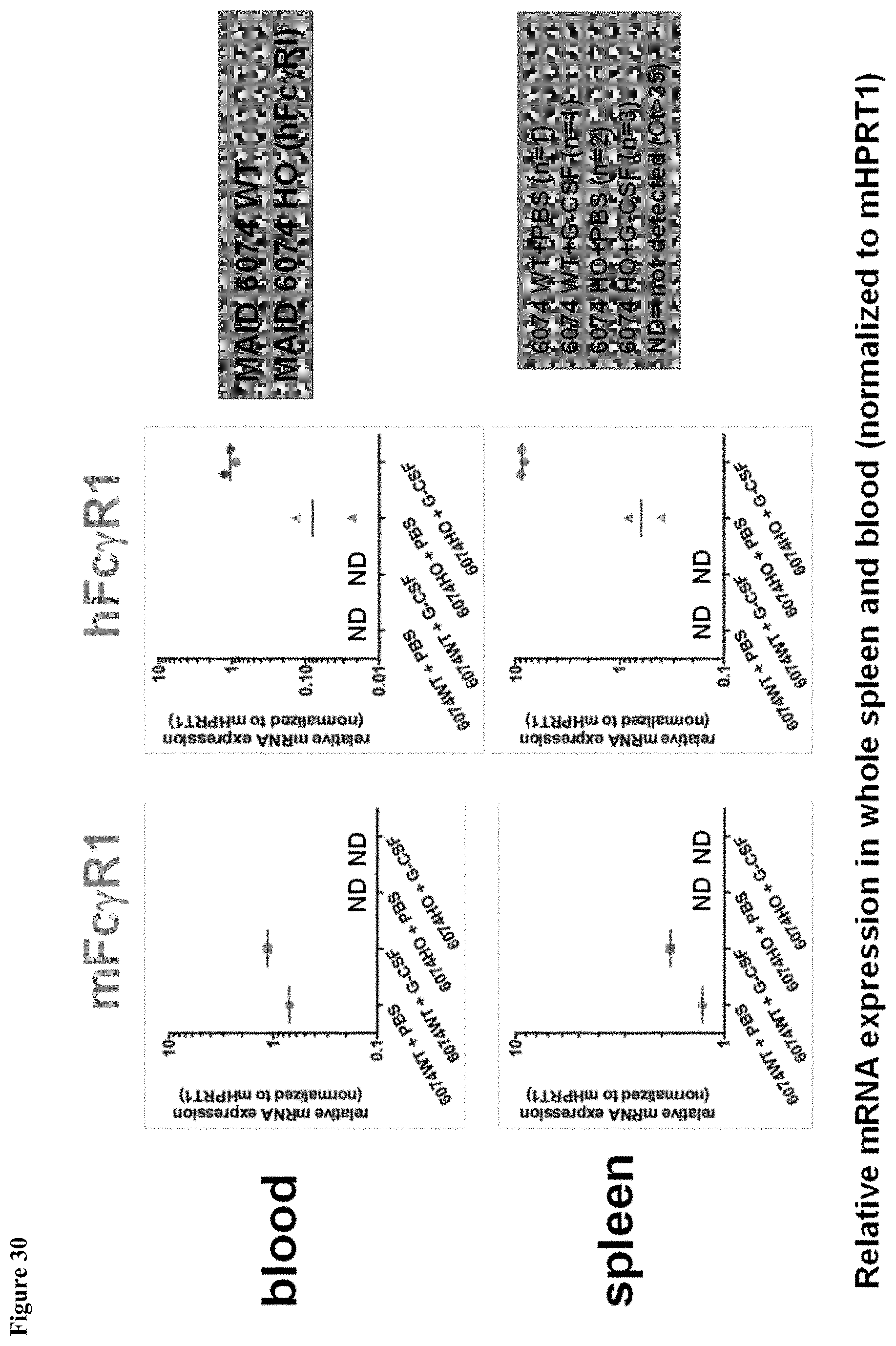
D00031
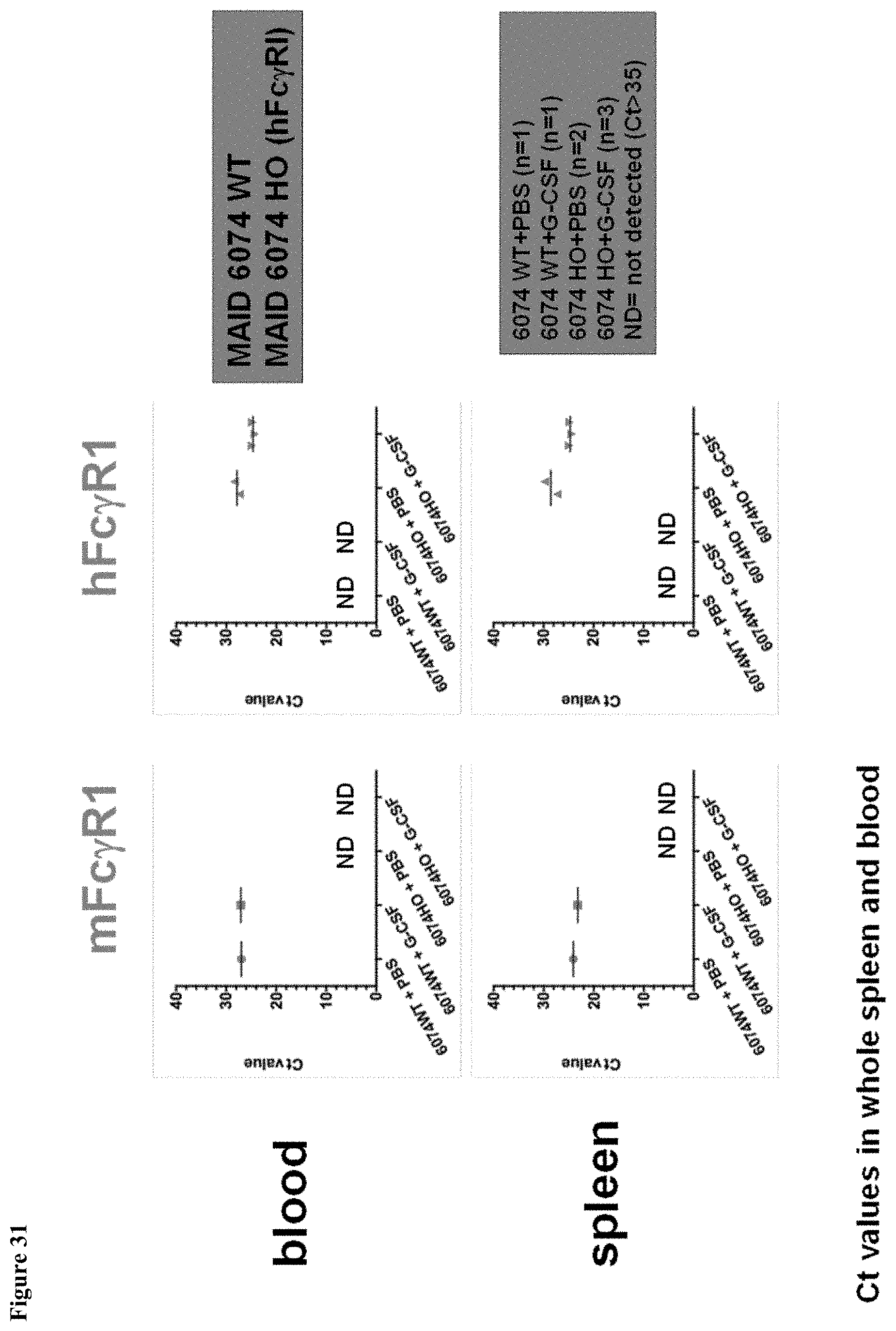
D00032
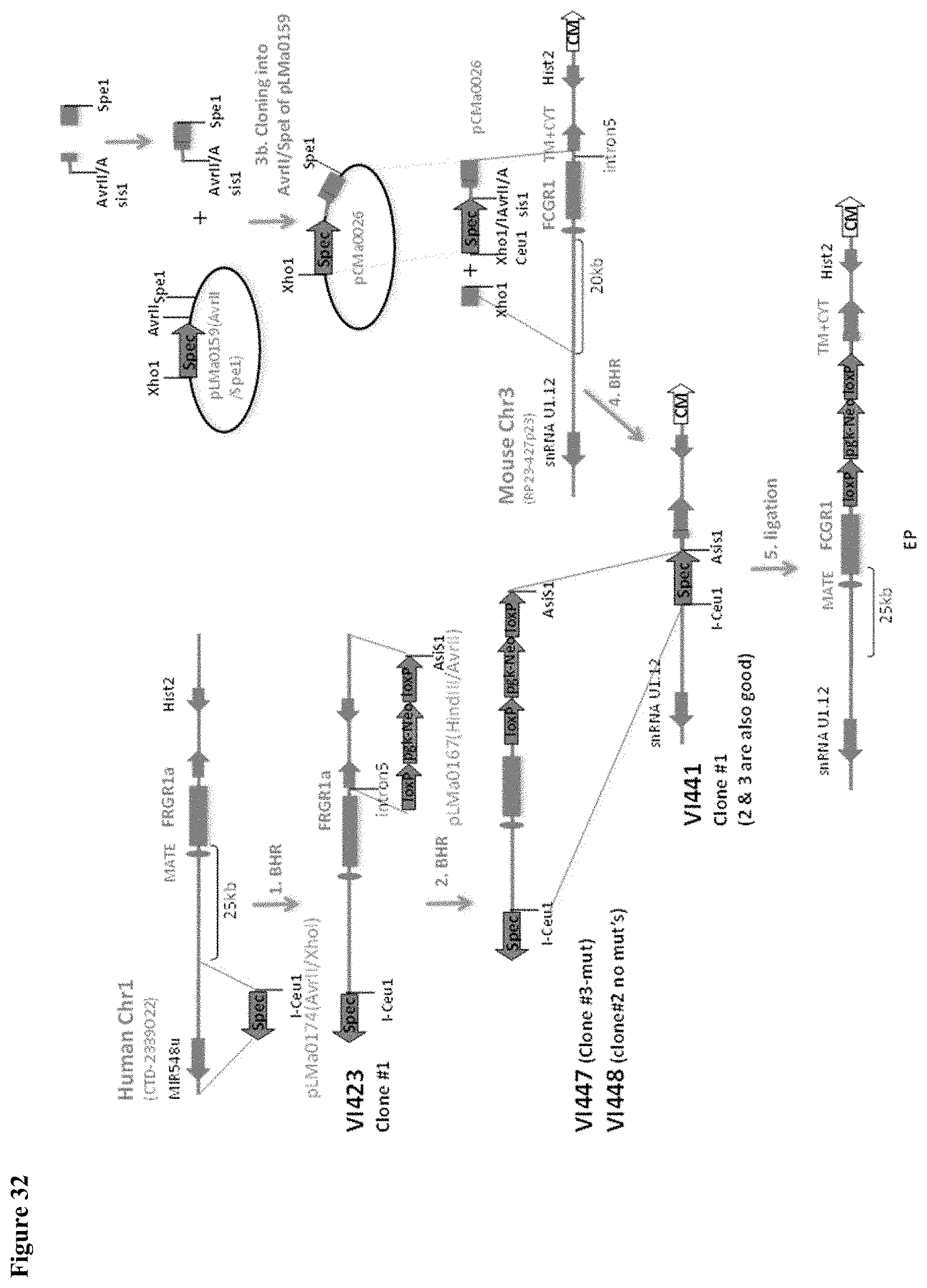
S00001
XML
uspto.report is an independent third-party trademark research tool that is not affiliated, endorsed, or sponsored by the United States Patent and Trademark Office (USPTO) or any other governmental organization. The information provided by uspto.report is based on publicly available data at the time of writing and is intended for informational purposes only.
While we strive to provide accurate and up-to-date information, we do not guarantee the accuracy, completeness, reliability, or suitability of the information displayed on this site. The use of this site is at your own risk. Any reliance you place on such information is therefore strictly at your own risk.
All official trademark data, including owner information, should be verified by visiting the official USPTO website at www.uspto.gov. This site is not intended to replace professional legal advice and should not be used as a substitute for consulting with a legal professional who is knowledgeable about trademark law.